A Japanese Journey
For both of us, who came of age in the go-go ‘80s when Japan’s economy was booming and the country took over both U.S. pop culture and tourism, the country had long been a destination we dreamed of one day exploring. While Martin had visited Tokyo a couple of years ago for client meetings and Trey had traveled in and out of Narita International Airport on numerous business trips to Asia, neither of us had yet had the opportunity to truly explore the Land of the Rising Sun. From its ancient imperial history and Zen Buddhist traditions to its sprawling urban cityscapes and soaring mountain peaks, we were very much looking forward to our mid-June Japan journey—the first week to be spent exploring the country and the second, volunteering on a progressive organic farm.
LOST IN TRANSLATION
But before we arrived, we had much planning to do, and with as much excitement as we had for Japan, we weren’t prepared for the logistical headache this developed nation would prove to navigate. Between us, we have traveled to more than 50 countries and handled the challenges of foreign lands fairly well, but planning for Japan was like trying to run Macintosh applications on a Windows-only PC. Everything from ordering and collecting our Japan Rail passes to making dinner reservations and hotel bookings required a bit of extra effort, time and patience. For a nation obsessed with the West, there were surprisingly very little English-language planning resources, tourism direction, or even in-person communication. And what shocked us even more given our digital era, was the amount of process and paperwork required for everything.
However, with the country’s small landmass and dense population—made even more intense by the nearly 70% of uninhabitable mountainous terrain that has pushed most of its citizens to the southern coast of the main island—, it makes sense that the nation relies on rules and procedure, essential to organizing everyone and keeping the wheels turning with so many living people in such little space. And boy, does it function. Everything in Japan is pristine, we were impressed that there wasn’t a scrap of litter in the entire country; everything runs on time, we were always confident that buses and trains would depart precisely on schedule; and everything is orderly, we were amazed by the calm amidst the chaos—for instance, the painted lines that directed people on sidewalks or lined them up to wait for the train. After having spent nearly five months in the ‘wild west’ of Southeast Asia, were we giddy over the functionality of Japan.
Along with language, another aspect of Japan for which we weren’t very prepared was the limitations of the cuisine given Trey’s gluten intolerance. Unlike in Southeast Asia where rice is the base for most all dishes, including noodles and rolls, in Japan, from udon to ramen, wheat rules the menu. Yet with very few menus in English, it was often challenging to understand exactly what we were ordering, not to mention the primary ingredient. With very careful translation, we did manage to find soba noodles made from pure buckwheat, which is gluten-free, but mostly we were careful to stick to obvious GF dishes such as melt-in-your-mouth sushi and savory grilled yakatori. Given so much variety in Japanese cuisine, we certainly didn’t go hungry or get too lost in translation during our travels.
TRACING JAPAN’S GOLDEN TRIANGLE
Konnichiwa Tokyo
Despite our previous weekend in jam-packed Hong Kong, which in some ways served as our reentry to civilization after the cocoon of Bali, we were still shocked as we deplaned in Tokyo, Japan’s capital city and the world’s most populous metropolitan area. People were everywhere, and signs in Japanese characters covered every available surface. With boxy Toyota taxis, retro push-button keypads on ATMs, primary-colored and cluttered advertising, and the formal business attire of everyone around us, we couldn’t help but feel that Tokyo was built in the 1980s as a city of the future and hadn’t changed much in the years since.
Our first morning in Tokyo, we started by grabbing coffee and staring out the big windows of Starbucks above the iconic Shibuya crossing. With a bird’s-eye view of the intense intersection, we were amazed at the number of people heading off in every direction. Fully caffeinated, we made our way (passing one of the last standing Tower Records stores!) to the otherworldly, verdant oasis of the Meiji Jingu, a shrine of the ancient Shinto religion, which has deep roots in Japanese life with values such as living in harmony with nature and having a sincere heart. This particular expansive shrine is in honor of the deified souls of Emperor Meiji and Empress Shoken and was dedicated in 1920.
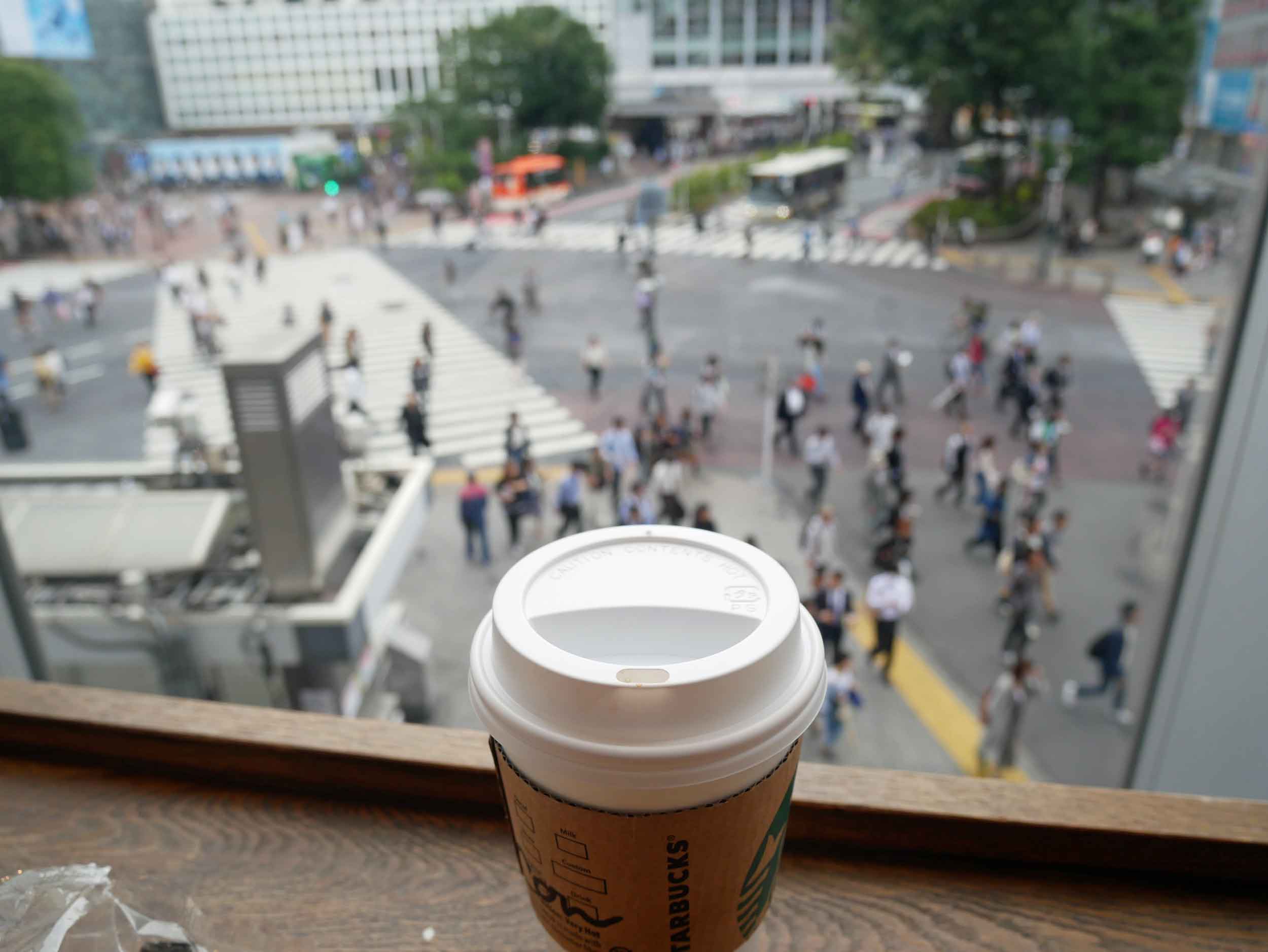

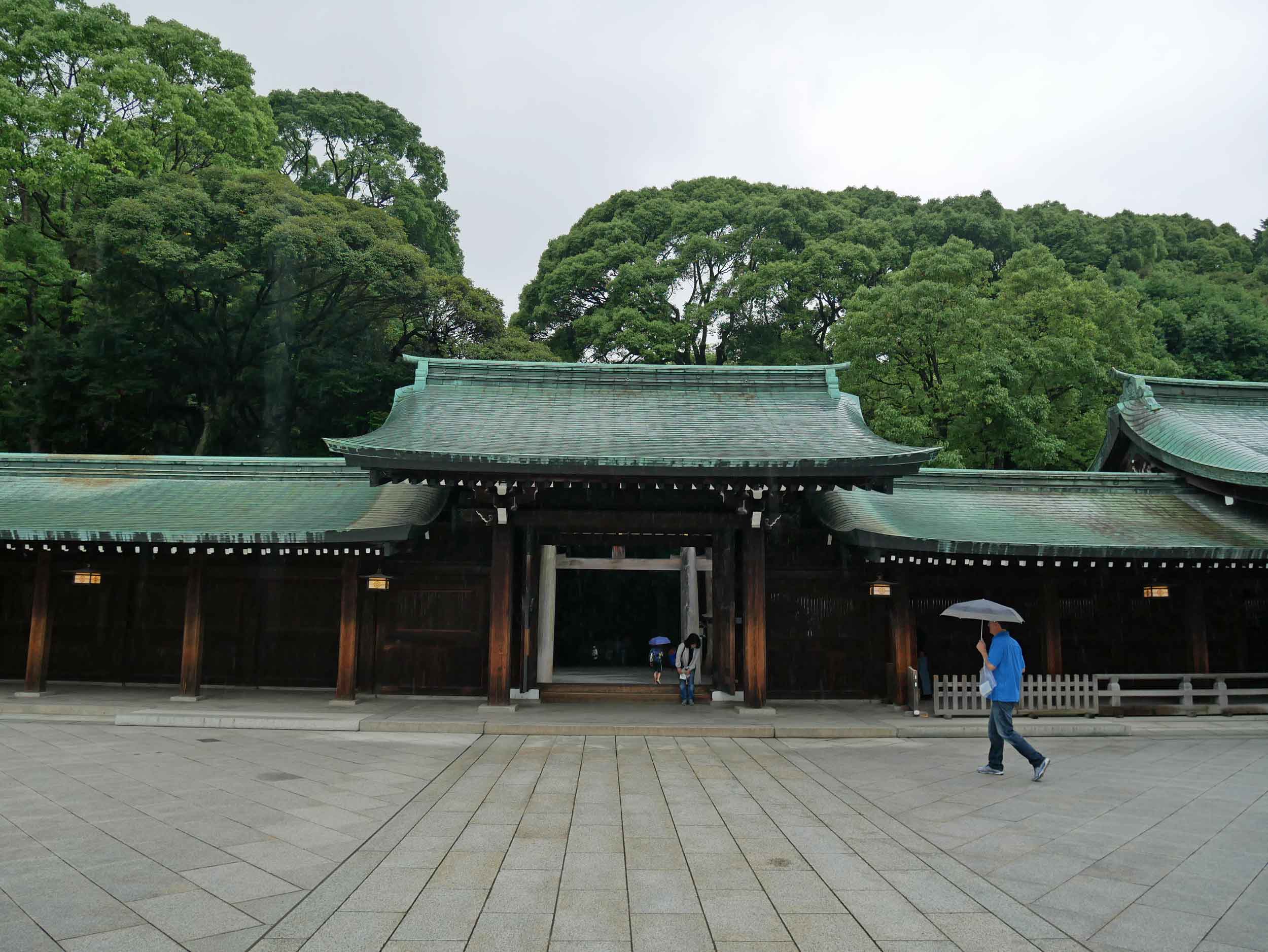
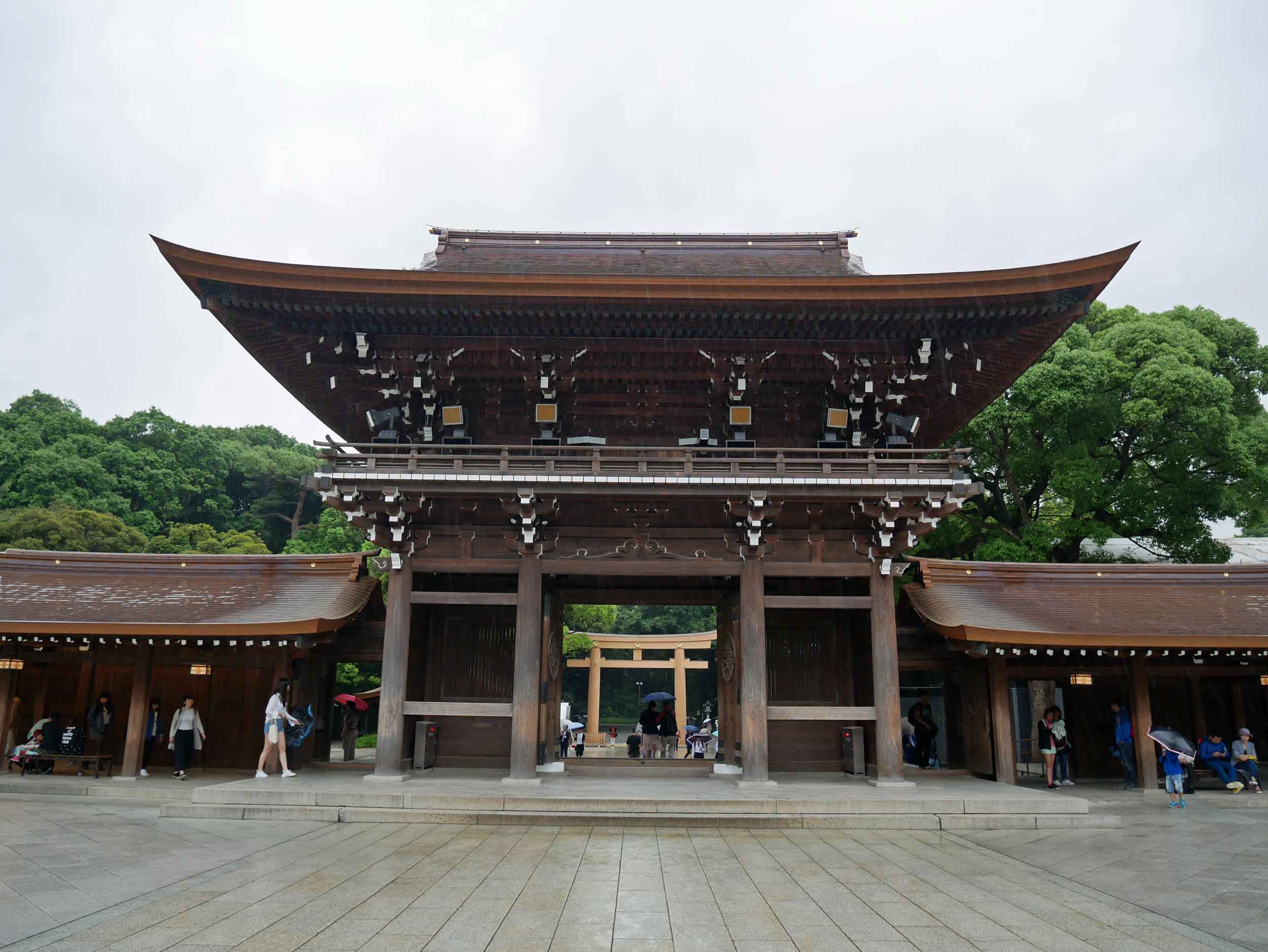

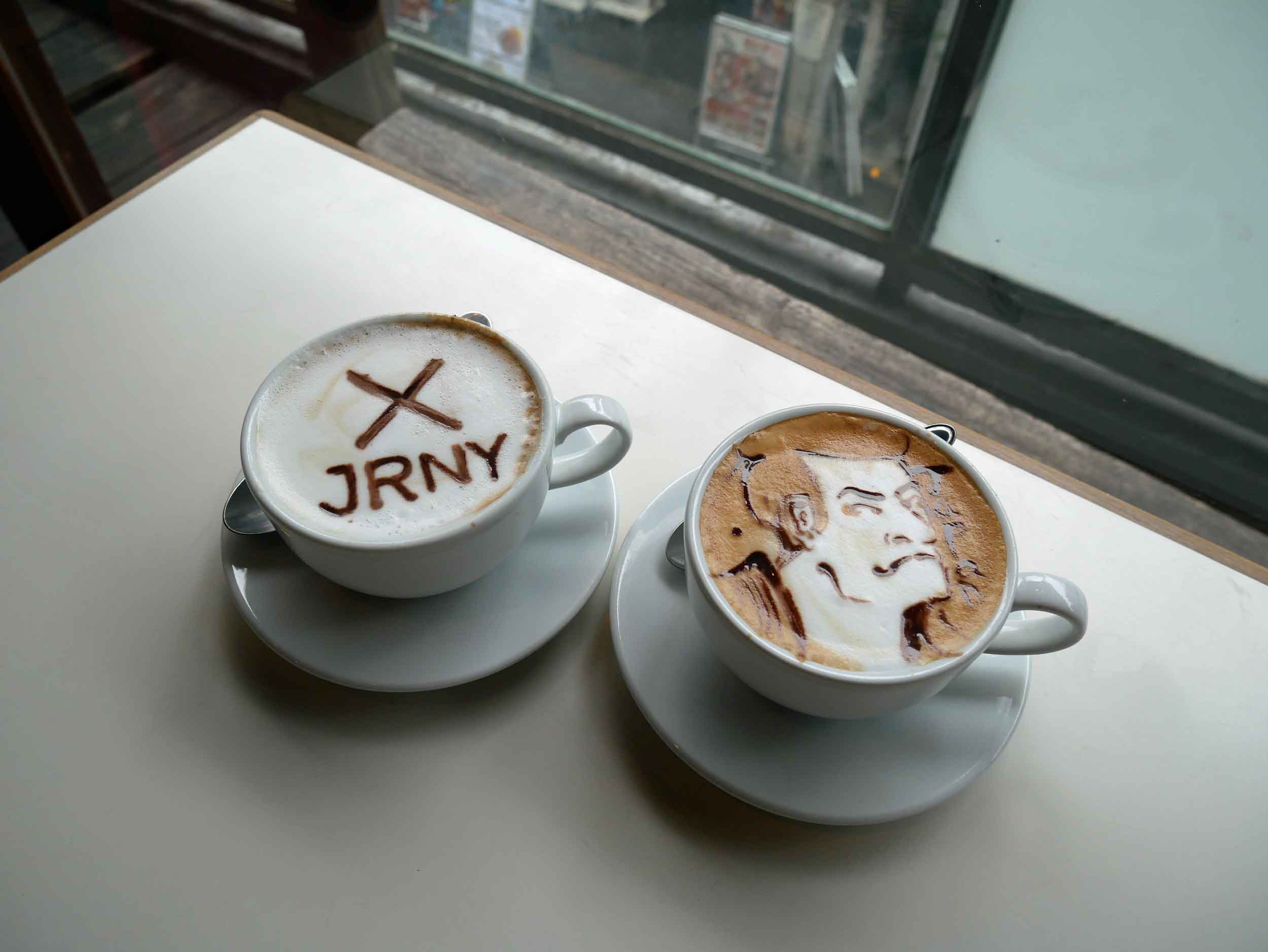
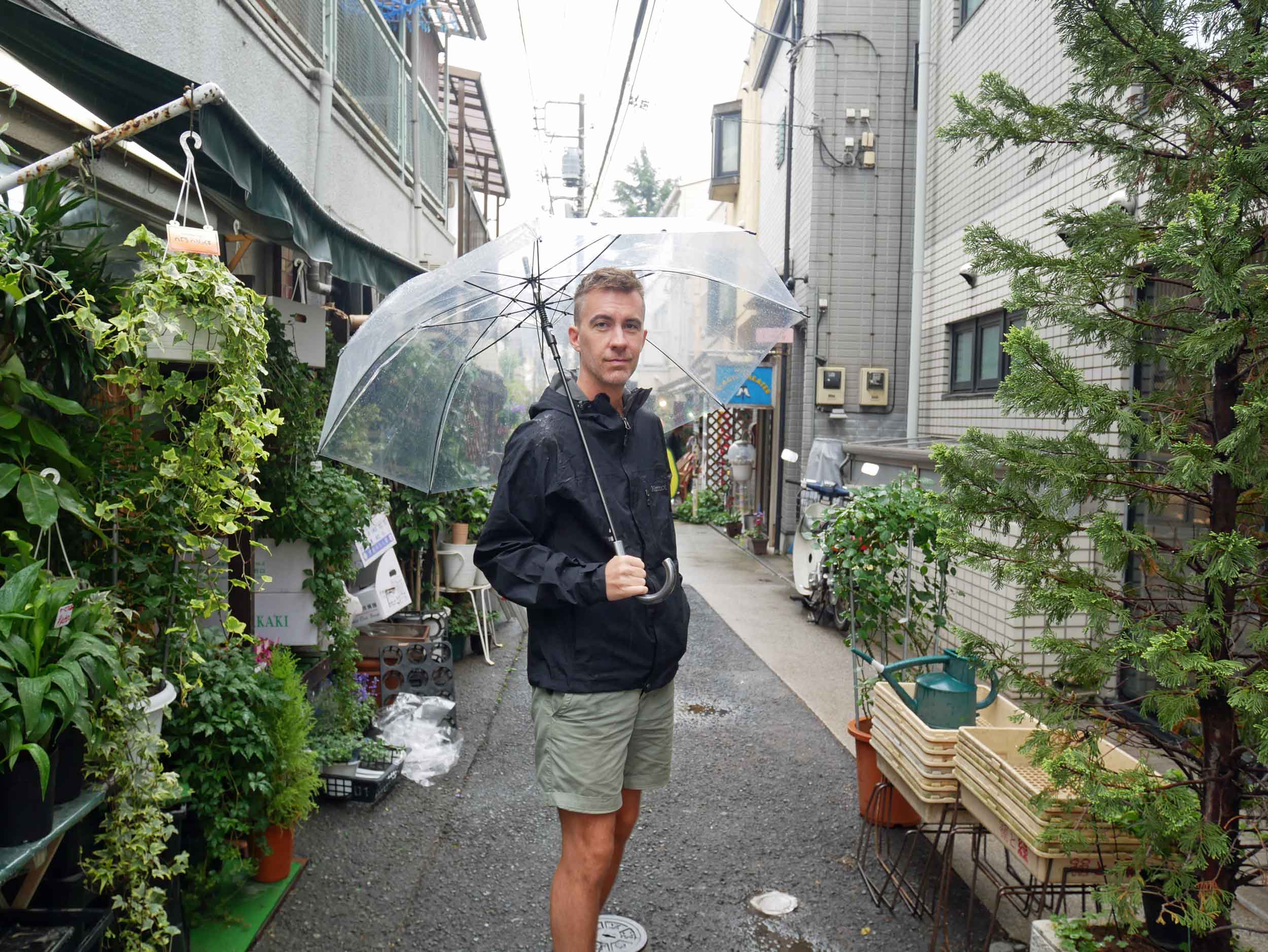
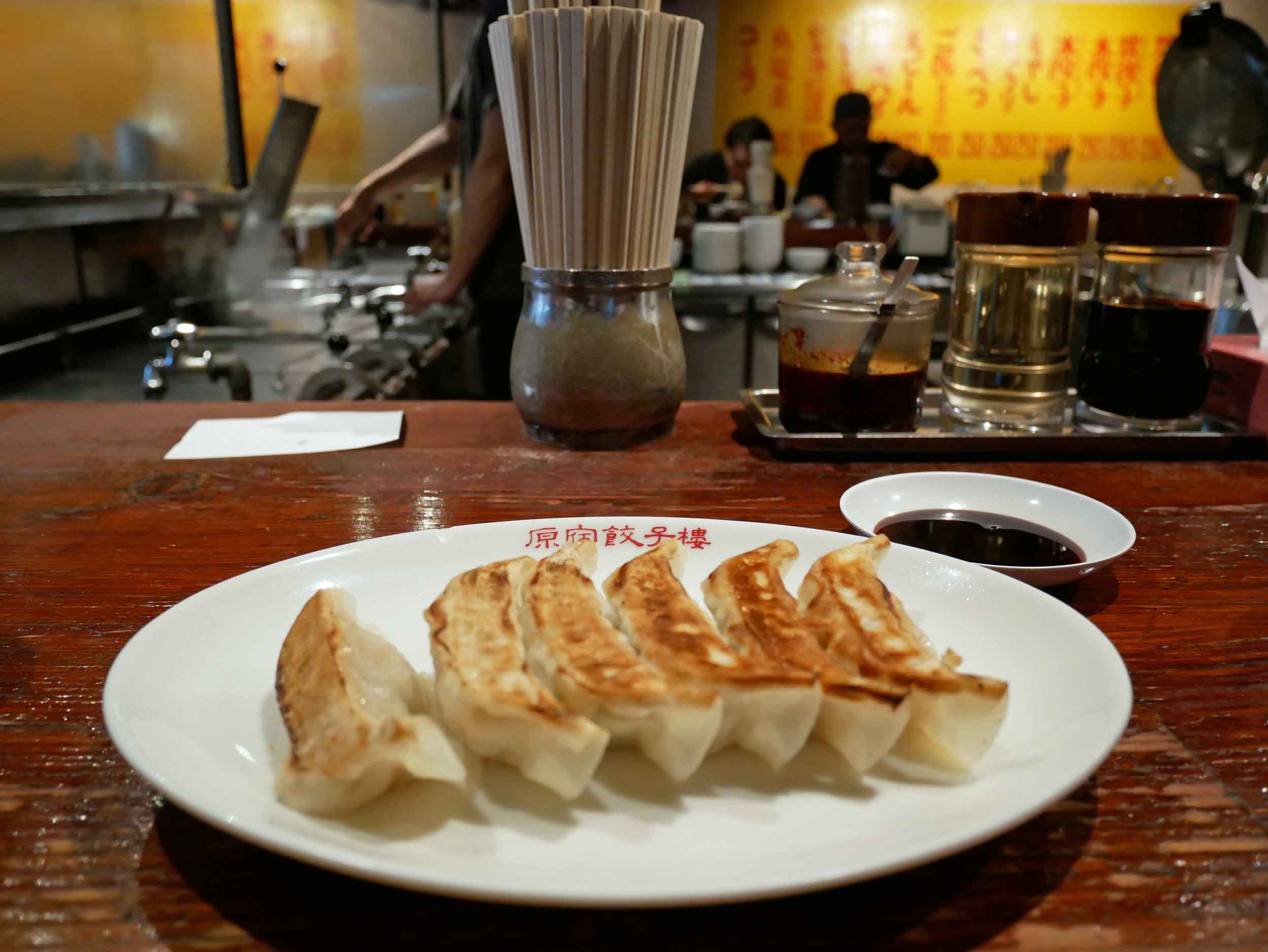
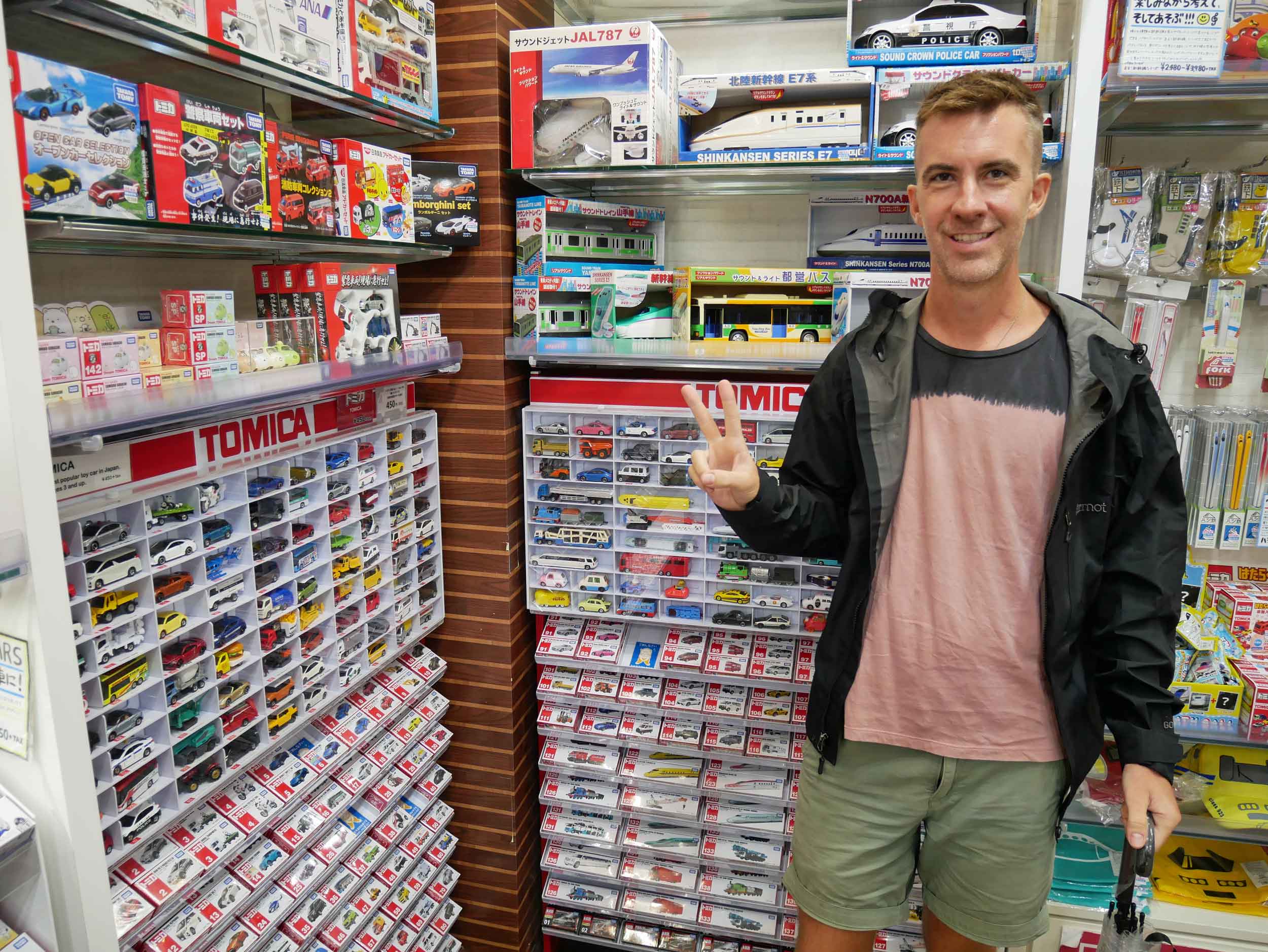
After getting caught in Japan’s infamous June tsuyu, or rainy season, we each made the practical purchase of the ubiquitous clear Tokyo umbrellas (funny to us because on a dreary day in New York City, it is a sea of black protection) and carried on to warm up and dry off over more caffeine, this time in the form of art at Reissue Coffee Art Café in the famed and quirky Harijuku neighborhood. After taking in all the wonderful weirdness of the neighborhood and enjoying a quick snack of fried dumplings and soup, we were taken back to our childhoods as we perused the various levels of giant toy store, Kiddy Land, which features entire floors dedicated to Lego, Snoopy, and you guessed it, Hello Kitty. A trip to Tokyo wouldn’t be complete without plucking freshly made sushi off a conveyor belt, so we enjoyed our second lunch of the day, and then made our way to Shibuya’s underground Tokyu Food Show where we ogled all of the pomp, presentation and perfect products and produce on display under glass, aisle after aisle. We managed to squeeze in one more round of sushi before heading to our fourth and final meal of the day in a small yakatori restaurant where English was limited, and so, we mostly pointed to the various meats on the grill for dinner. Have we mentioned how much we love Japanese food?
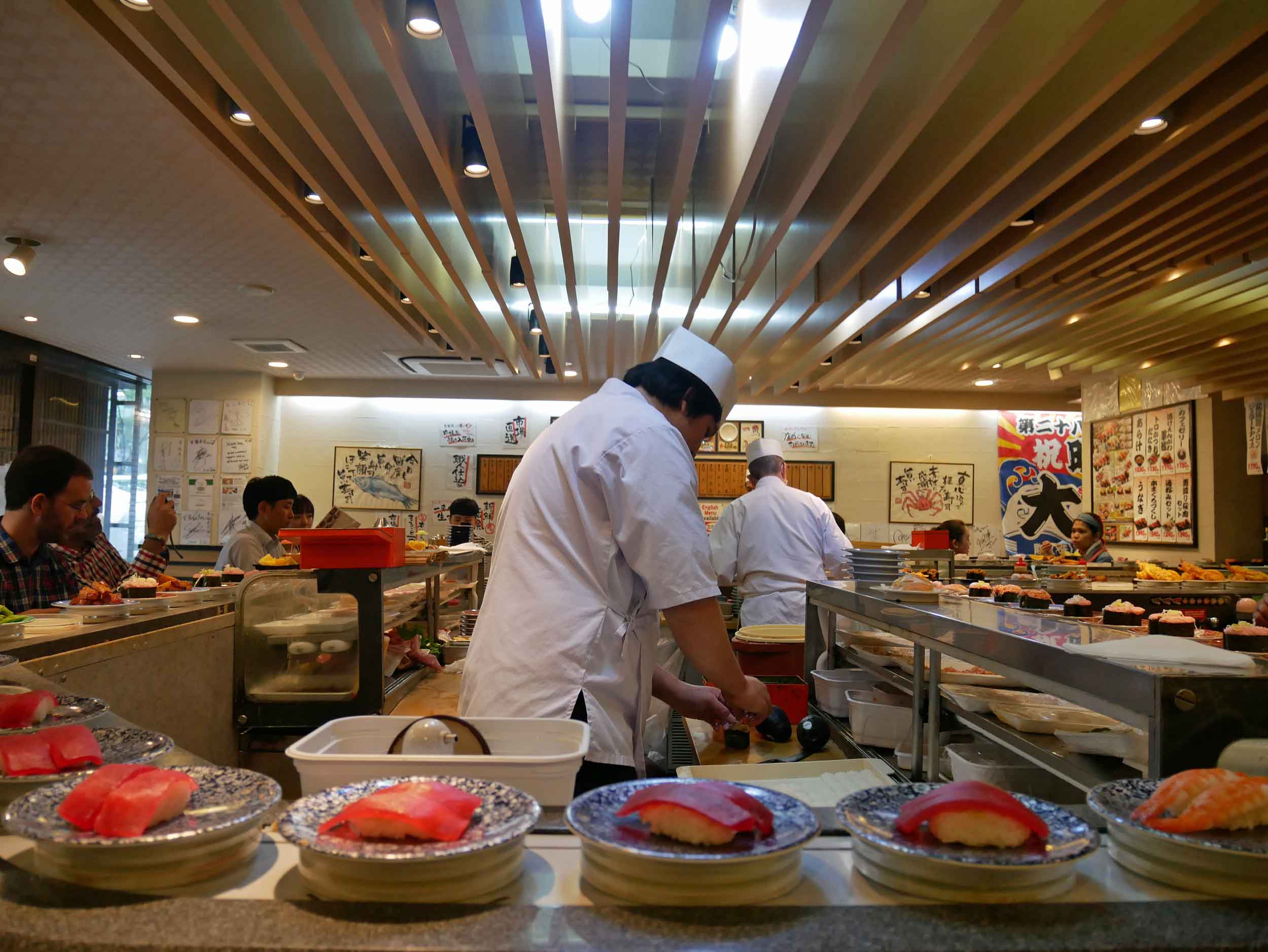
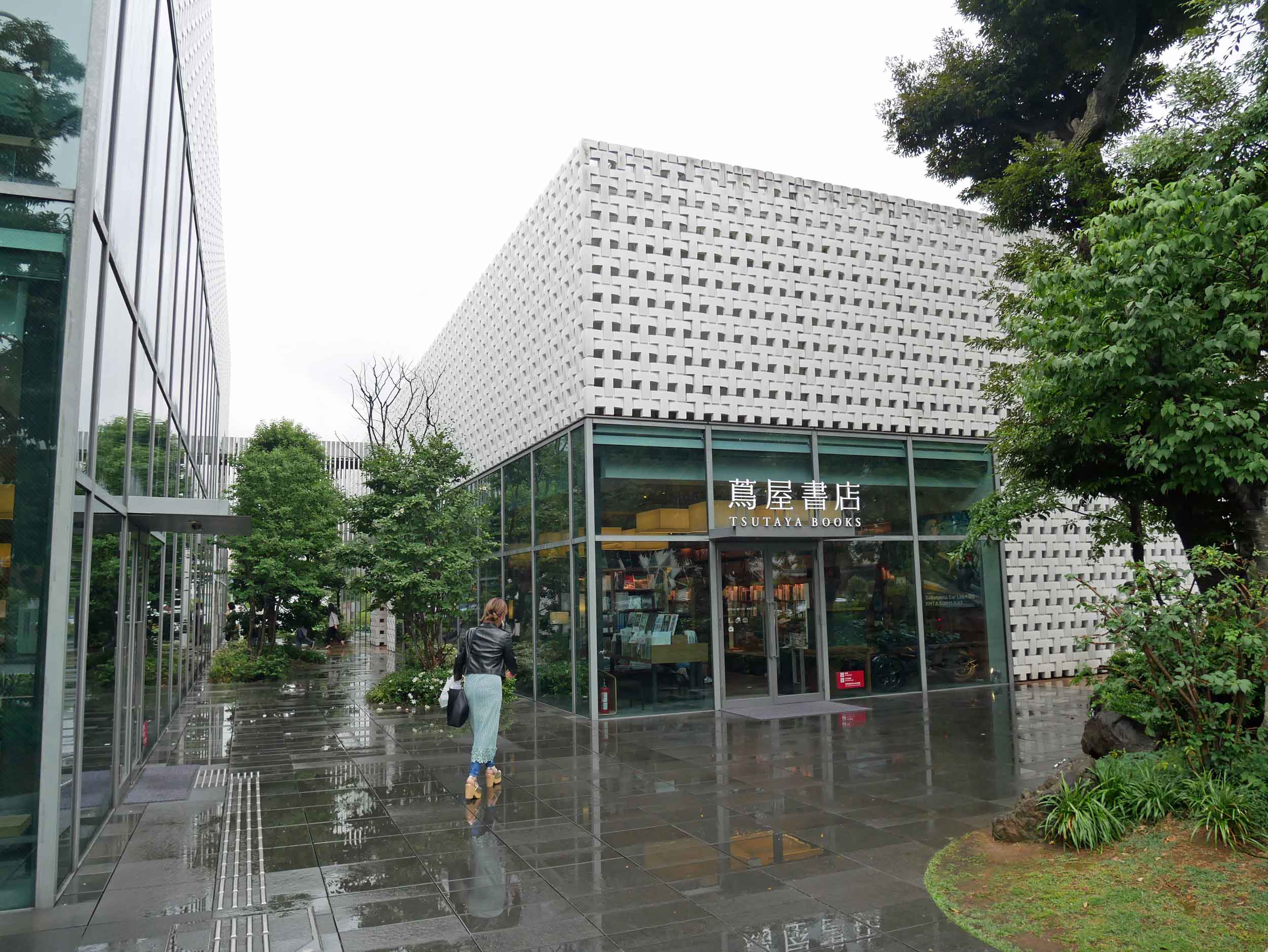
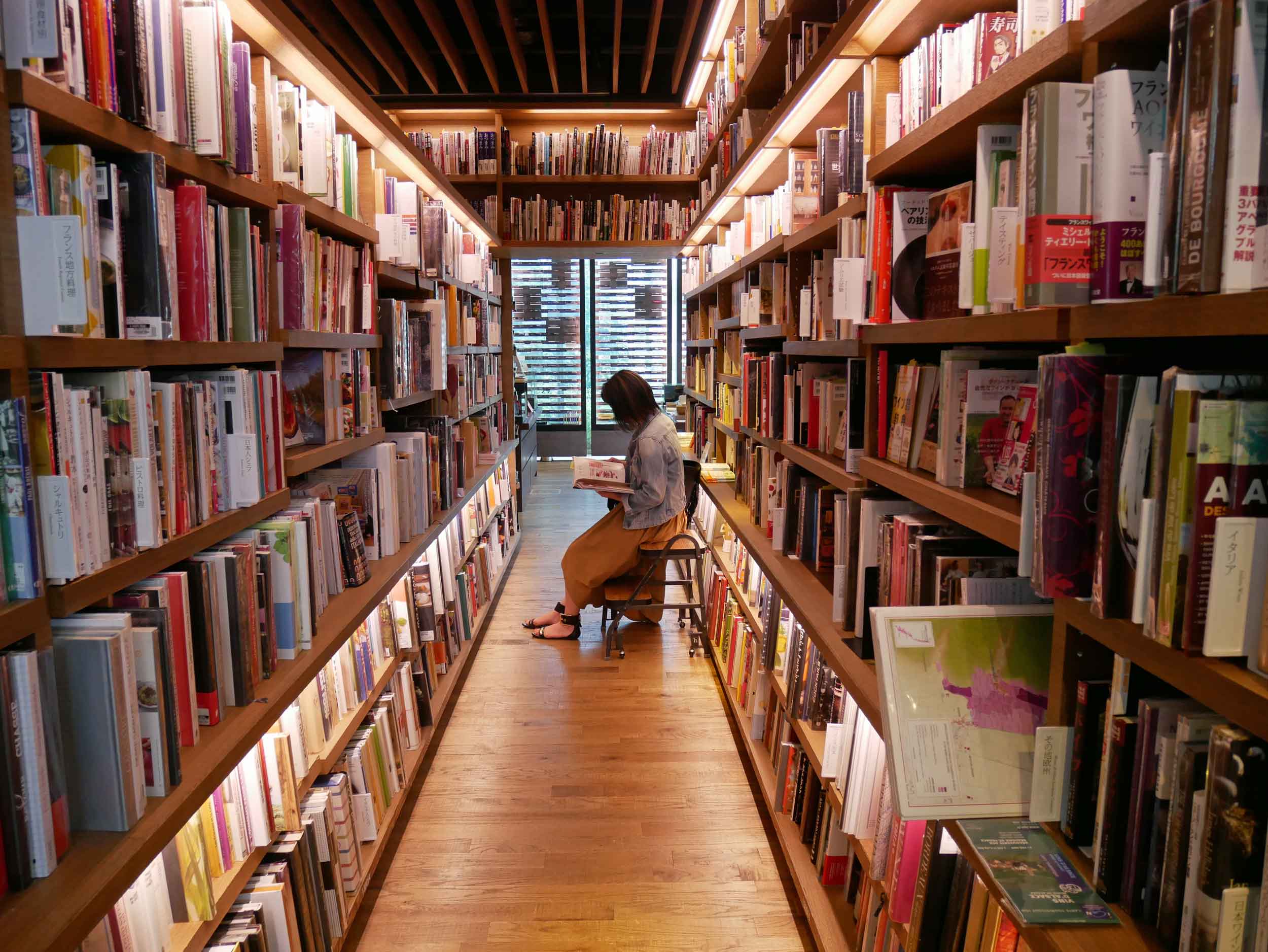

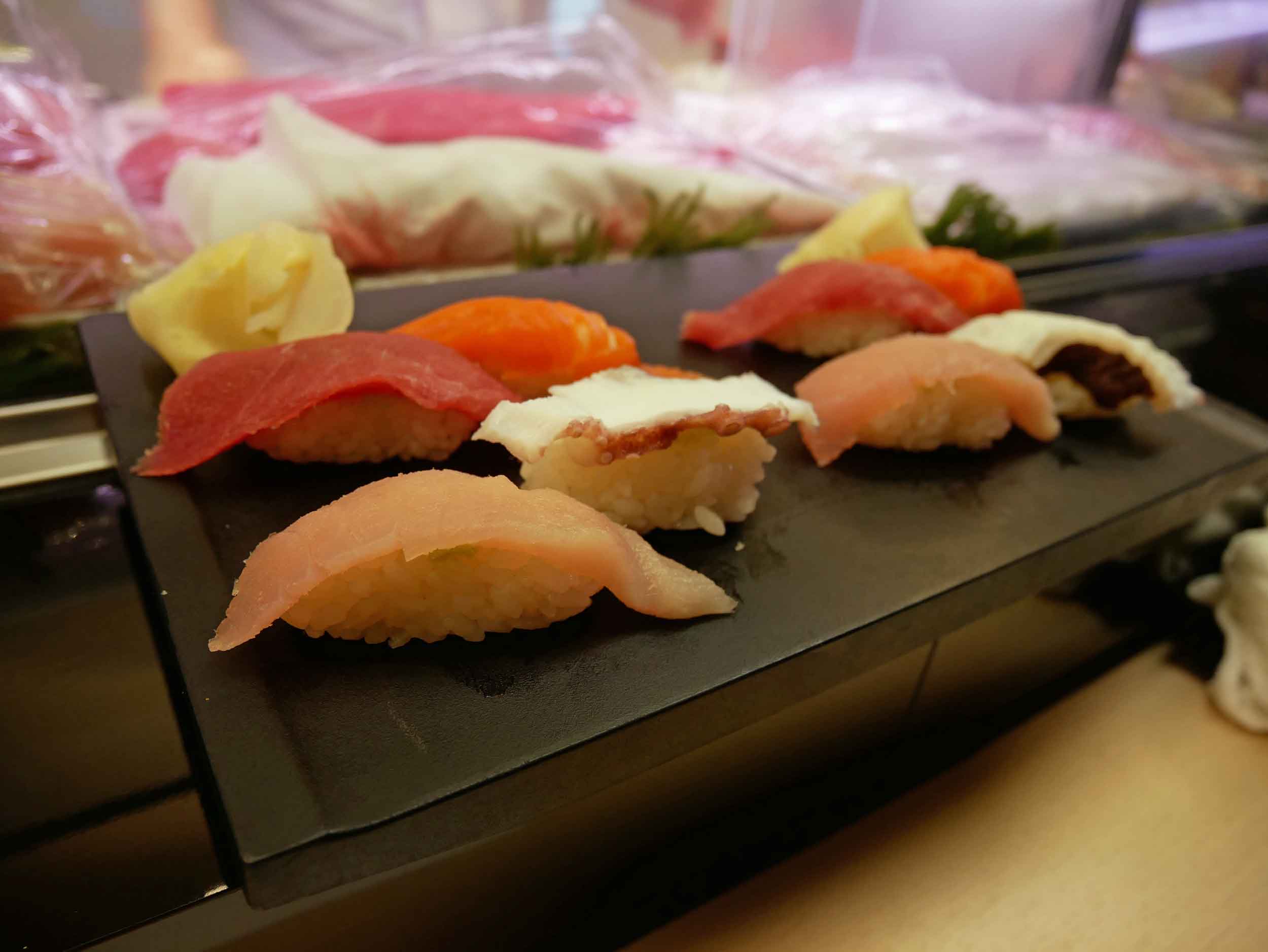
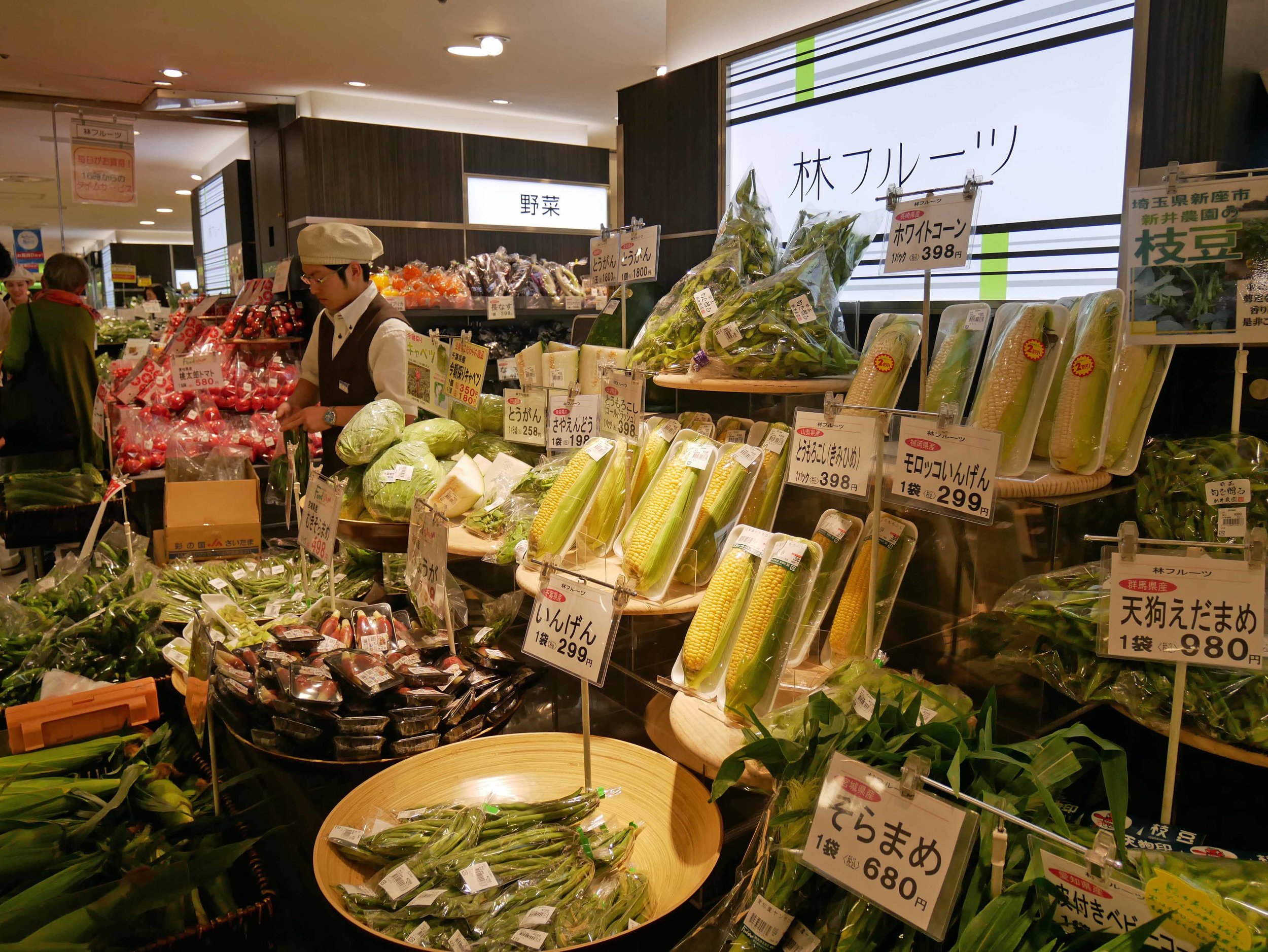

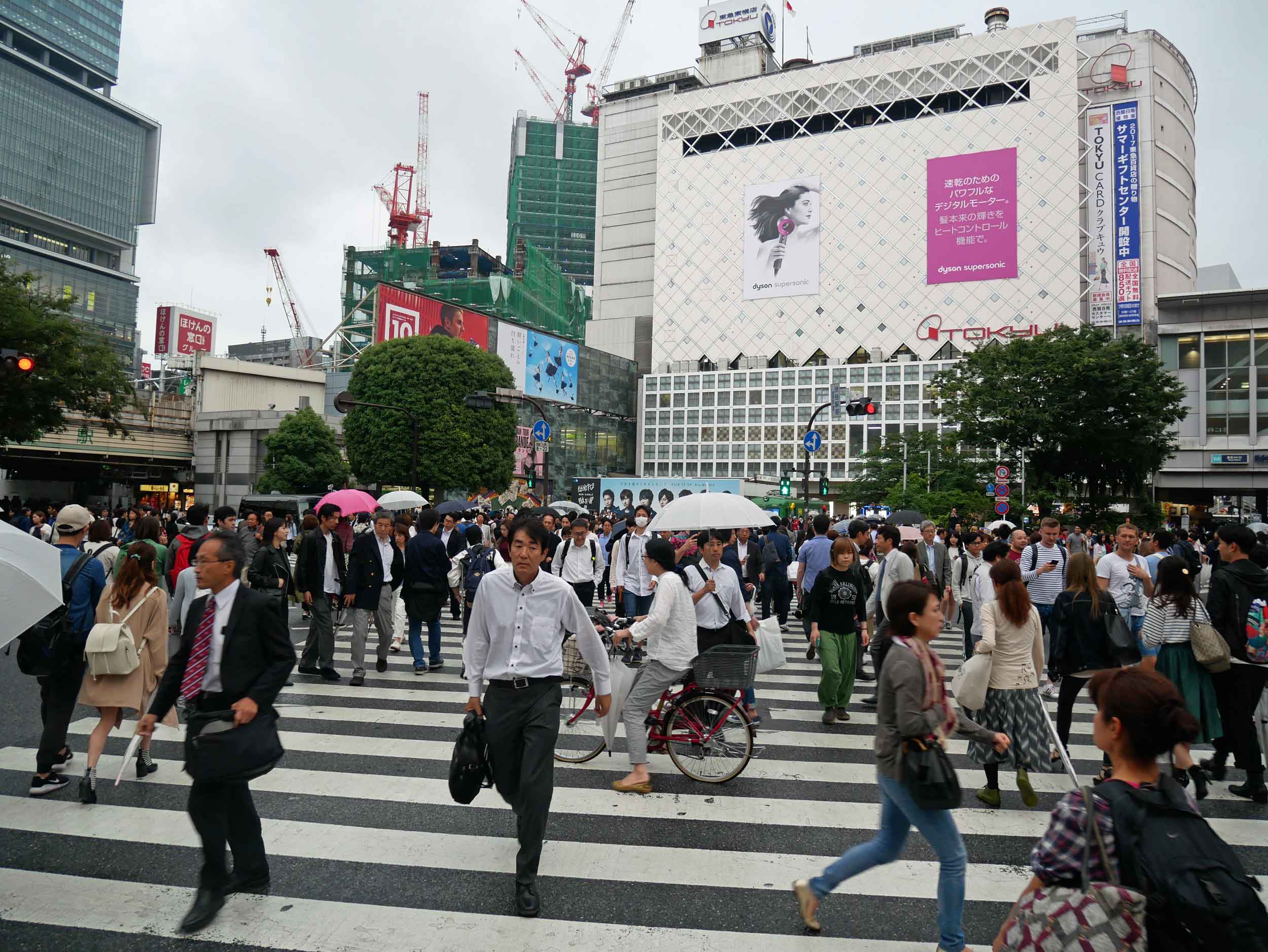
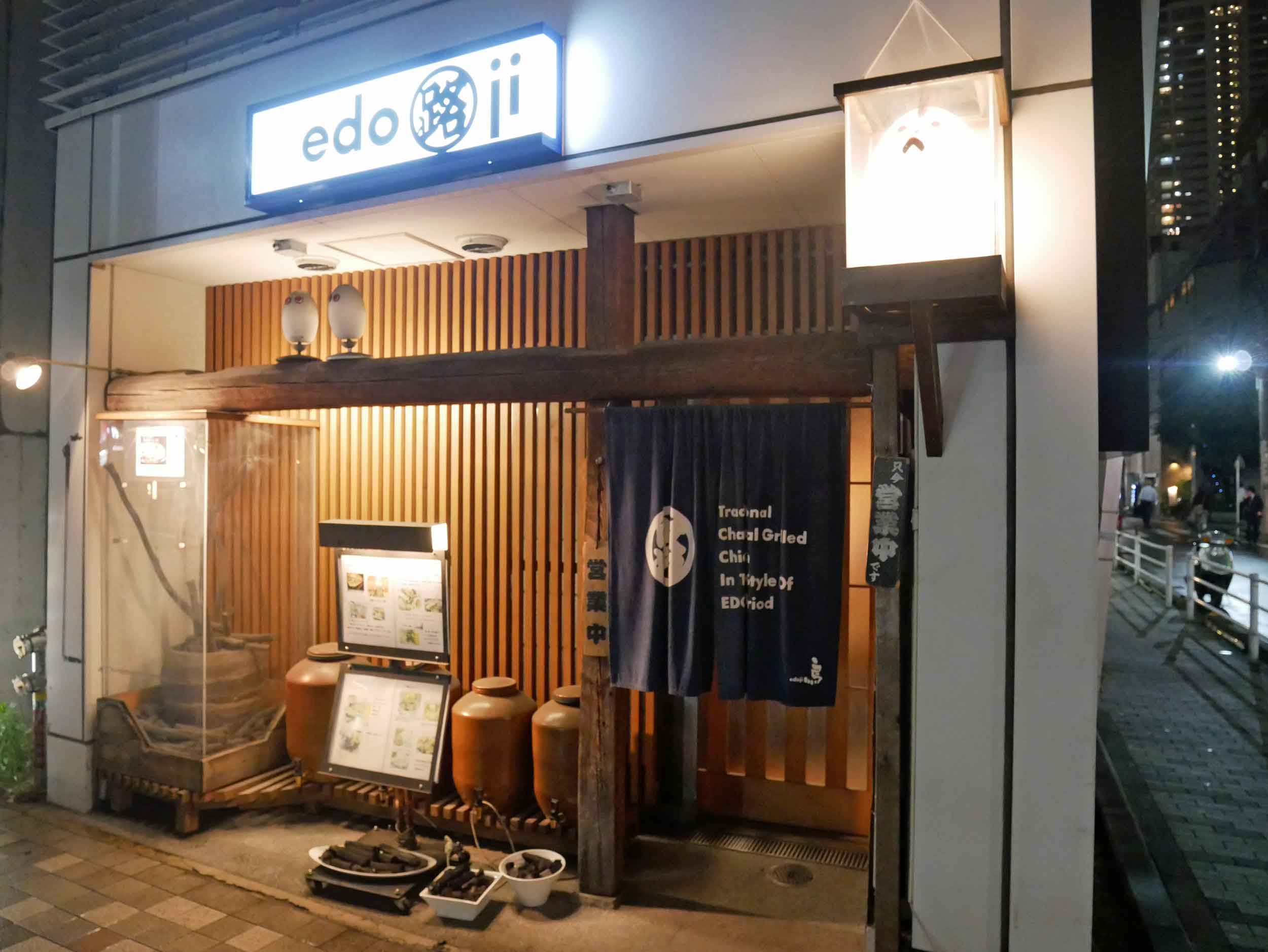
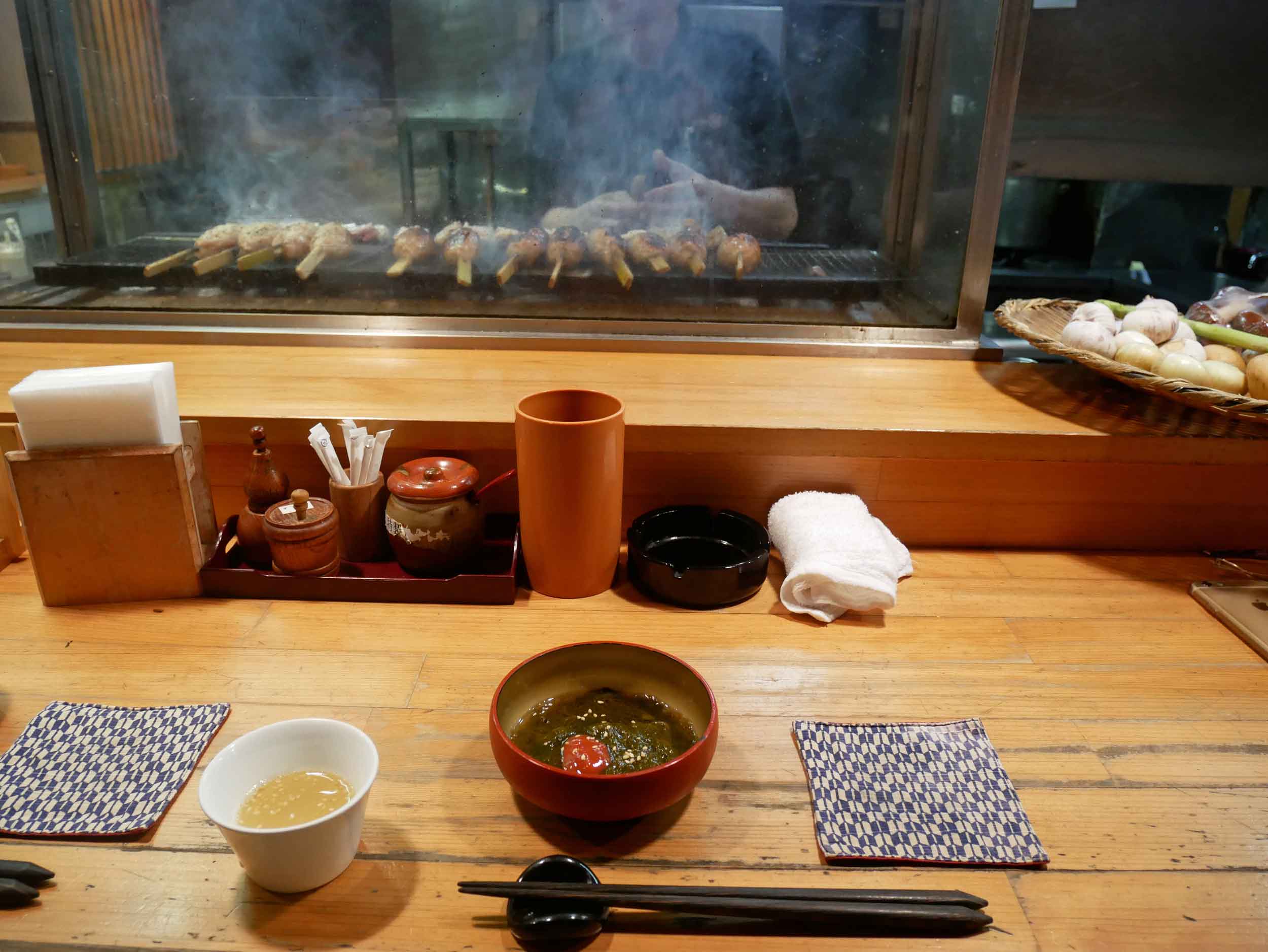
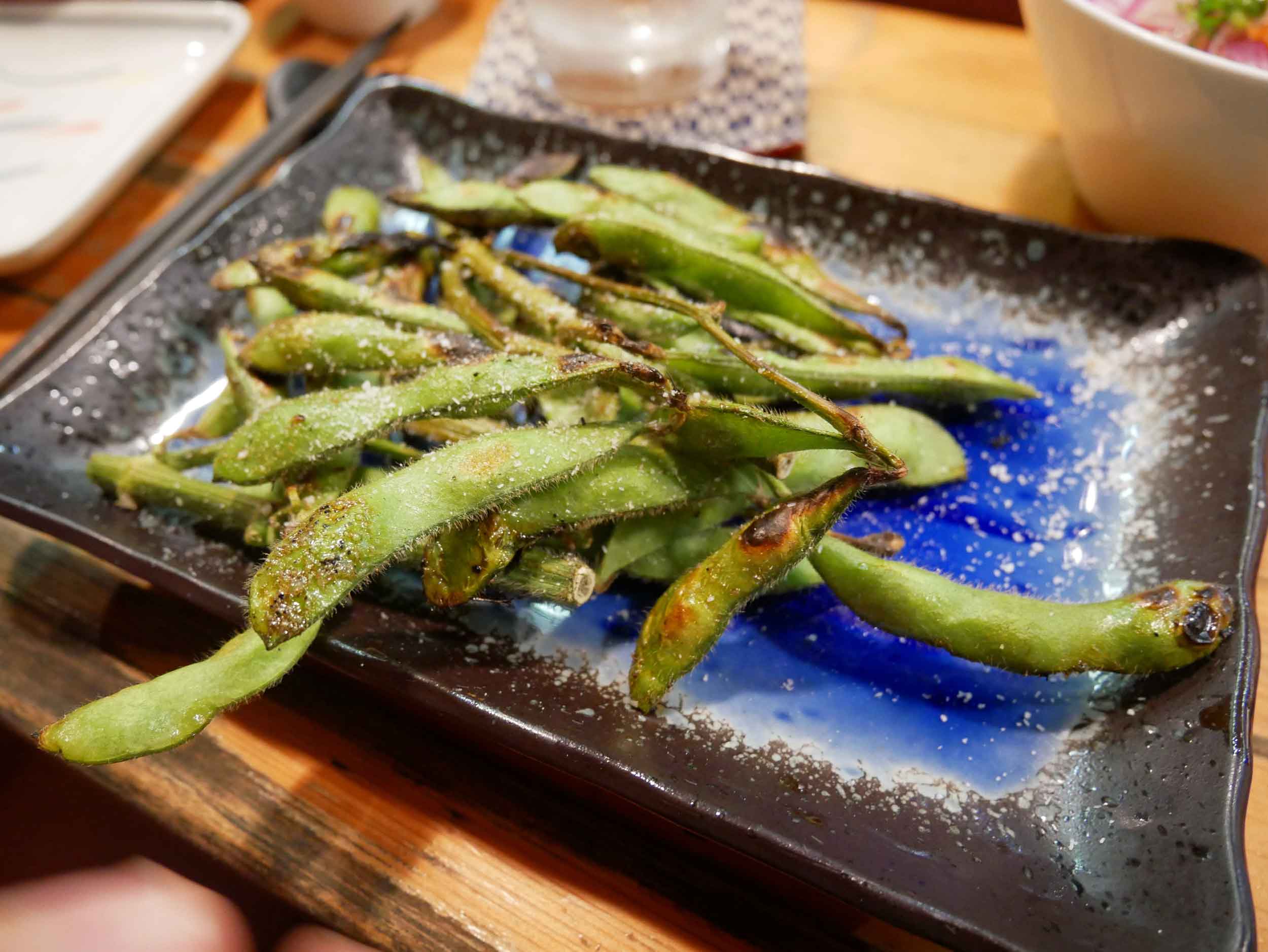
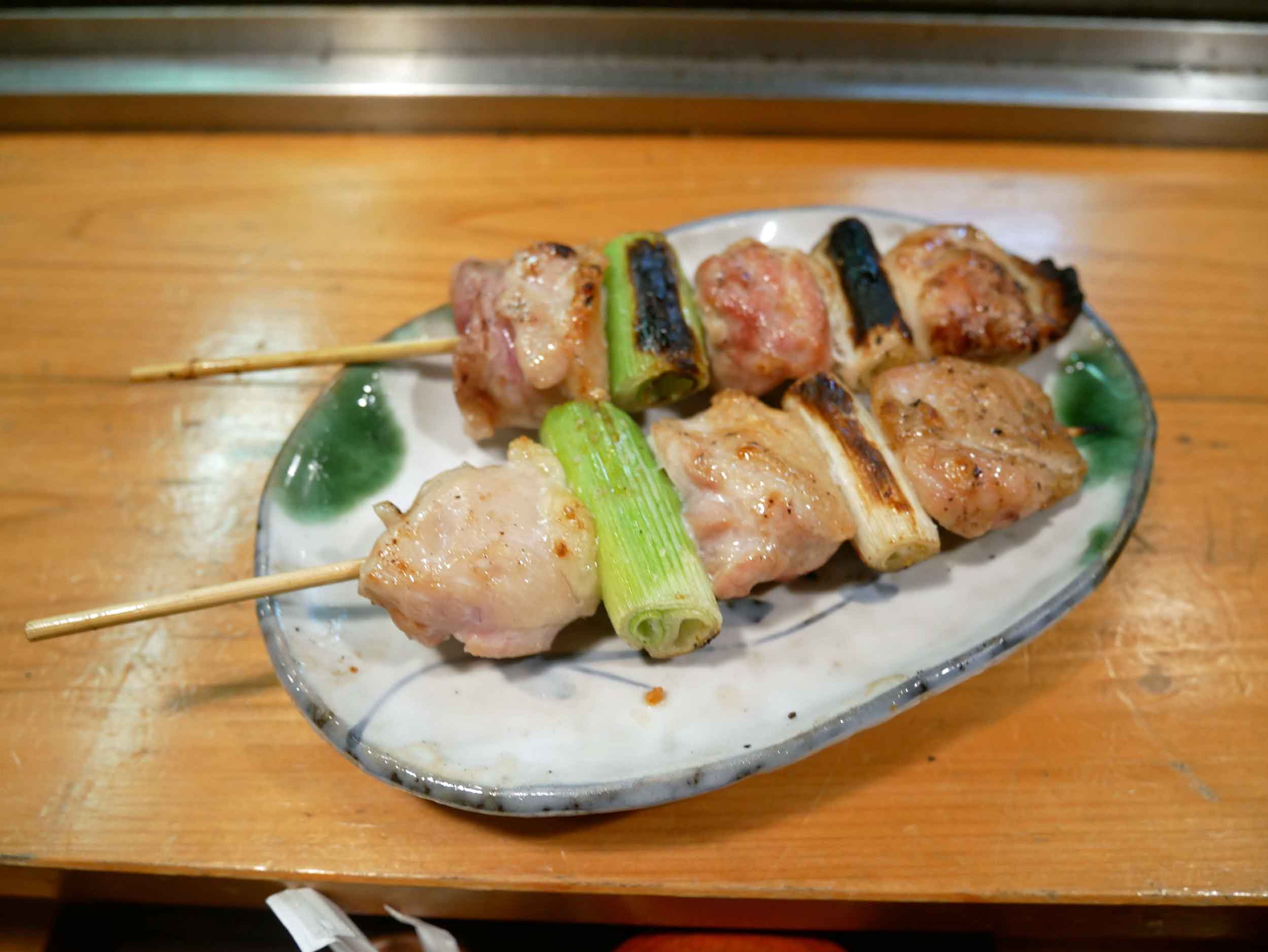
Our next day in Tokyo was nothing but sunshine, and we took full advantage of the better weather by taking in the impressive grounds of the Imperial Palace as well as the meticulously landscaped gardens of Hama-Rikyu. After spending the morning in urban nature, we visited the beautifully designed Ginza Six shopping complex, crowned with the stunningly elegant Tsutaya bookstore on top. We have a habit of window shopping at foreign bookstores, enjoying the peace and contemplative ambiance of these spaces. Hungry after all the browsing in Ginza, we found yet another underground food emporium, this time in the famous Takashimaya department store. Food courts, located in the basements of shopping centers or transit hubs all over Japan, are truly something to behold. The care that goes into the presentation and preparation of the meals and products for sale is evident in the beautiful arrangements and displays, not to mention the attentive and exceedingly friendly and helpful staff. We could spend the better part of a day shopping in these food halls in Japan.

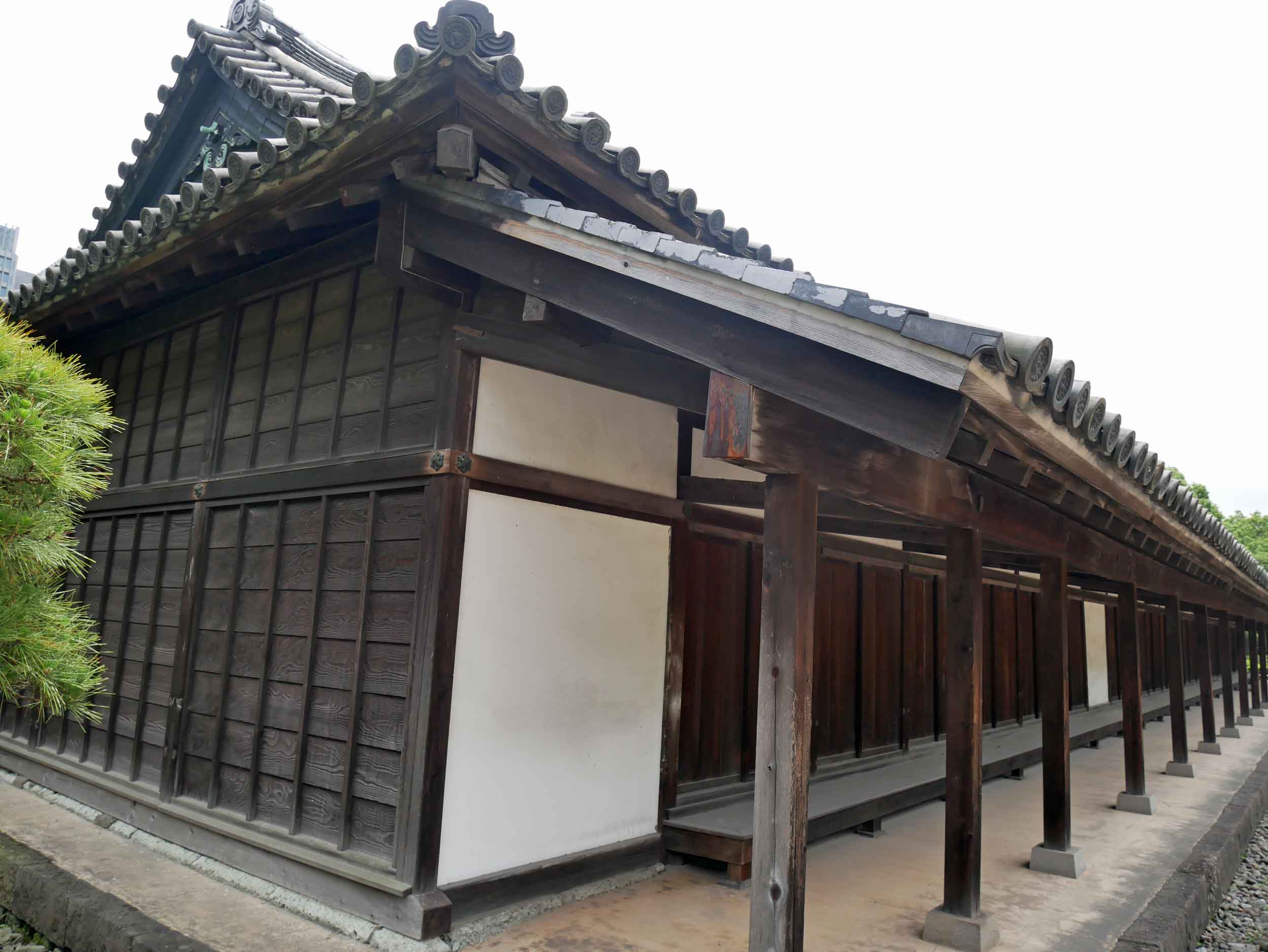
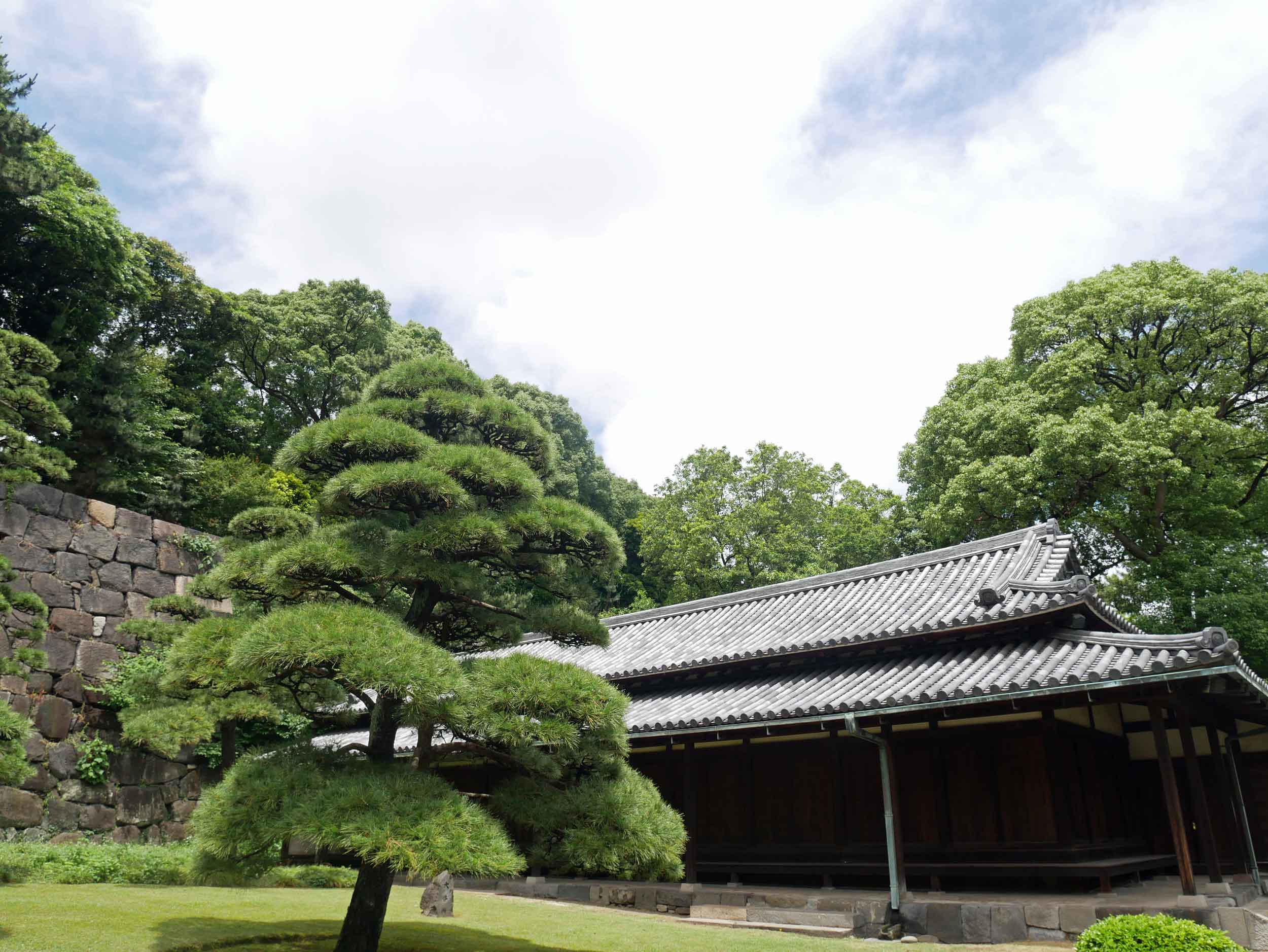
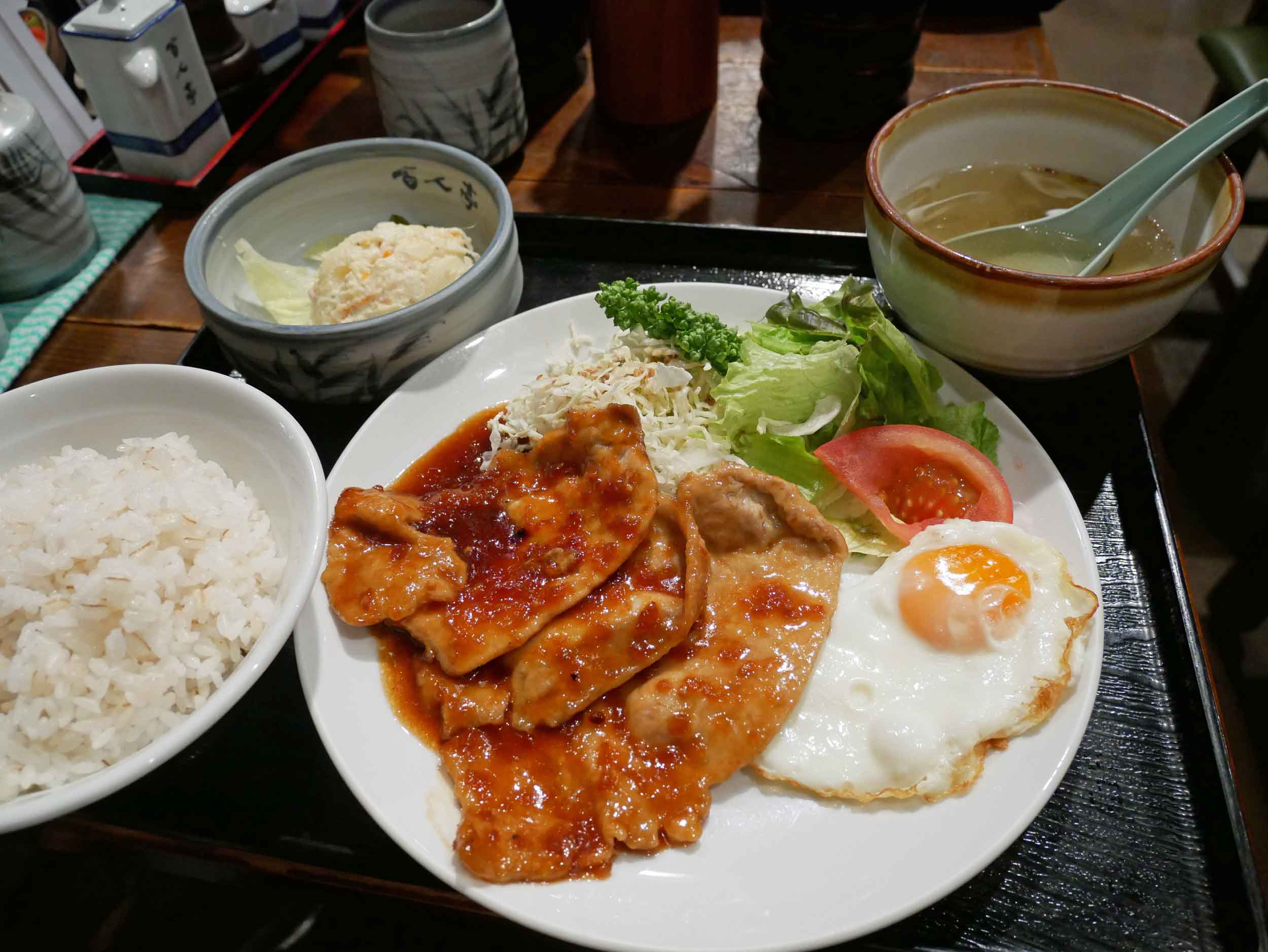
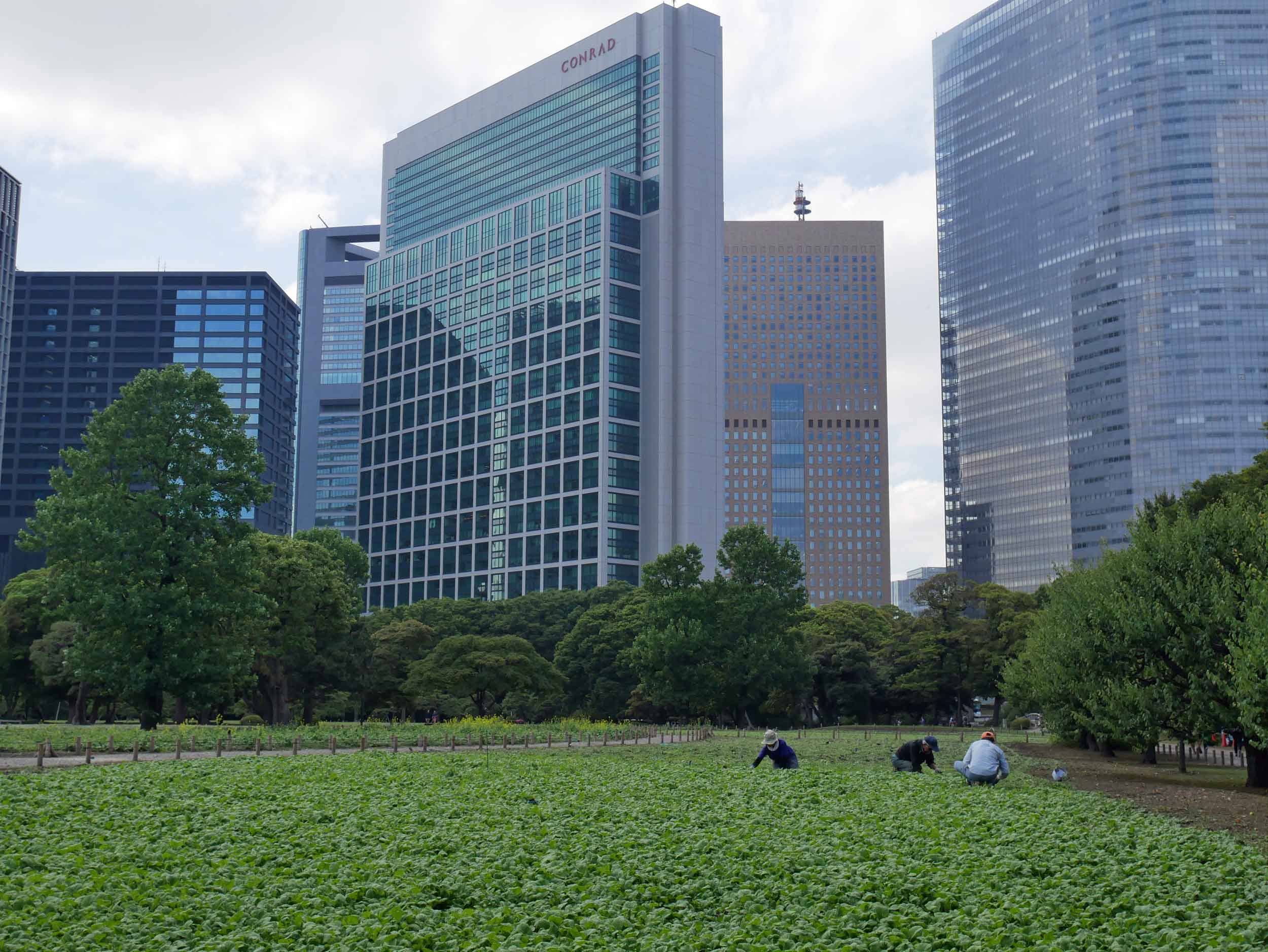
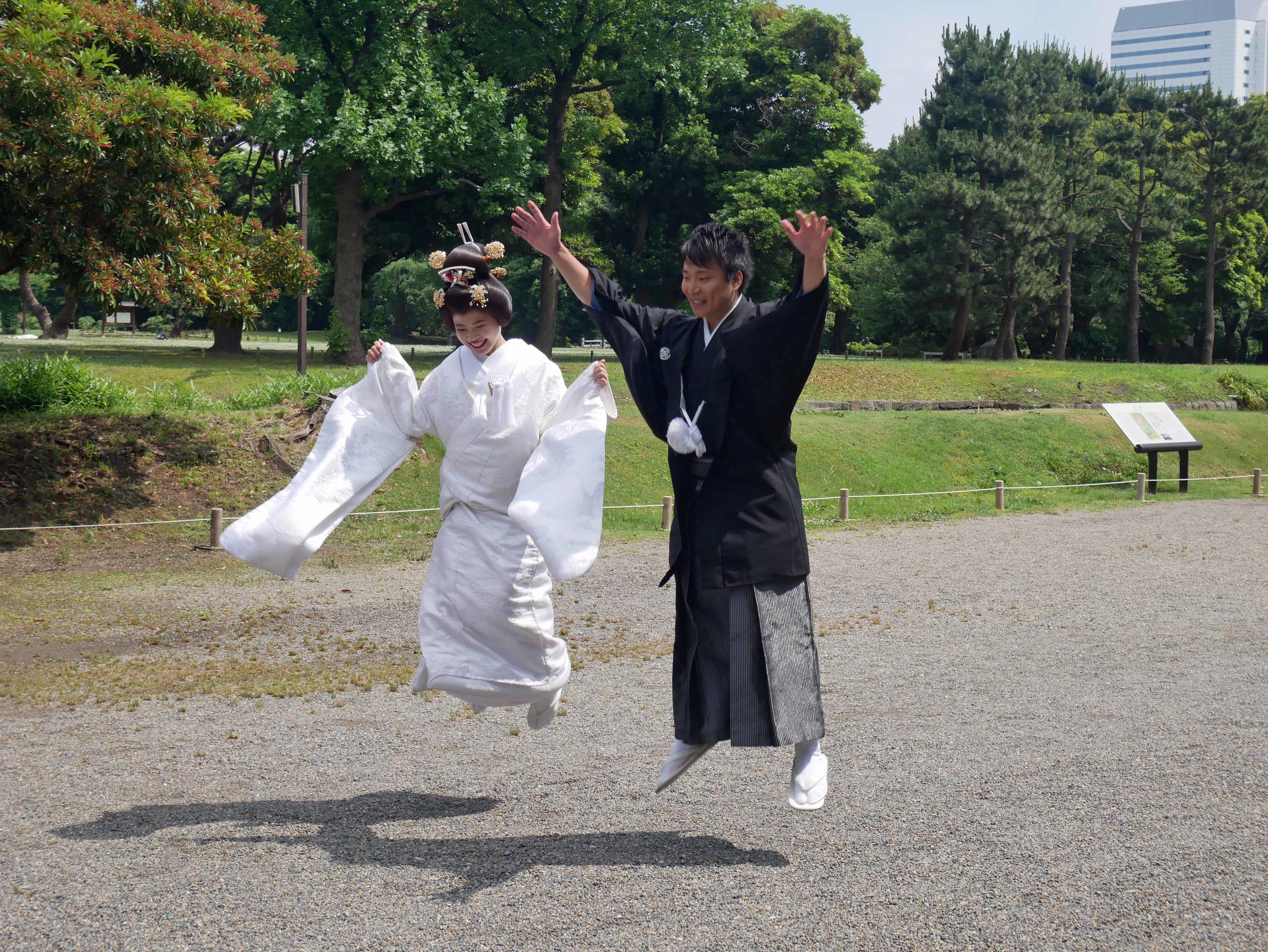
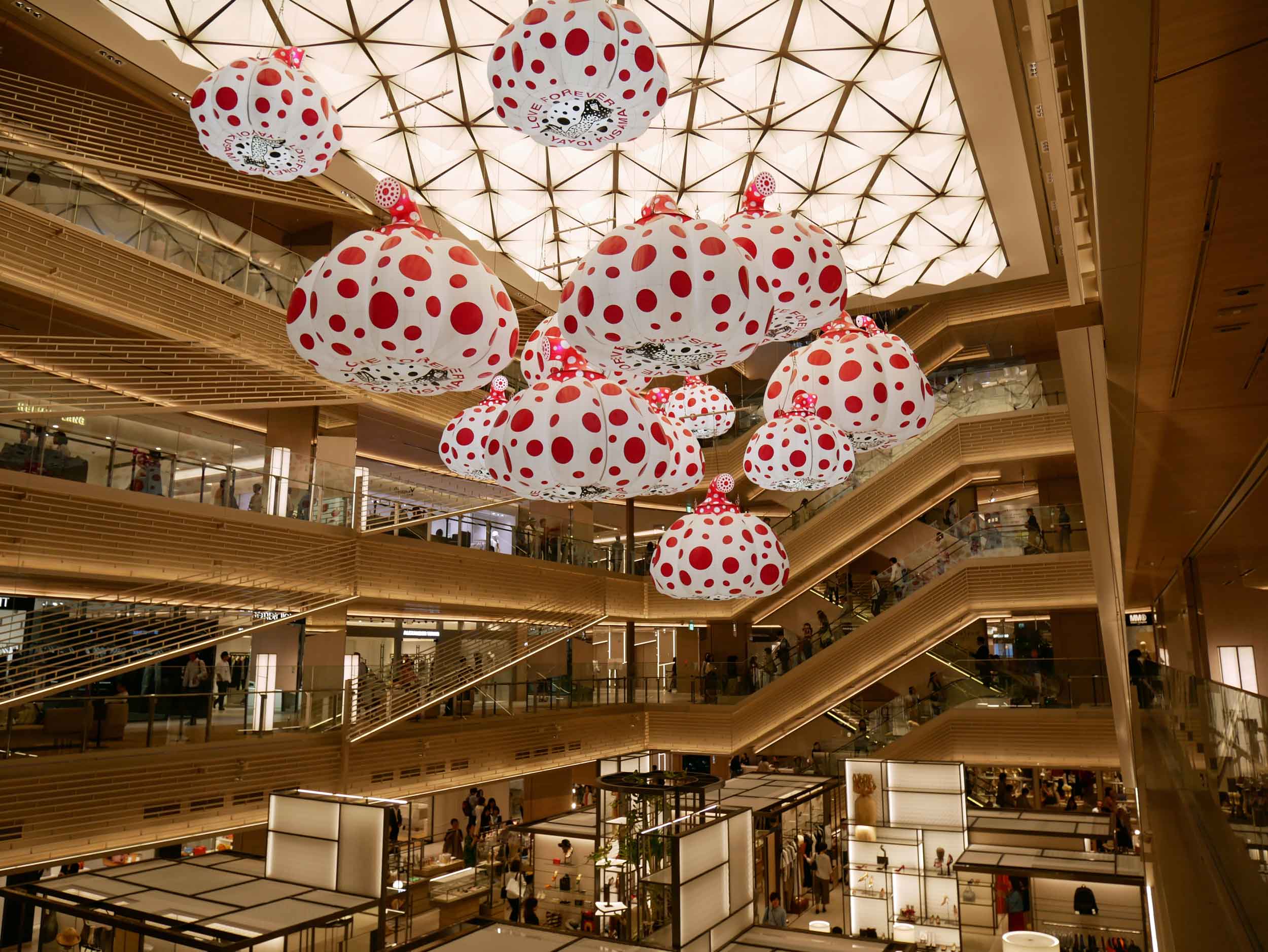
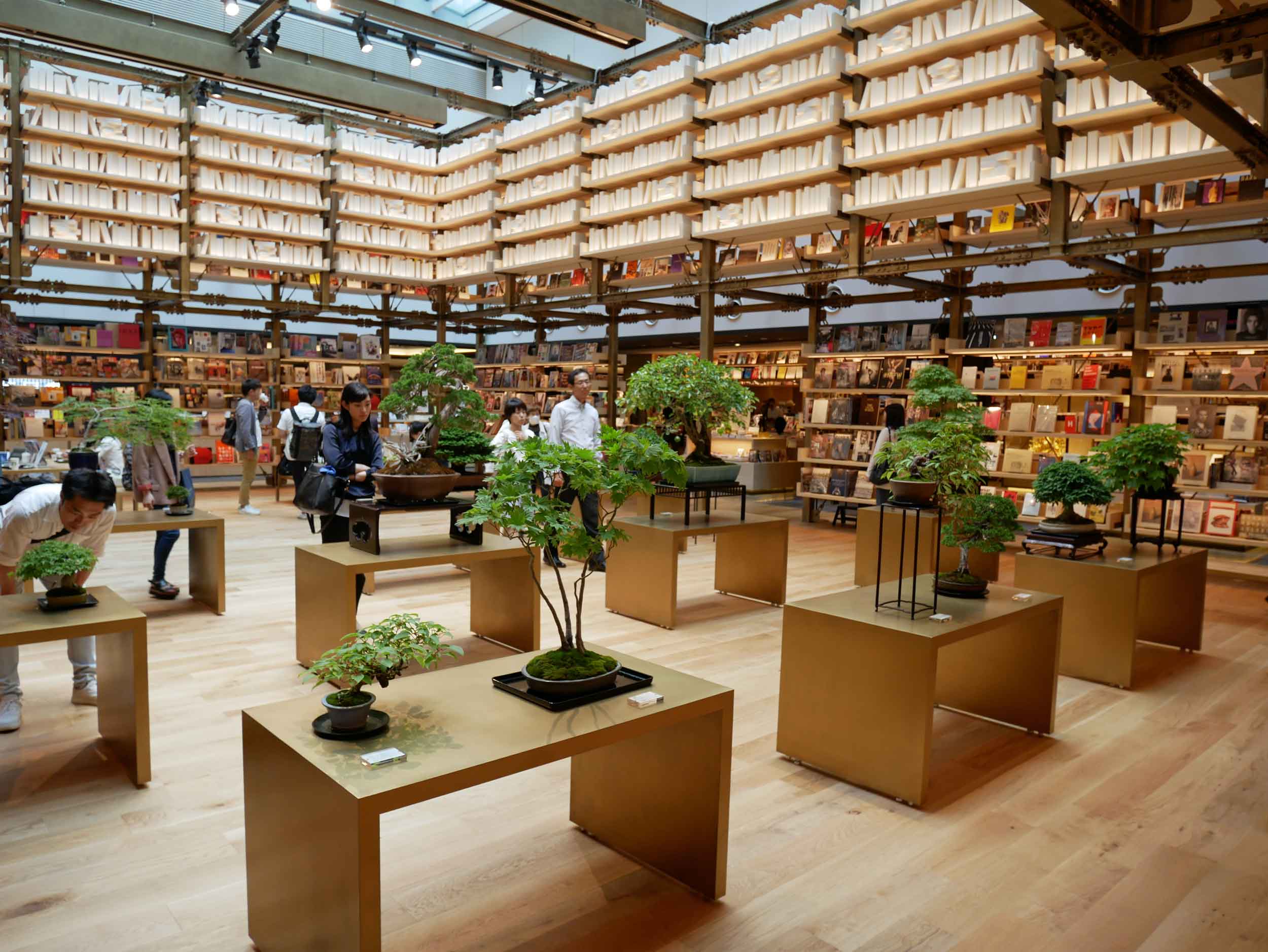
A Birthday in Kyoto
And we could also spend much more than the brief two days that we had in Tokyo, but we found ourselves on the move to Kyoto, taking our first bullet train ride. With an average speed of 250 KMpH, it is one of the fastest (and busiest) train lines in the world. Bento boxes in hand, we excitedly slipped into our seats on the right side of the train (travel nerds that we are, we had researched which side is best for catching a breathtaking glimpse of Mt. Fuji, which looms large just outside Tokyo) and in just over two hours we arrived at our destination. Train travel in Japan is so incredibly efficient and comfortable, making it hard to understand why any developed nation wouldn’t strive to have this sort of system for mass transit.
In Kyoto, we stayed at the Anteroom, a boutique hotel that is also part art gallery, and as we arrived, the staff were just completing an install of their latest exhibition, which coincidentally included pieces from rock-n-roll photographer, Mick Rock, who Trey had worked with in the past. This particular exhibit was dedicated to Mick’s candid and on-stage photographs of David Bowie, taken in the early 1970s as he toured with the artist. This coincidence seemed to us an auspicious sign that we were in store for a wonderful weekend ahead celebrating Trey’s birthday.
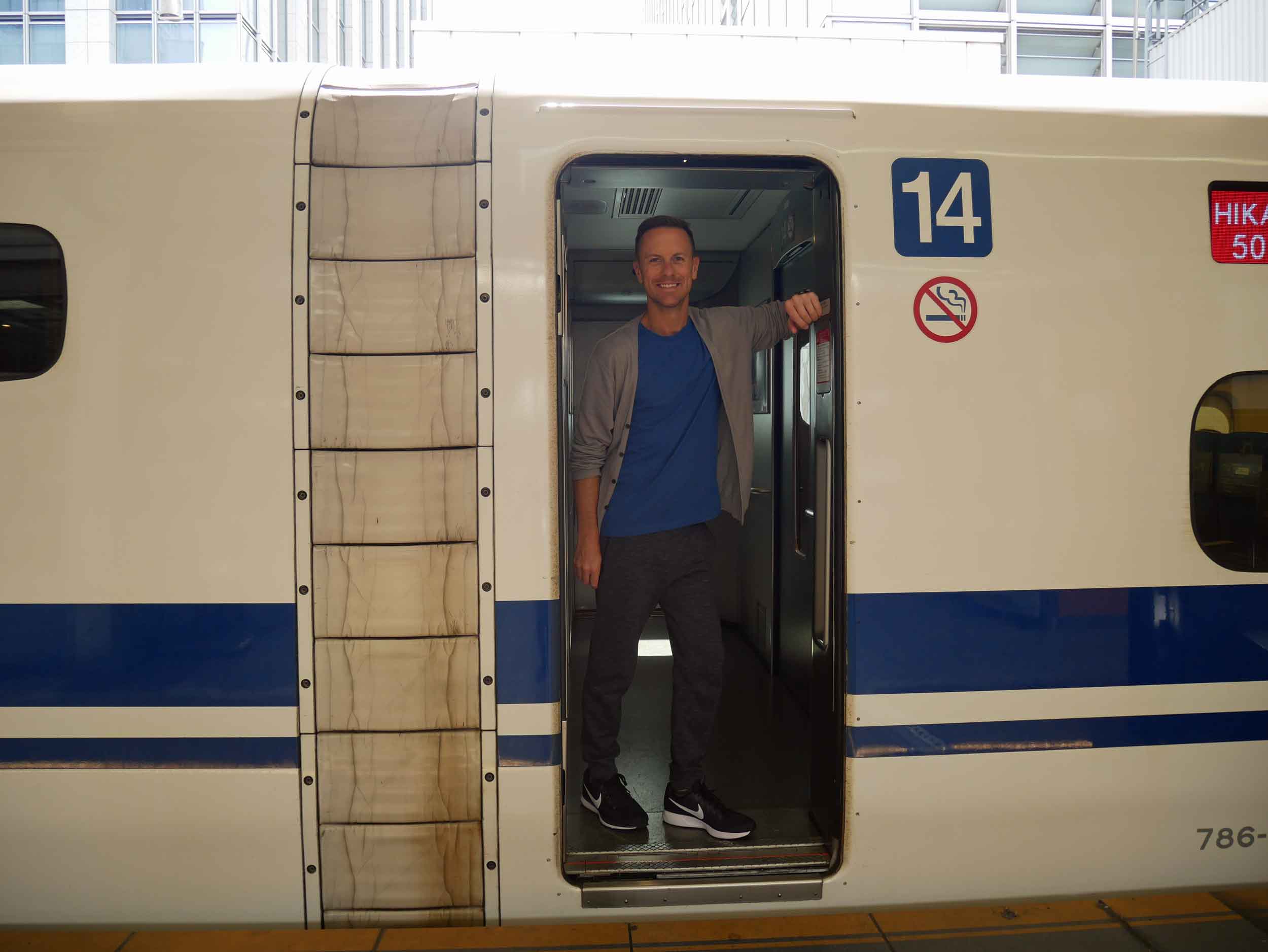
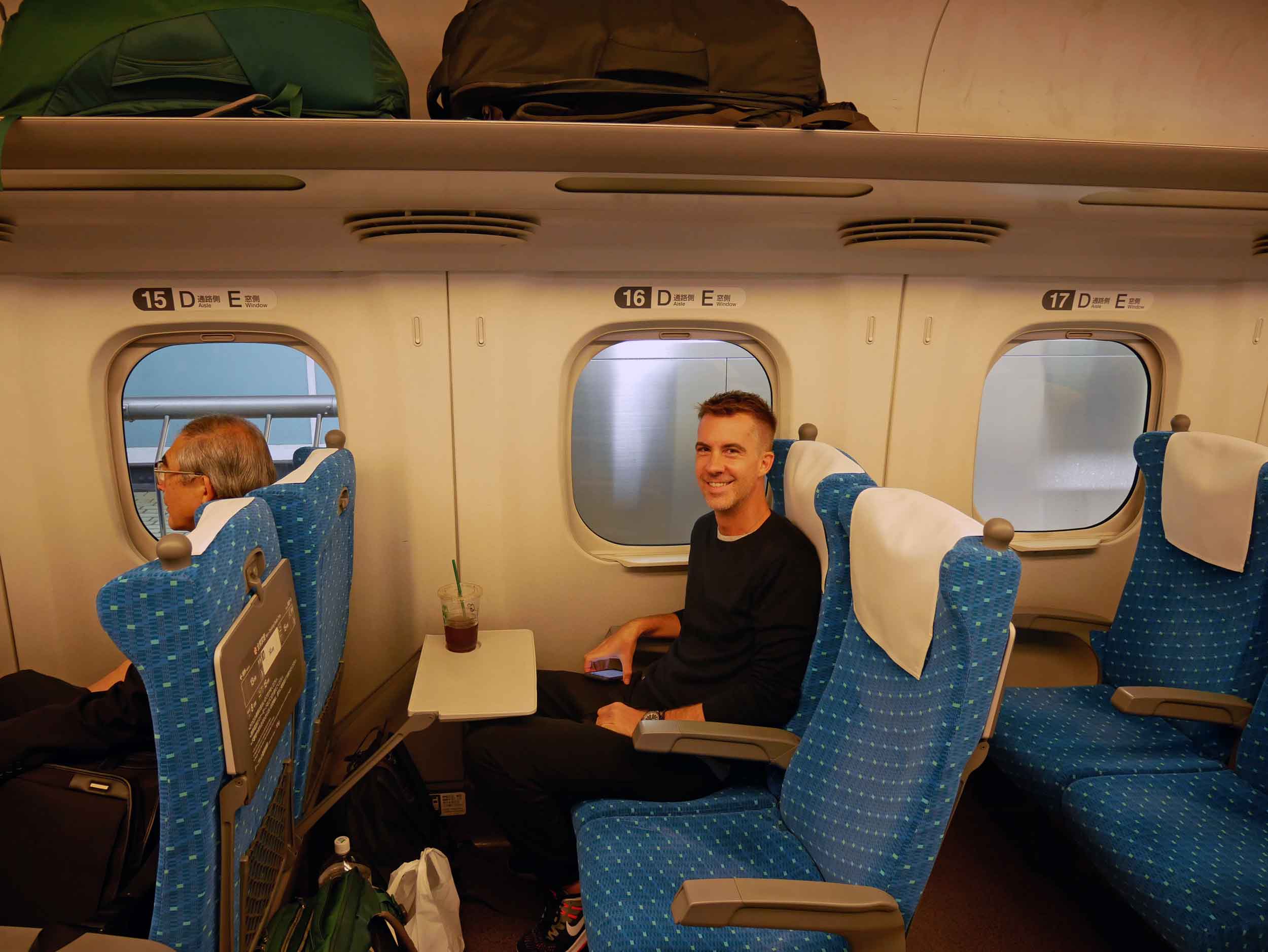
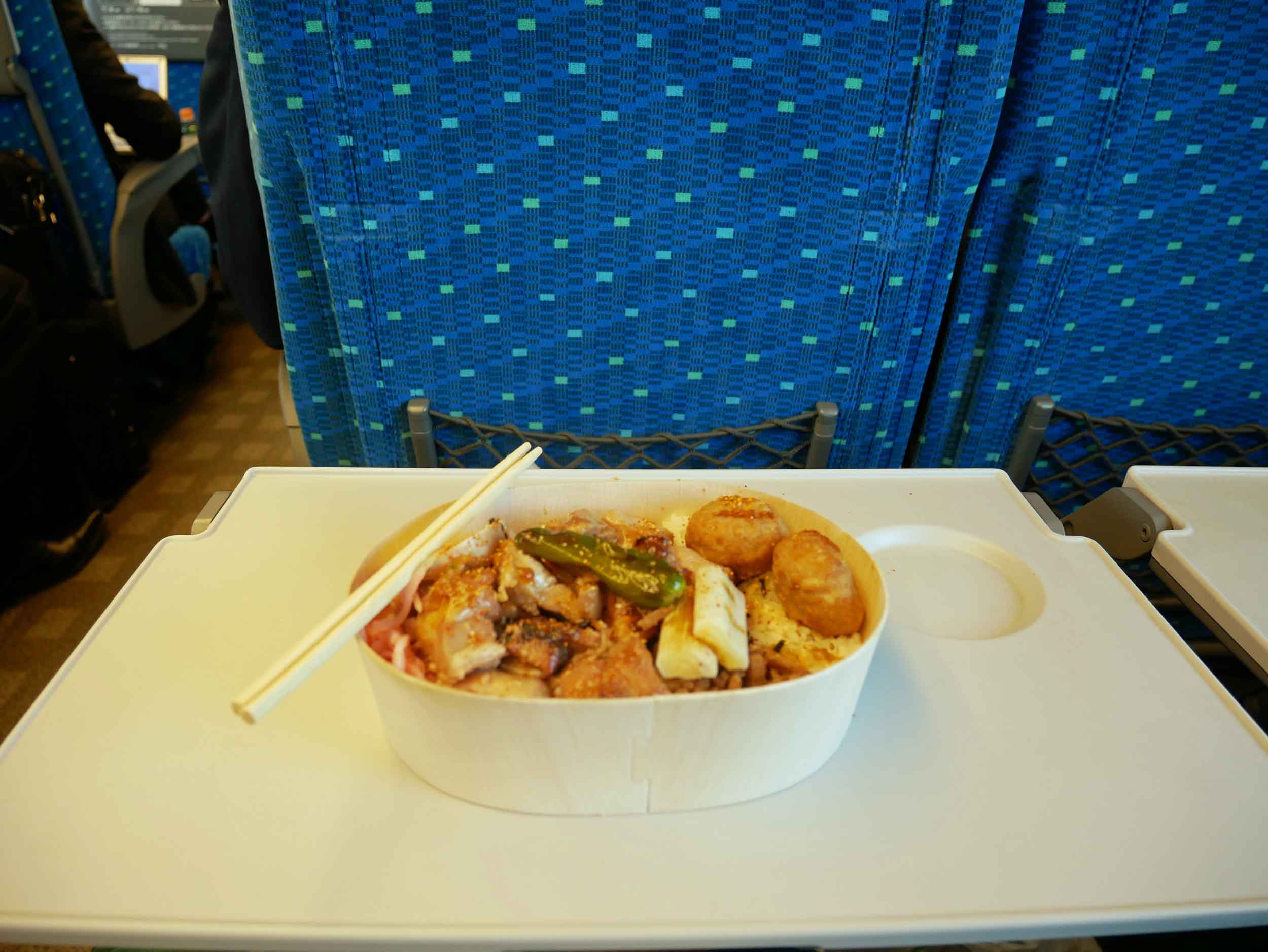
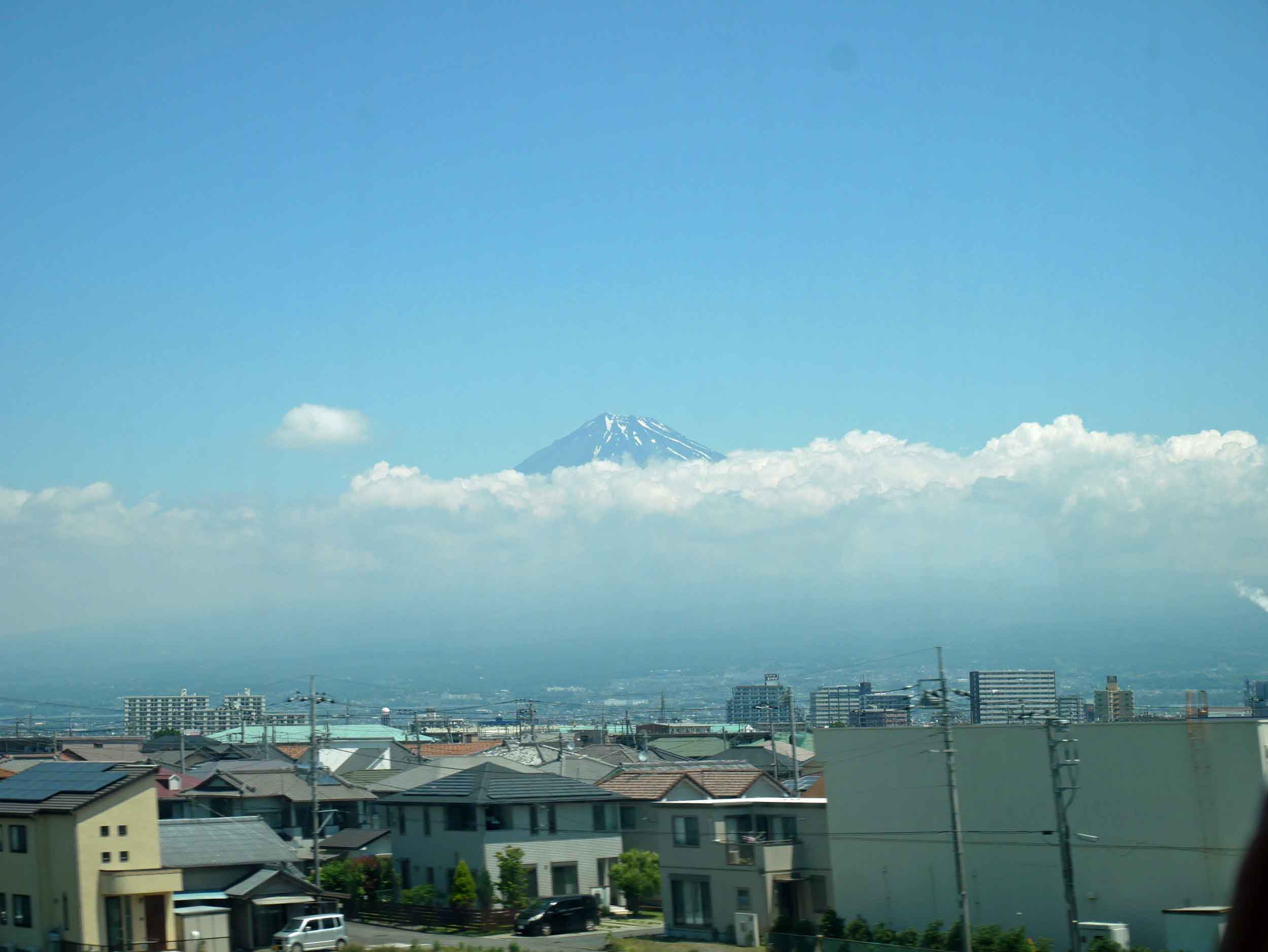
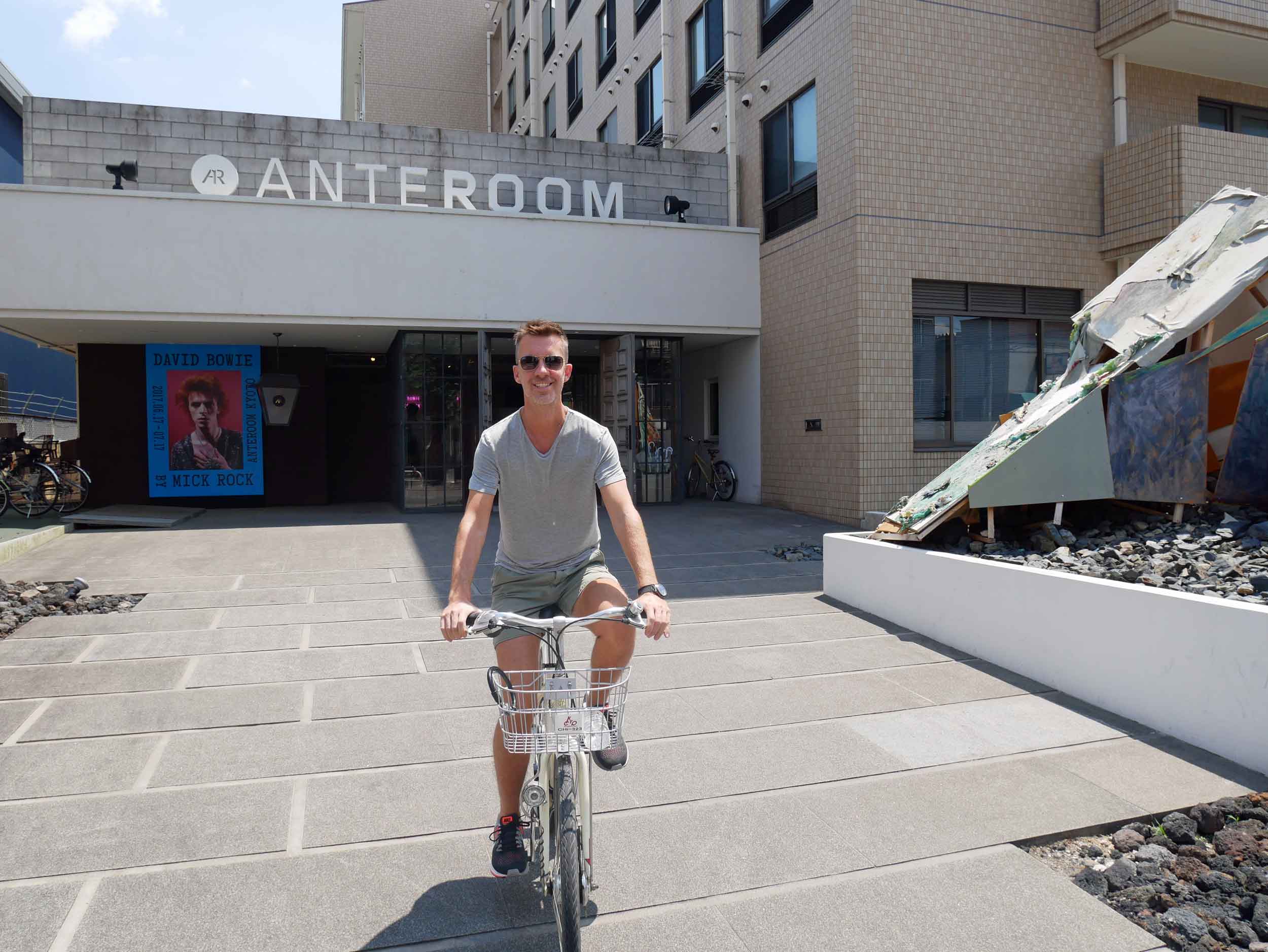
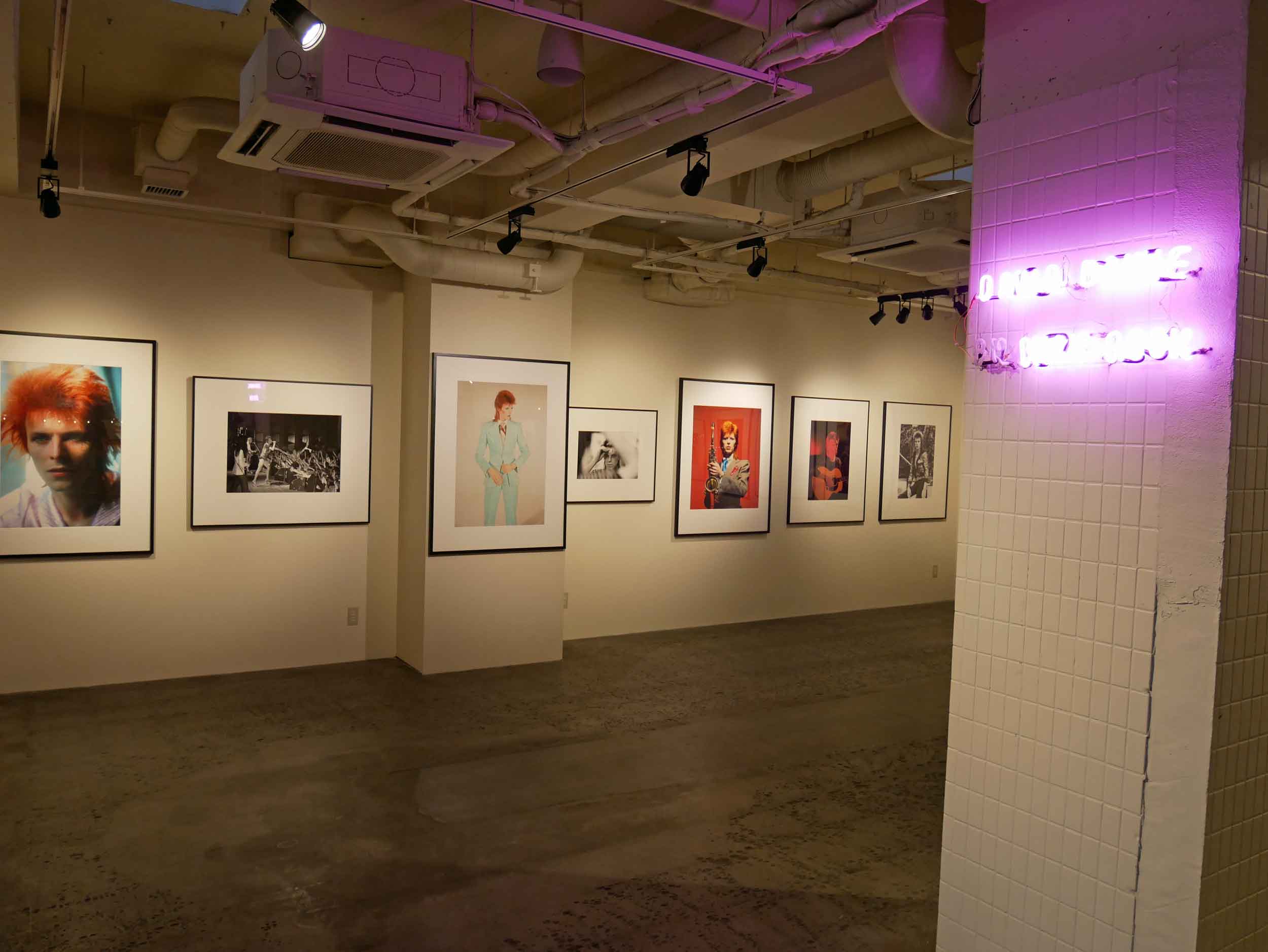
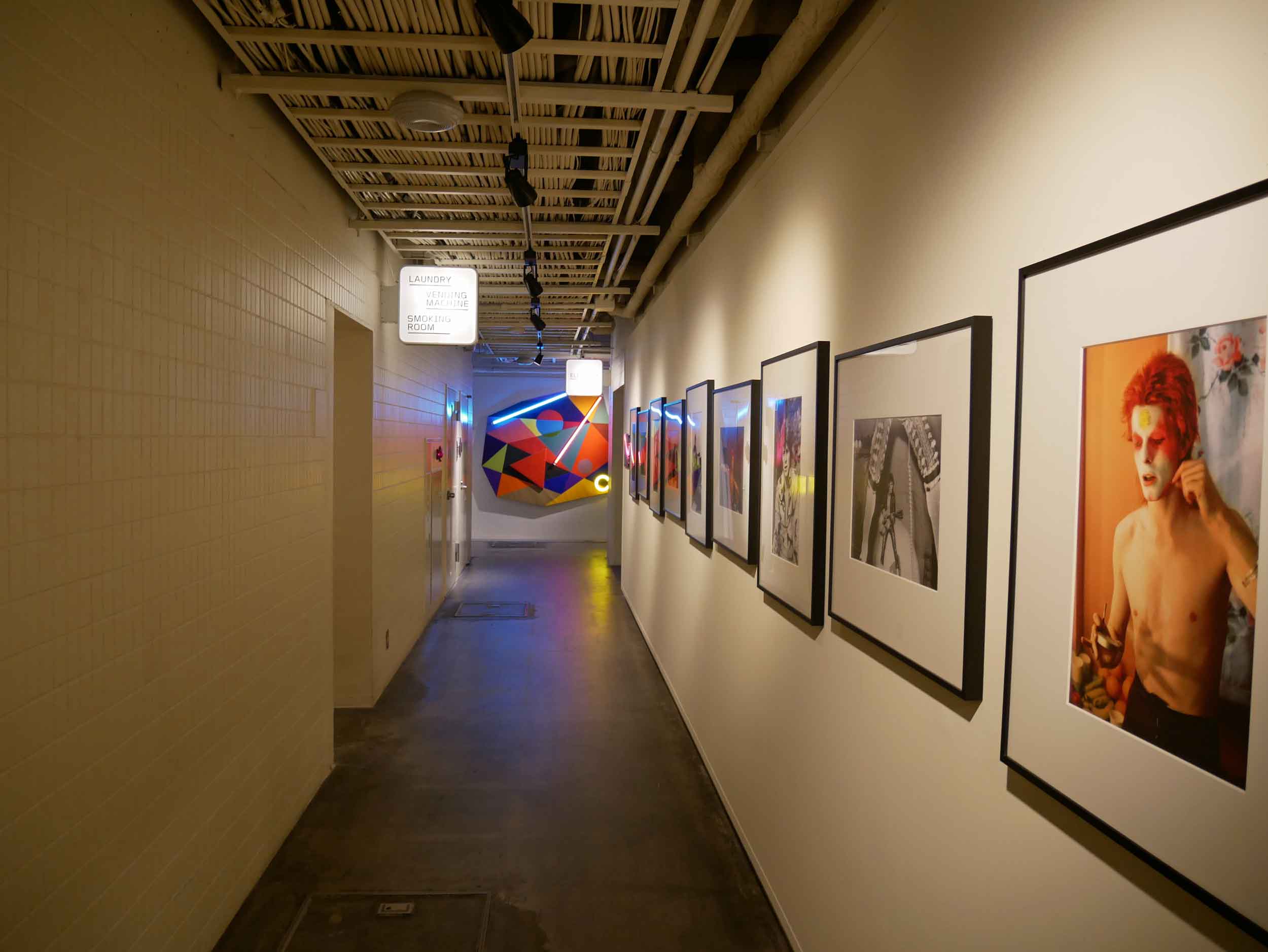
So, after quickly dropping our bags, we jumped on bicycles, which would become our transit of choice for the next couple of days in Kyoto (and one of our favorite ways to explore any new city). Our first destination was an iconic yet fairly modern Shinto shrine, Fushimi Inari Taisha, which honors the inari, or fox, believed to be a patron of business and more historically, a god of rice. Representing economic prosperity and good fortune, more recently, local businesses and merchants have purchased bright persimmon-colored torri with personalized wishes for prosperity inscribed upon them. In an Instagram-world, the symmetry and colors of the countless vibrant gates, which cover nearly four kilometres of trails, have become a popular photo shoot spot for both tourists and locals alike.
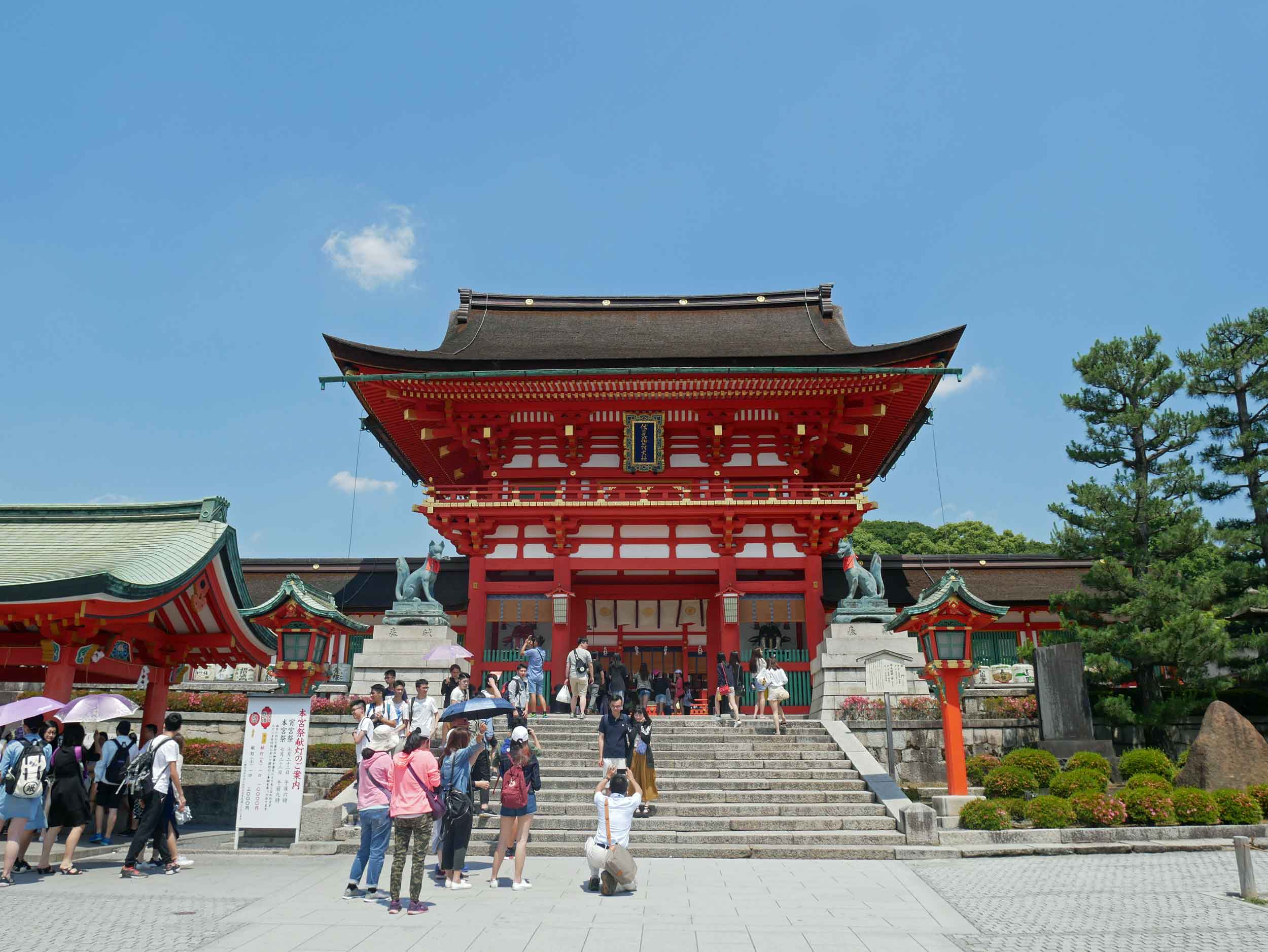
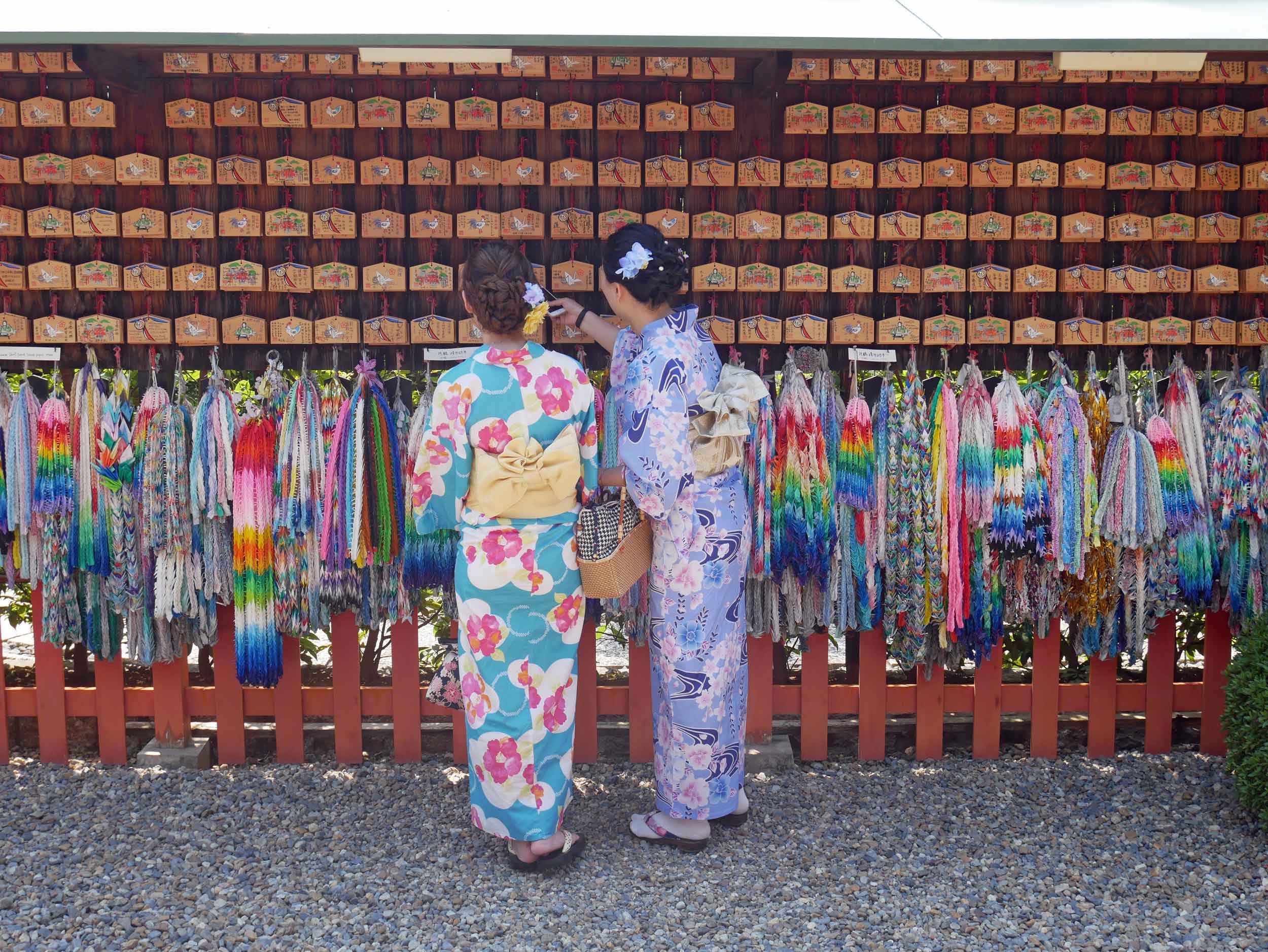


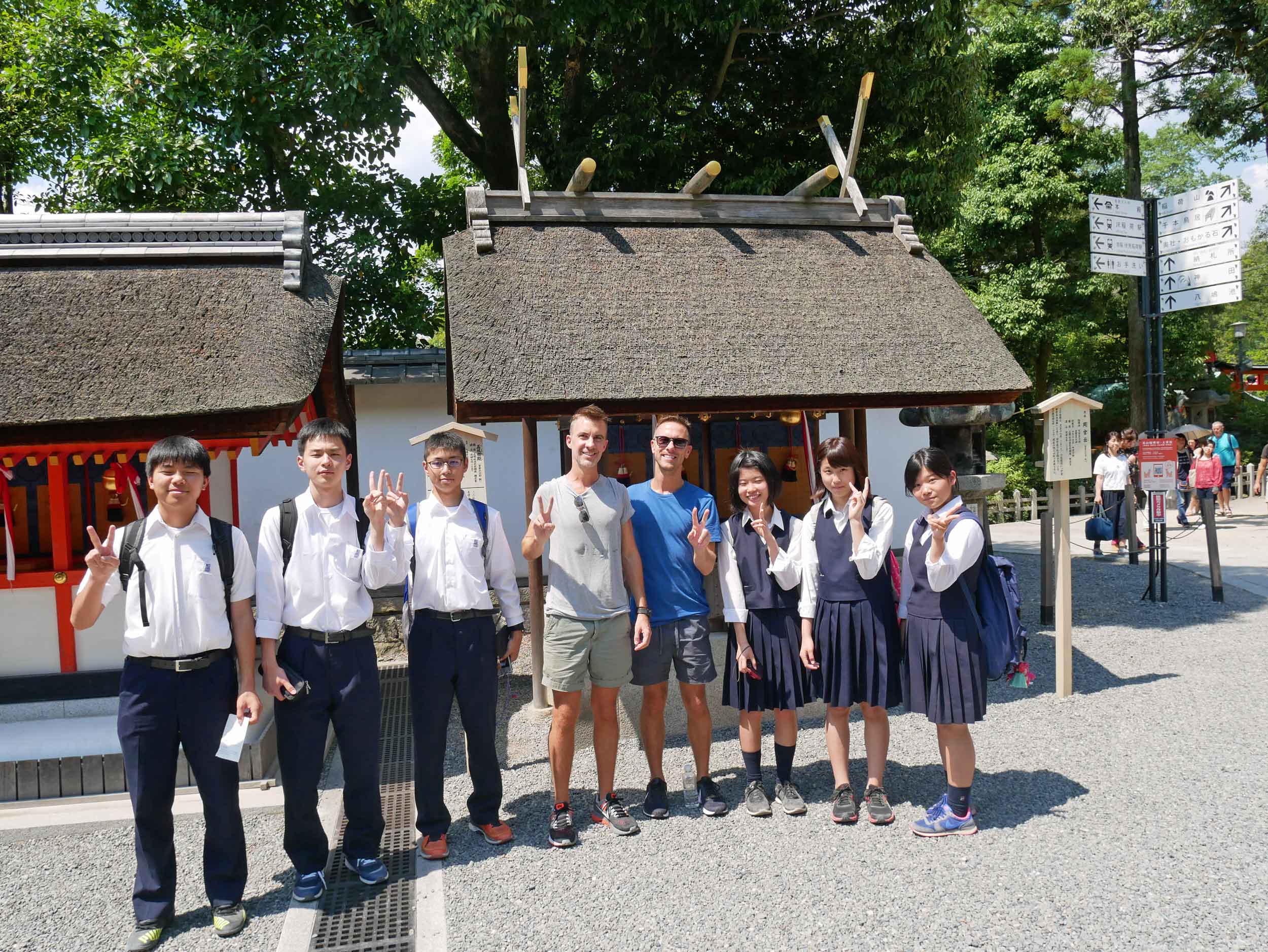

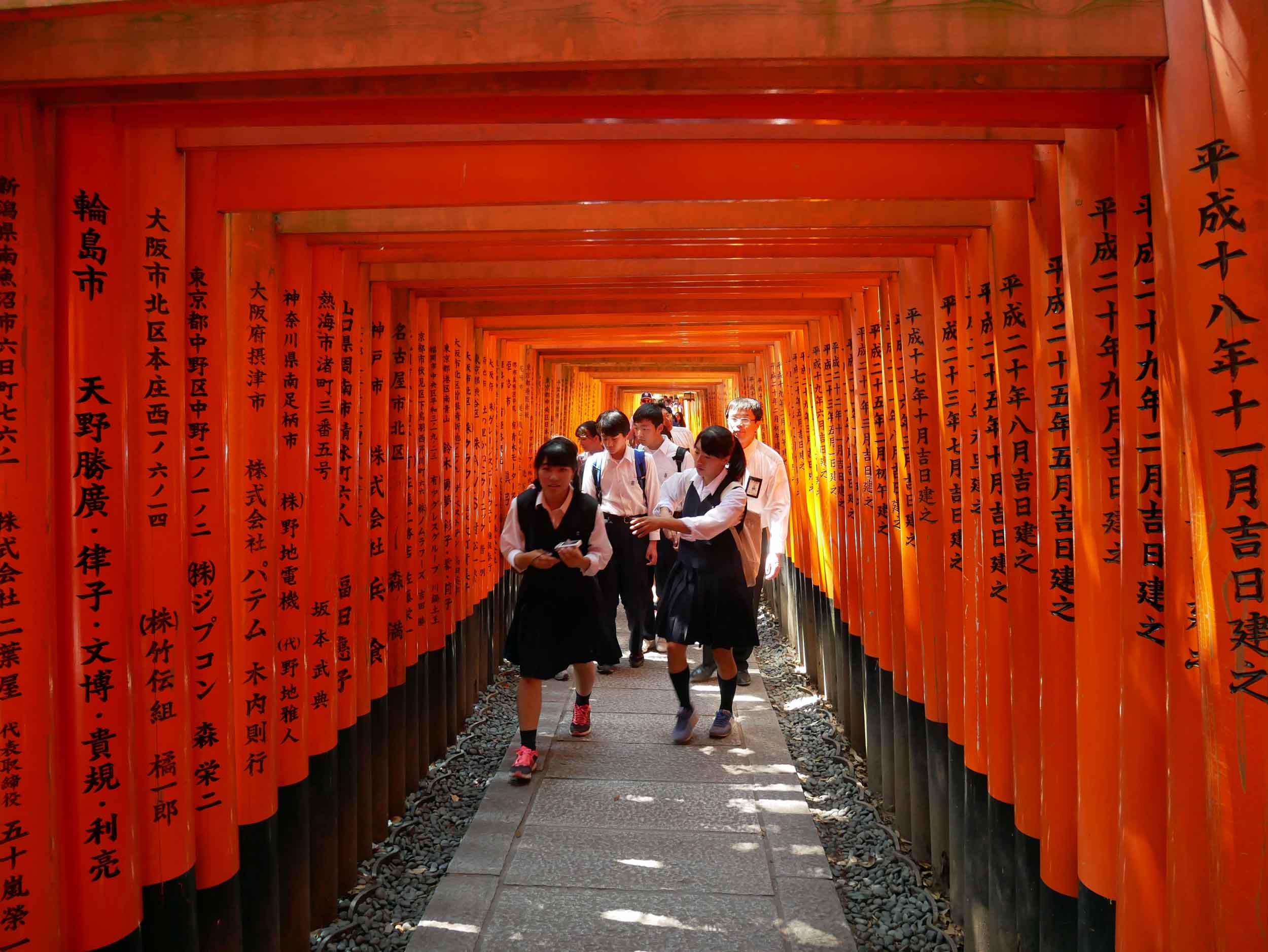

After we completed our loop through the woods—and had taken as many photos as our memory cards would allow—, we hopped back on our bikes and rode along the winding Kamo River. We made our way across town (literally) to Daitoku-Ji, an ancient Buddhist compound of temples and gardens with historical association to the founding of the Rinzai school of Zen as well as the elaborate Japanese tea ceremony. Dating back to the 1300s, Daitoku-Ji includes six main buildings with some 22 sub-temples and many family compounds for monks, nuns and scholars who all live on the grounds. Although we, unfortunately, arrived too late to visit the inside of the temples we had set out to visit, the complex—practically a small village within the city—was itself so stunningly peaceful and beautiful that we offered our gratitude before making our way back to the hotel to rest and freshen up for dinner. That evening, we found ourselves at a lively izakaya, or Japanese gastropub, where we sat at the bar and ordered a complete menu of food varieties. Day one in Kyoto was active and packed, but day two was sure to be even more special…Trey’s birthday!
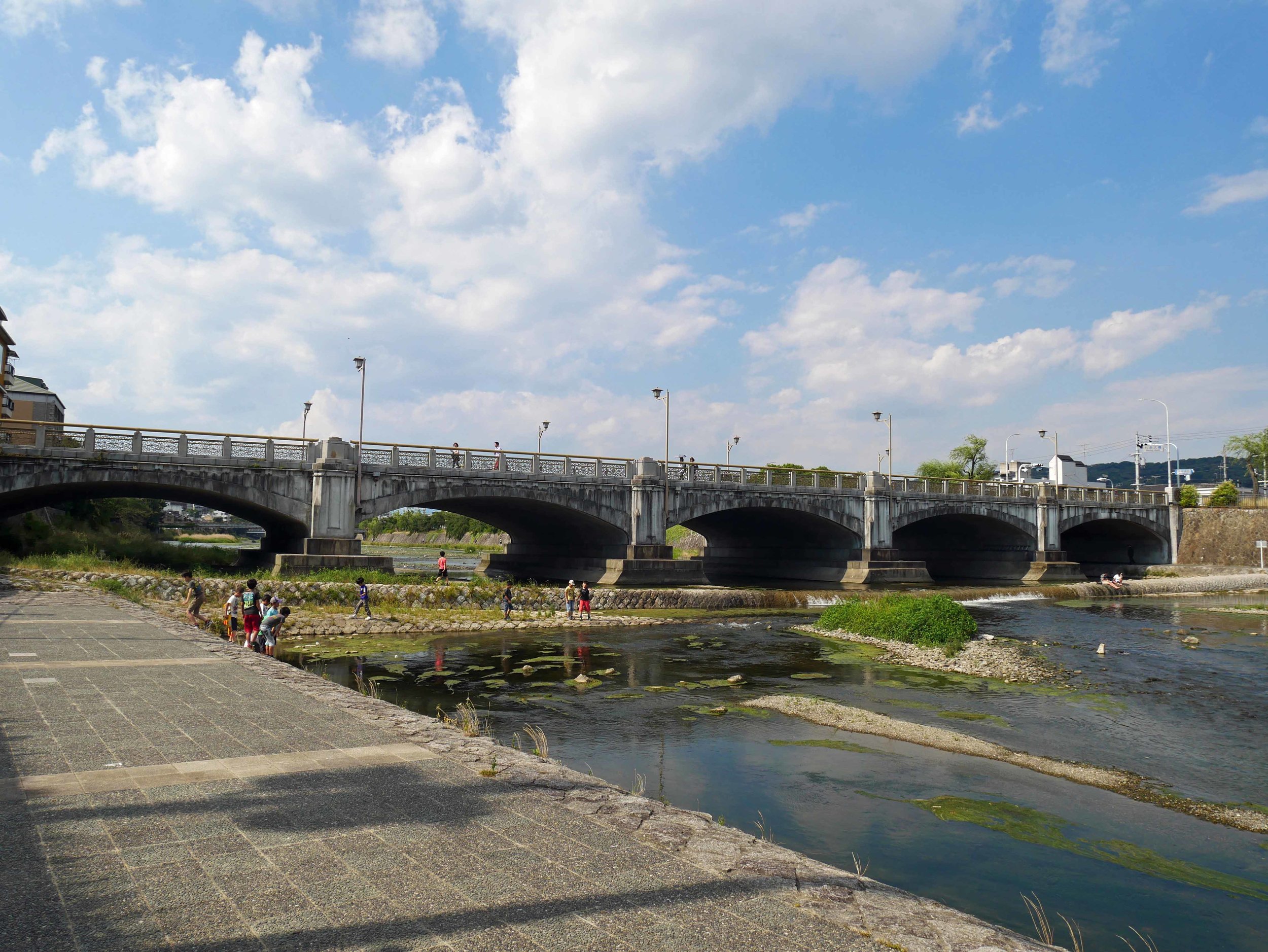
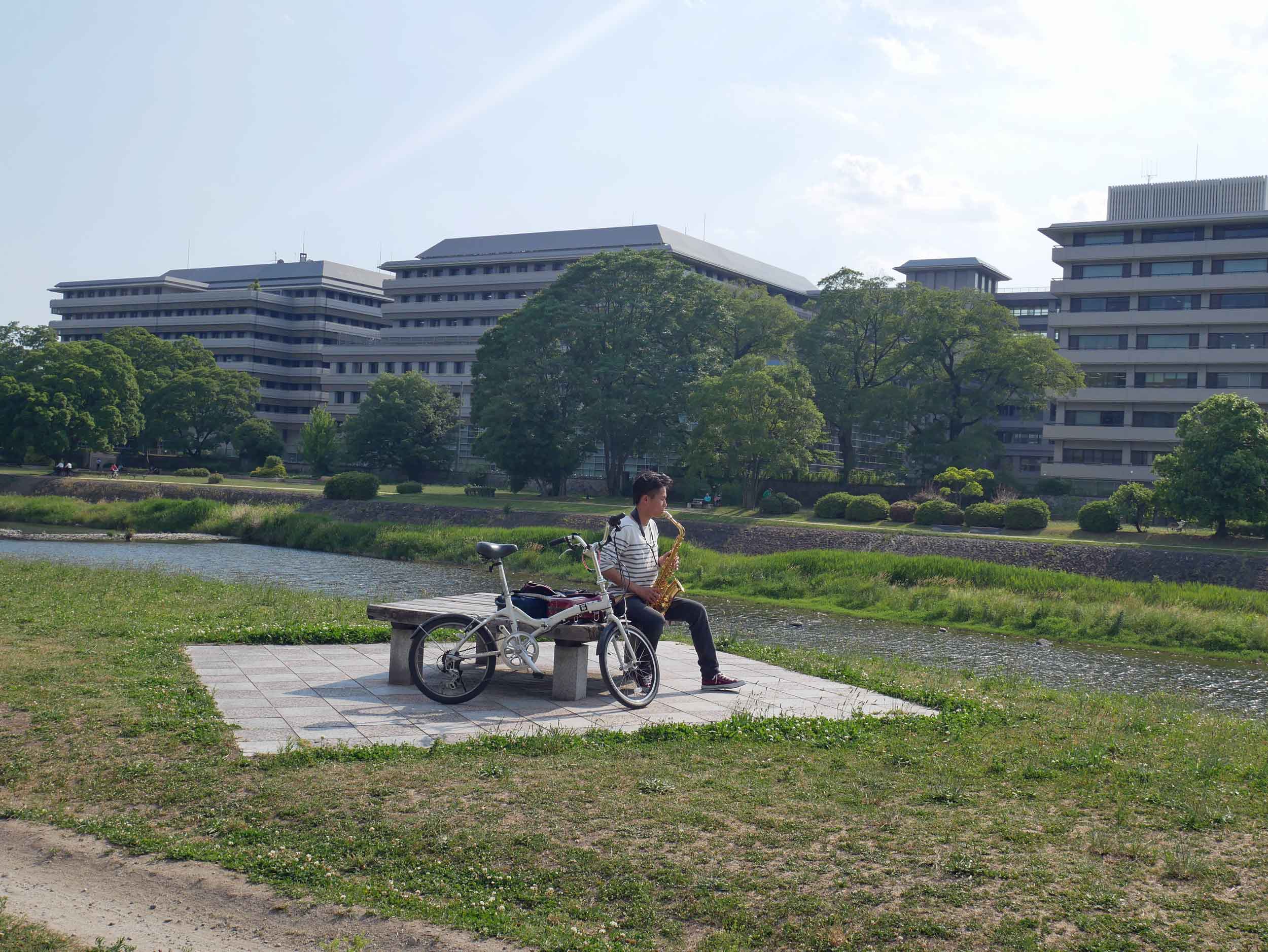
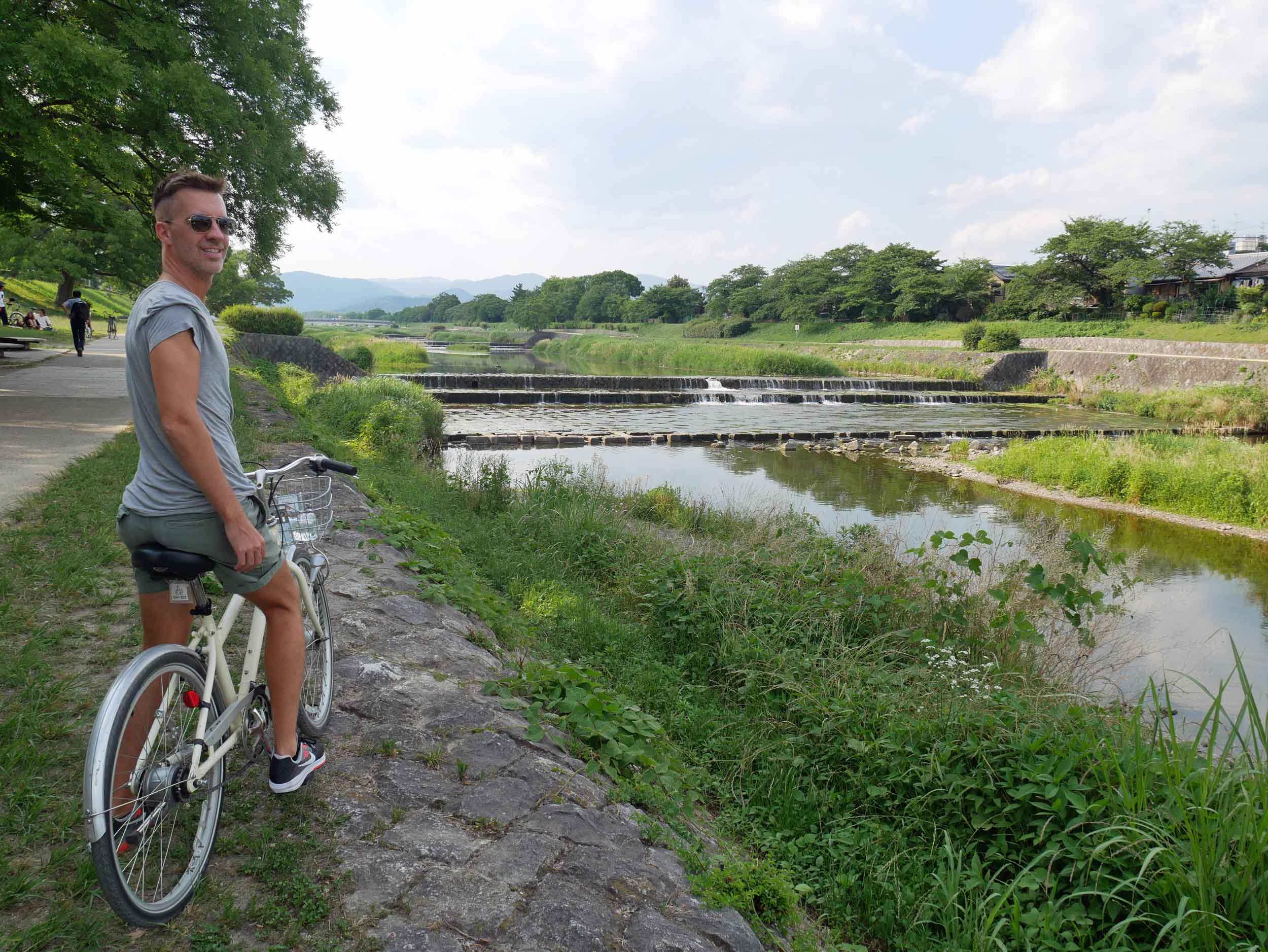
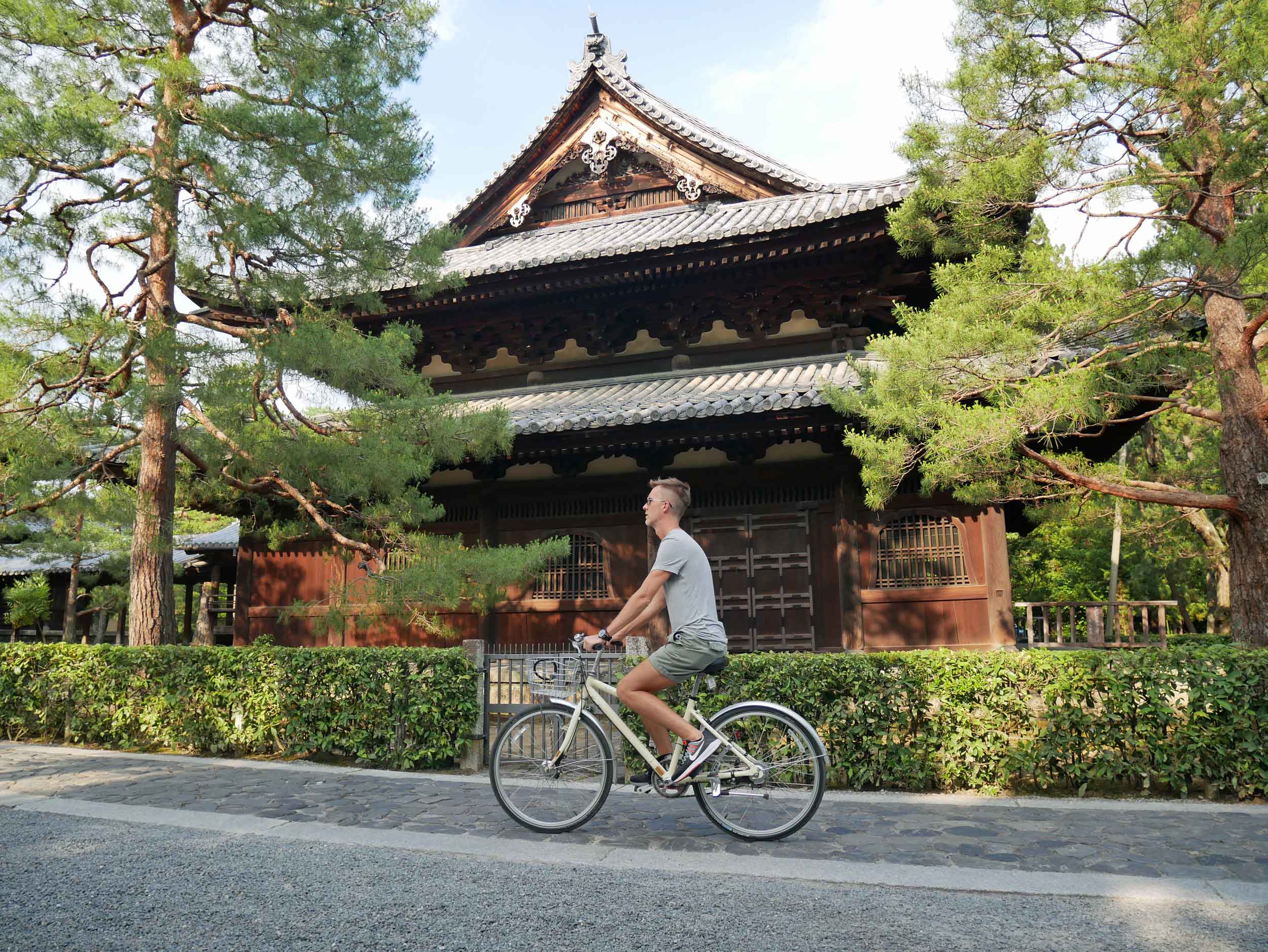
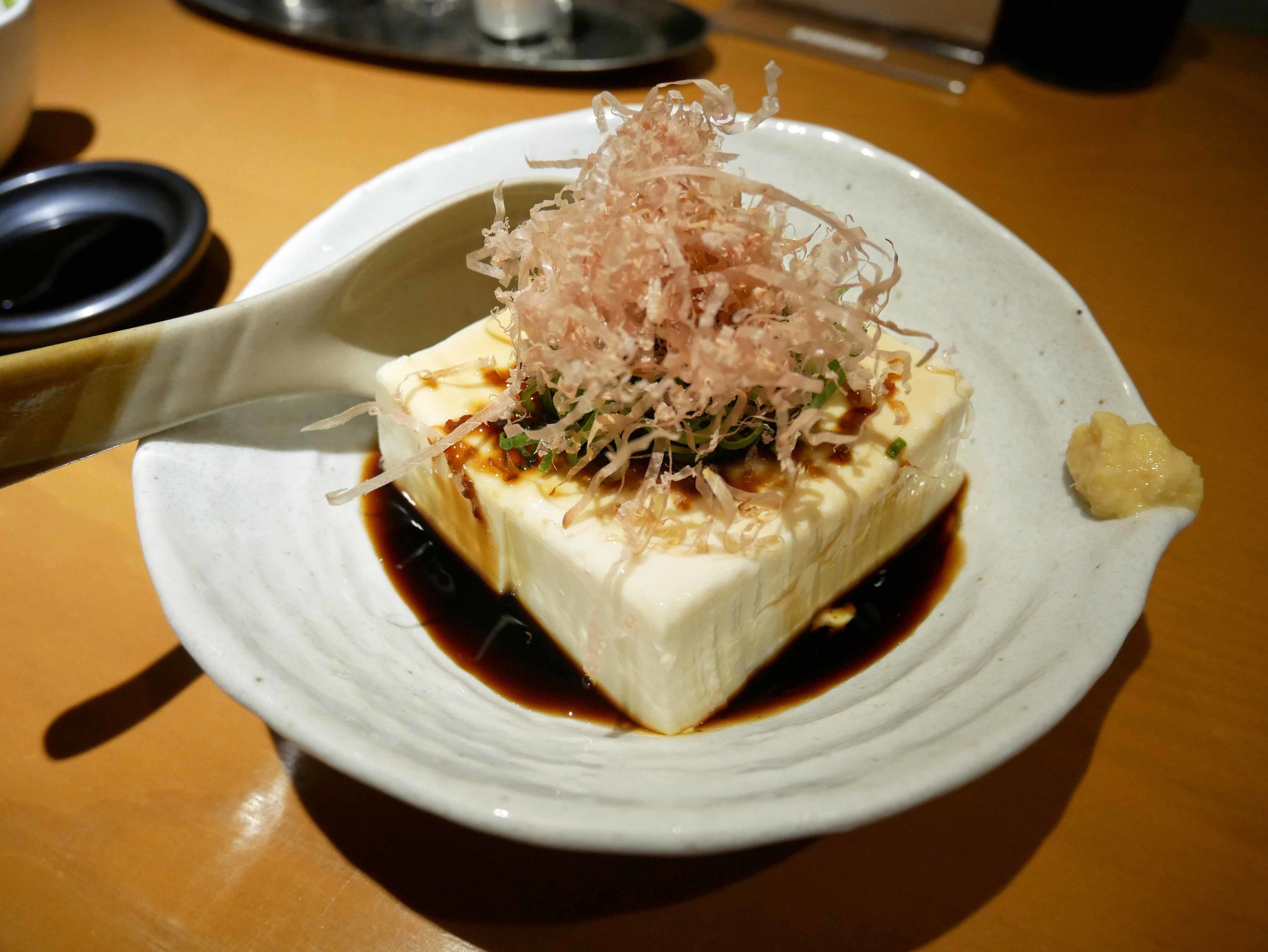
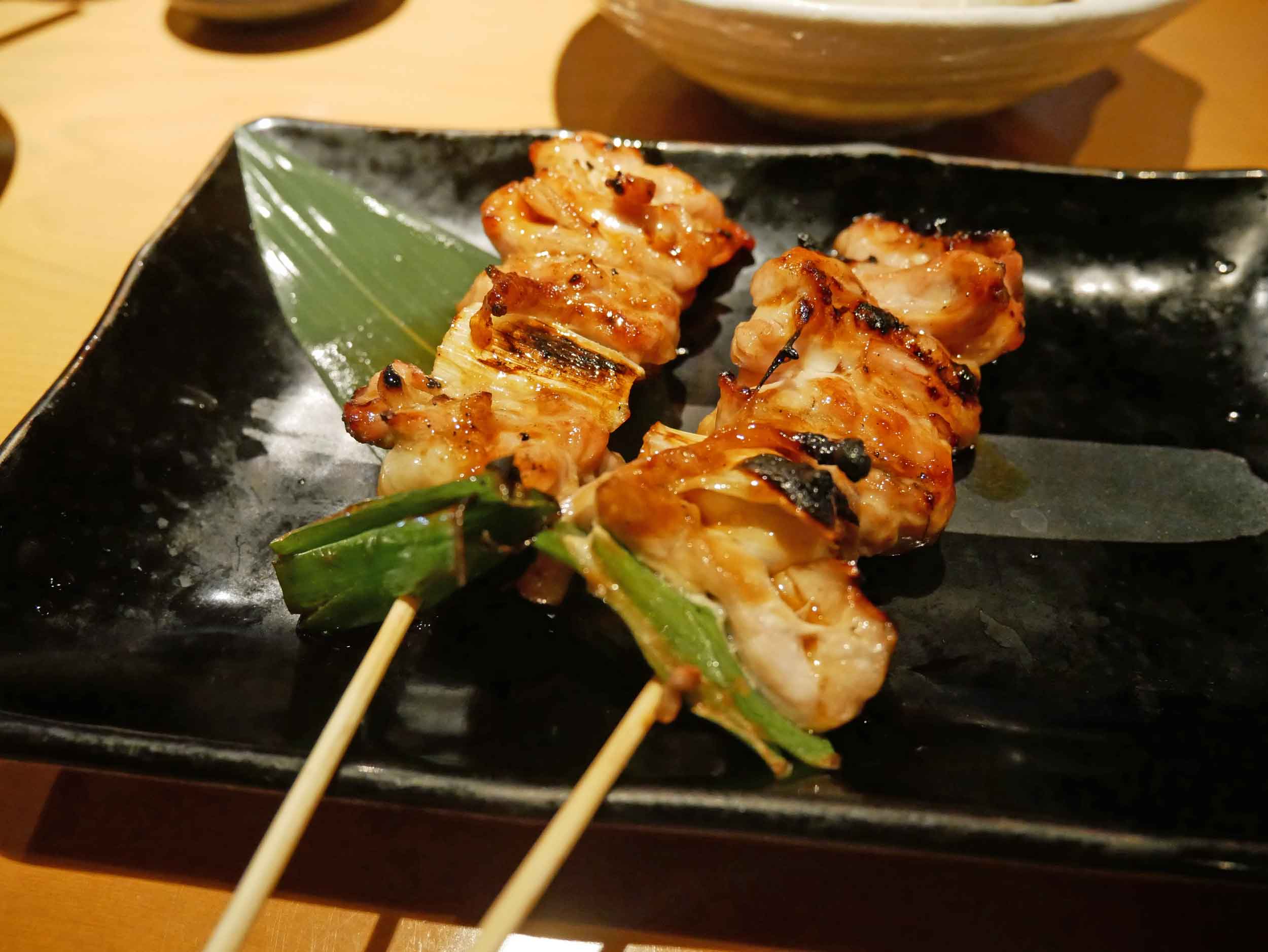
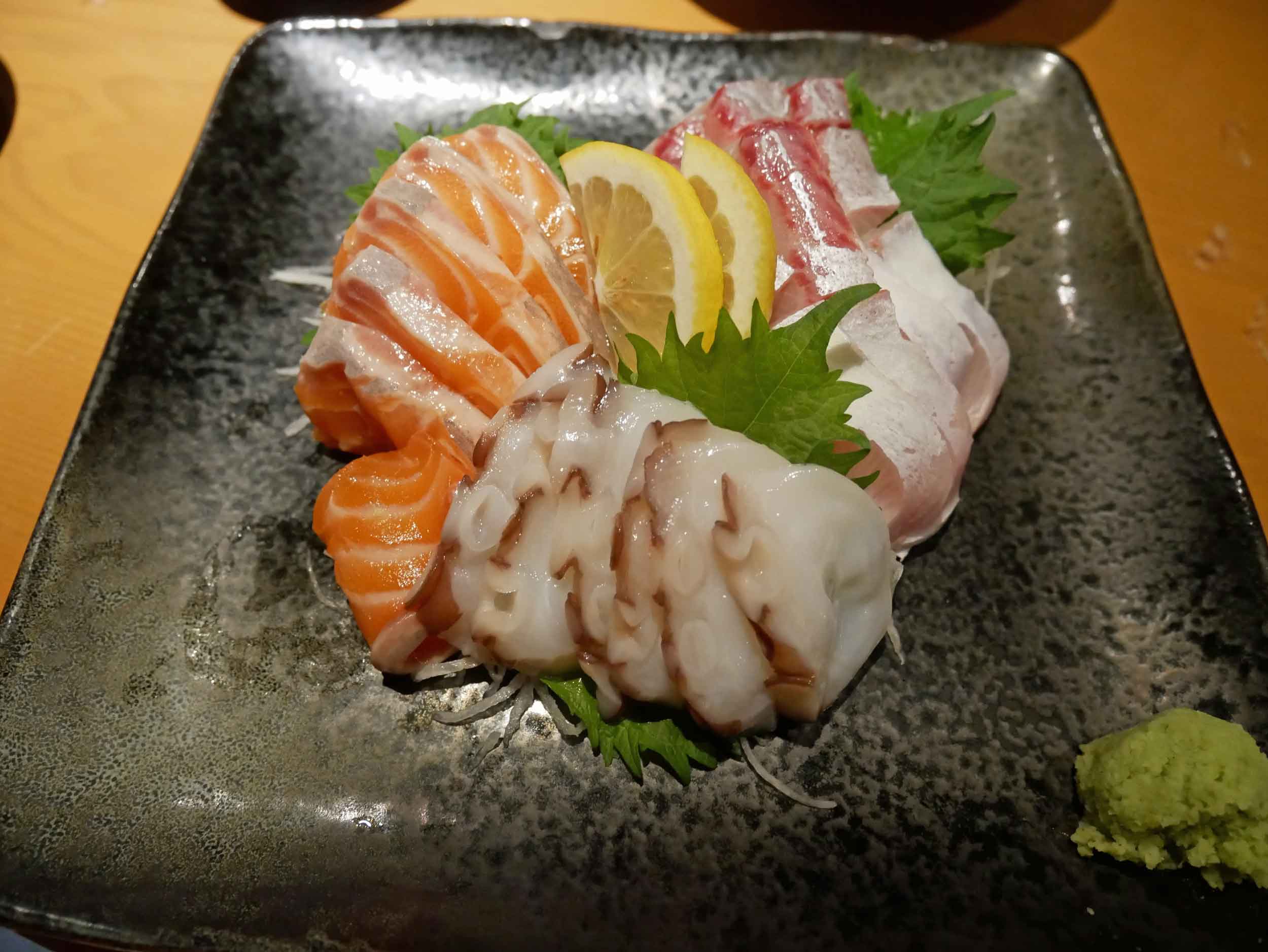
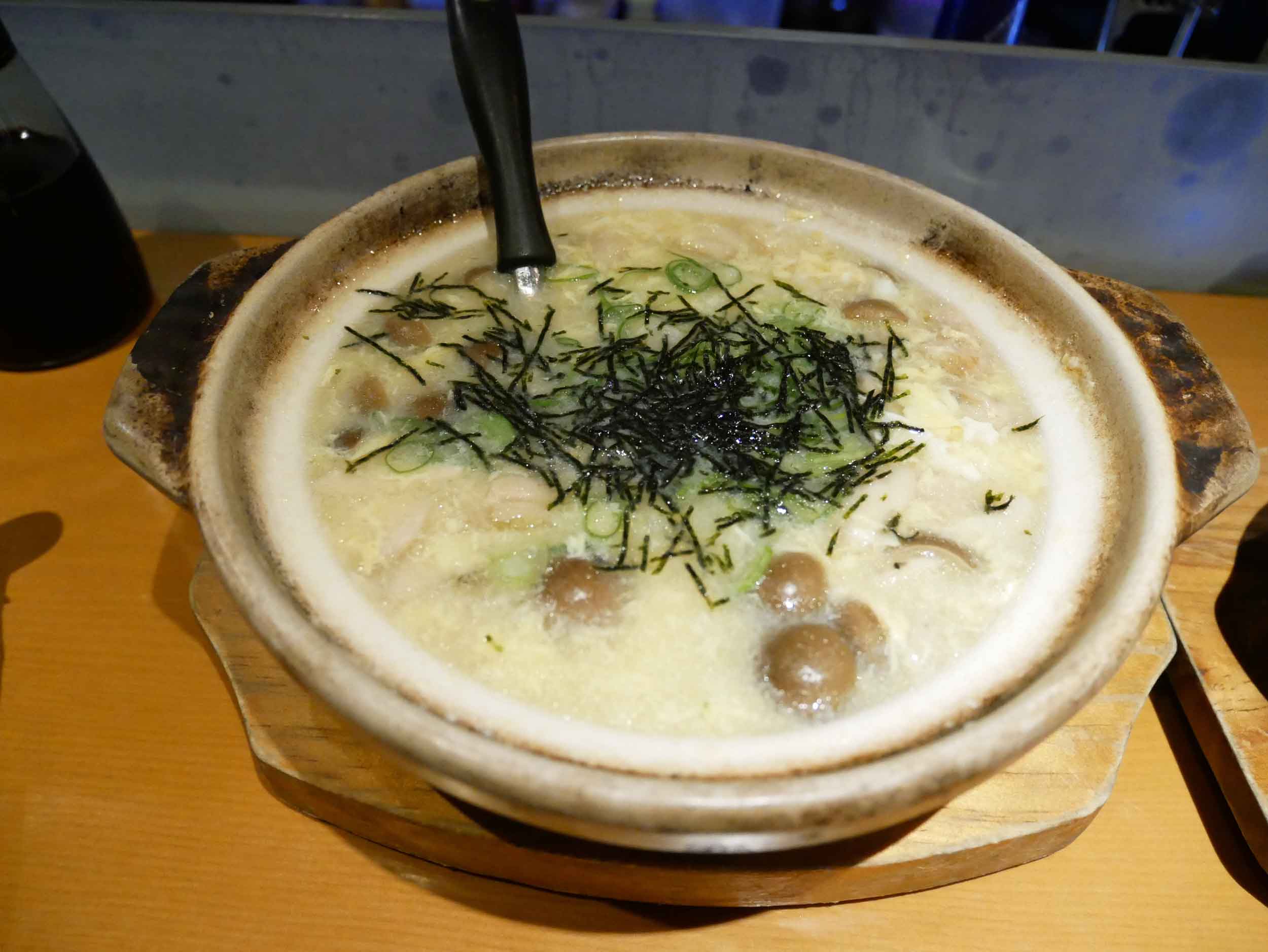
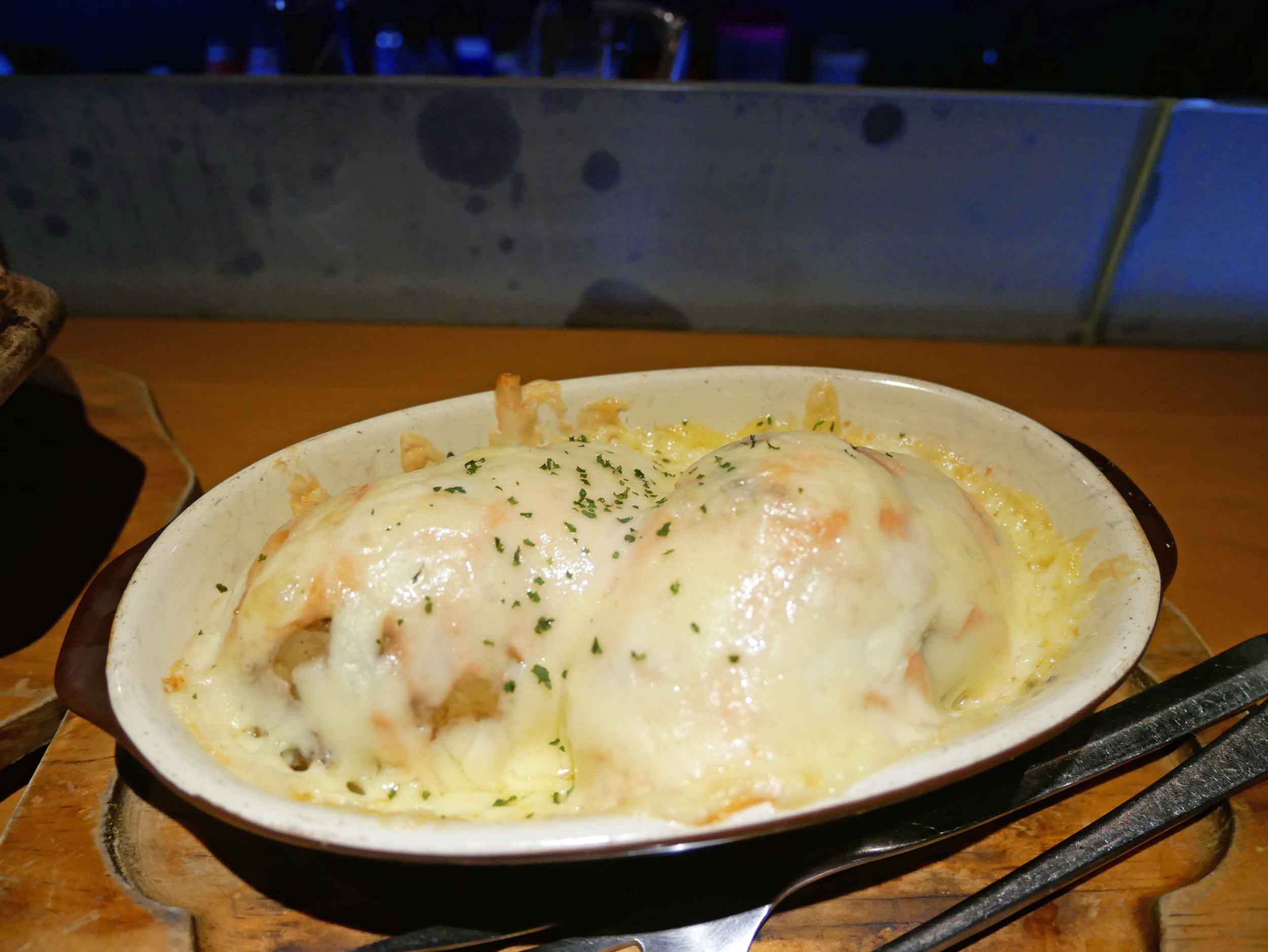
After a healthy breakfast at Anteroom, we immediately hopped back on our bikes and headed for a full day’s itinerary (thanks to Martin) of temples, gardens, and delicious food and coffee. We started at the scenic and incredibly popular Kiyomizudera temple, we were delighted by the numerous young people in traditional national costume visiting the site along with us. The views from the hill upon which the temple is perched afforded an incredible vantage of the sprawling city. After lighting a stick of incense in honor of Trey’s birthday, we made our way down the slope to the trendy and delicious Arabica Coffee Shop for a quick pick-me-up. Fully charged, we continued our ride to the Shorenin temple, which was built in the 13th century. As we toured the ancient buildings, the most memorable sight was observing the warm light filter through the eight-hundred-year-old camphor trees in the tranquil garden surrounding the temple. After a moment of meditation, we made our way to a tasty lunch at the gluten-free and organic, Choice Café. It was such a rare treat to find a restaurant in Japan that catered to a GF diet (not to mention with fresh veggies), so we relished the opportunity to enjoy a meal at this modern restaurant full of fashionable locals.
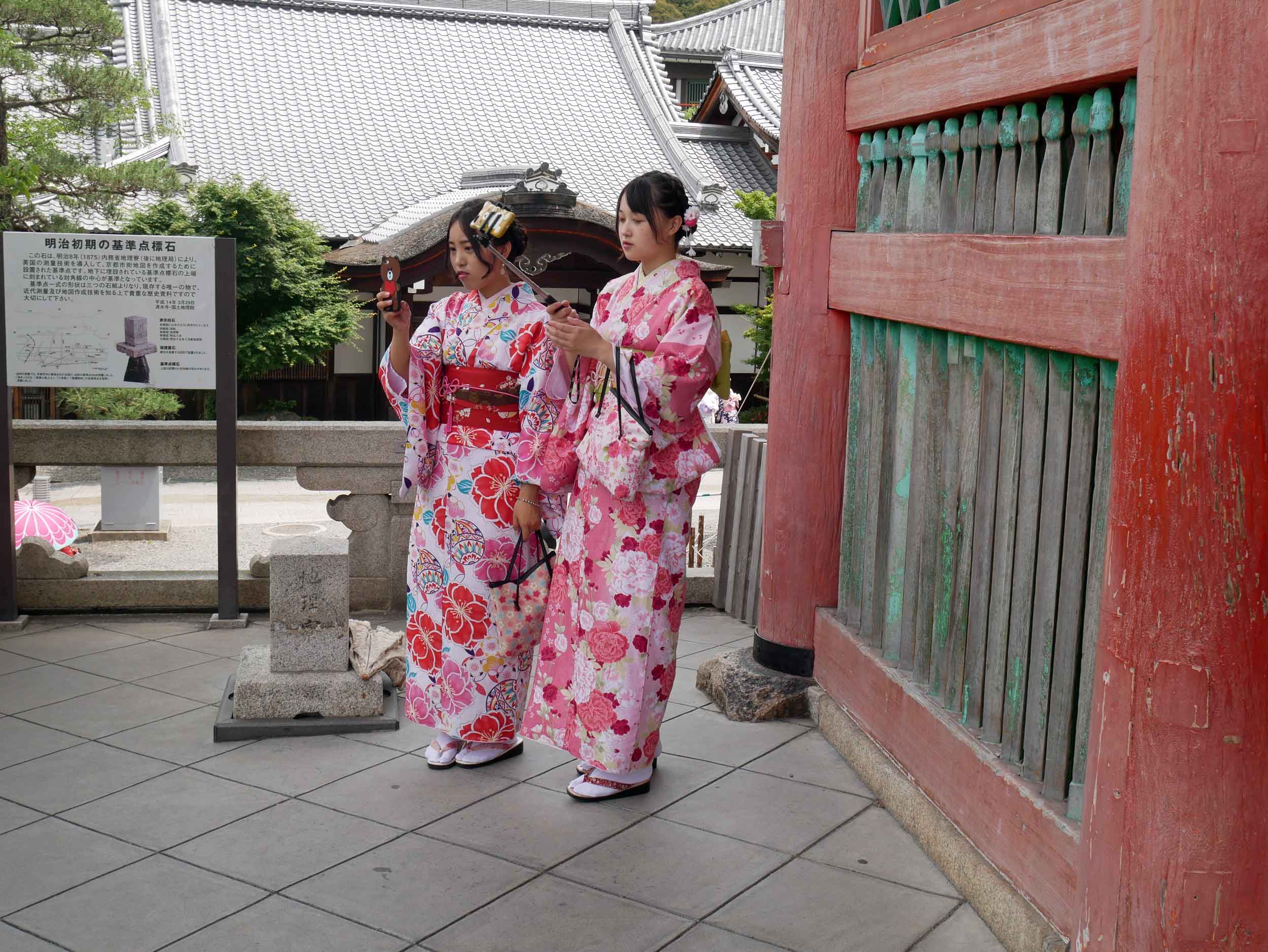
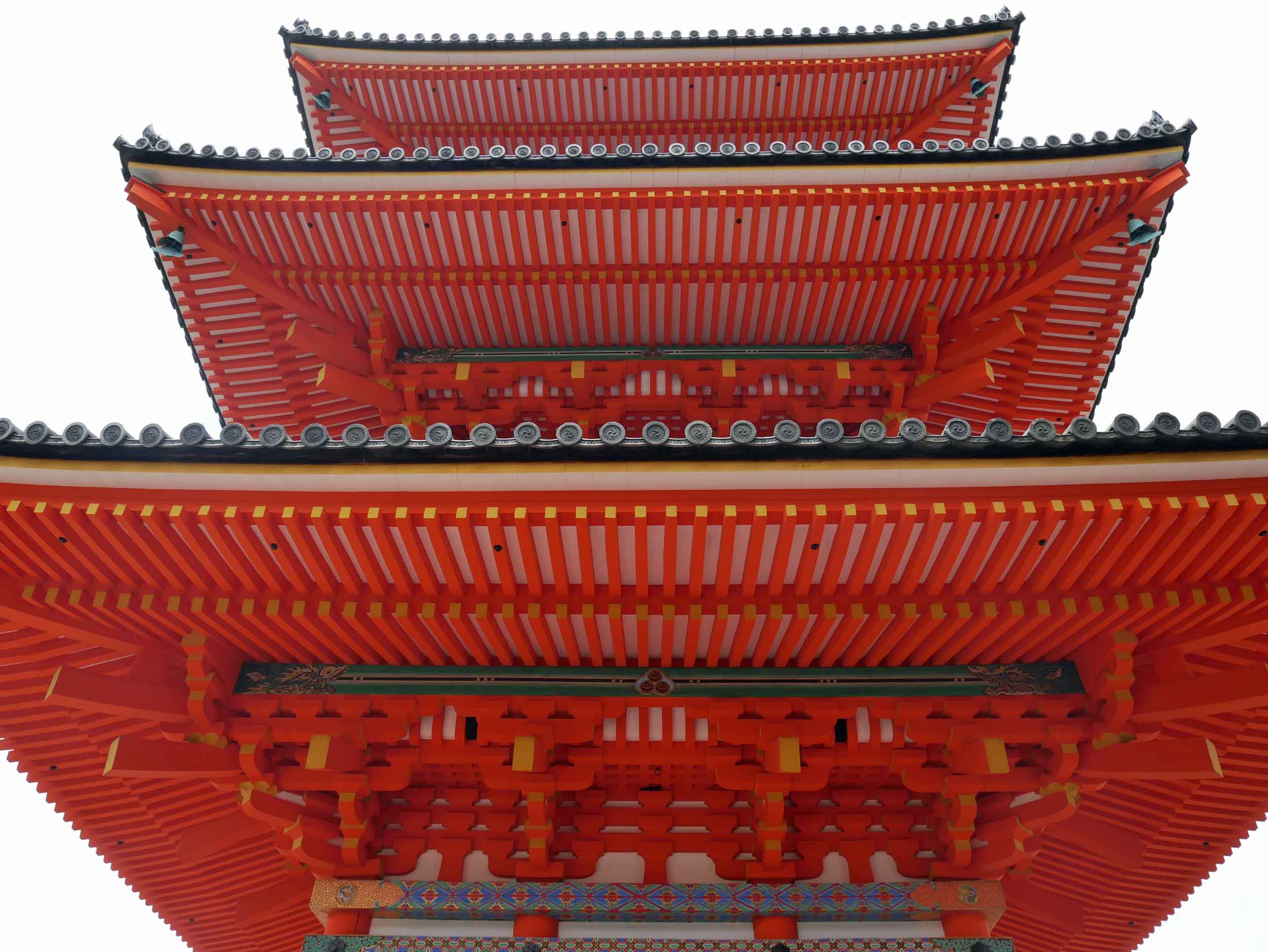
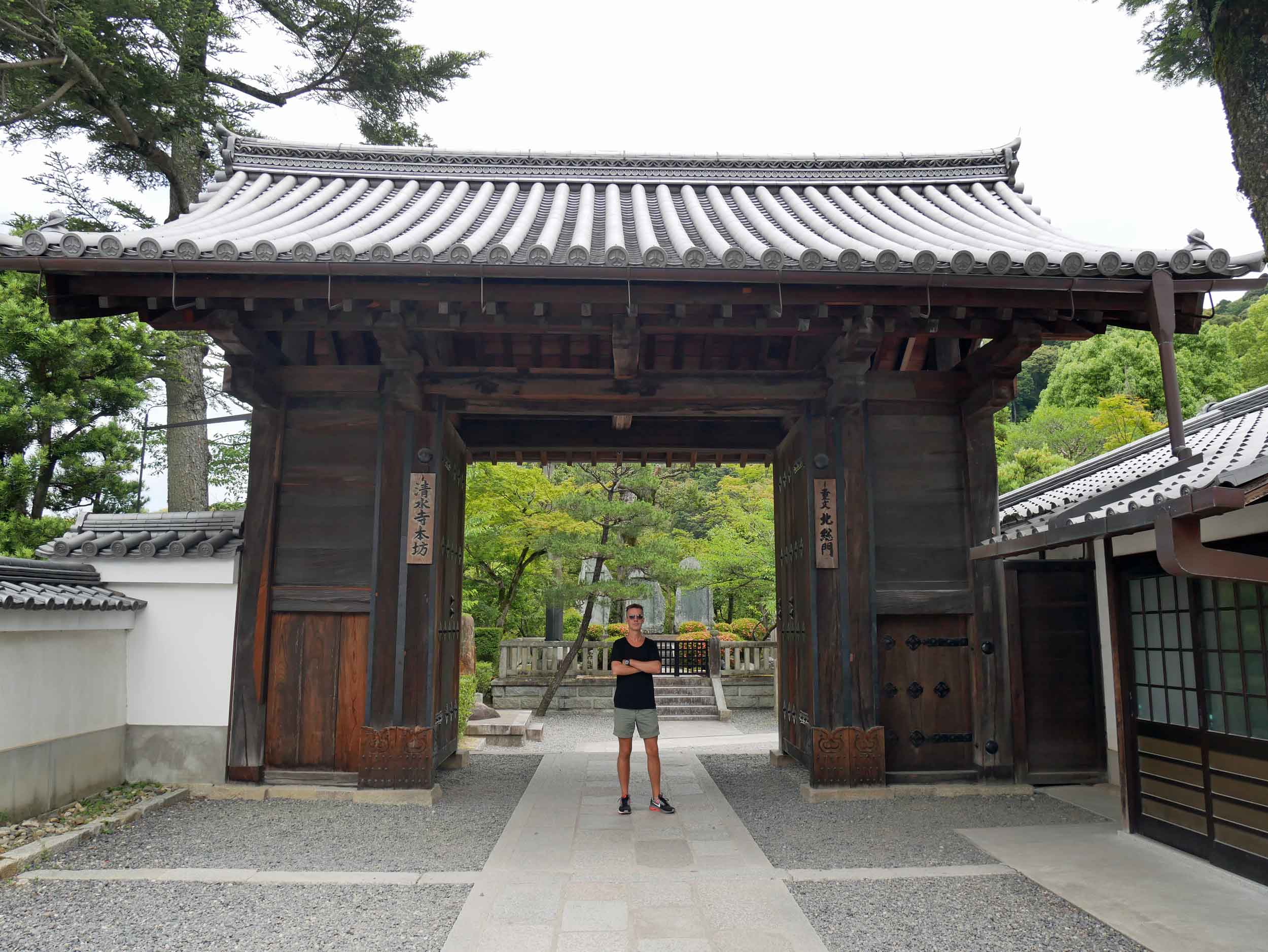
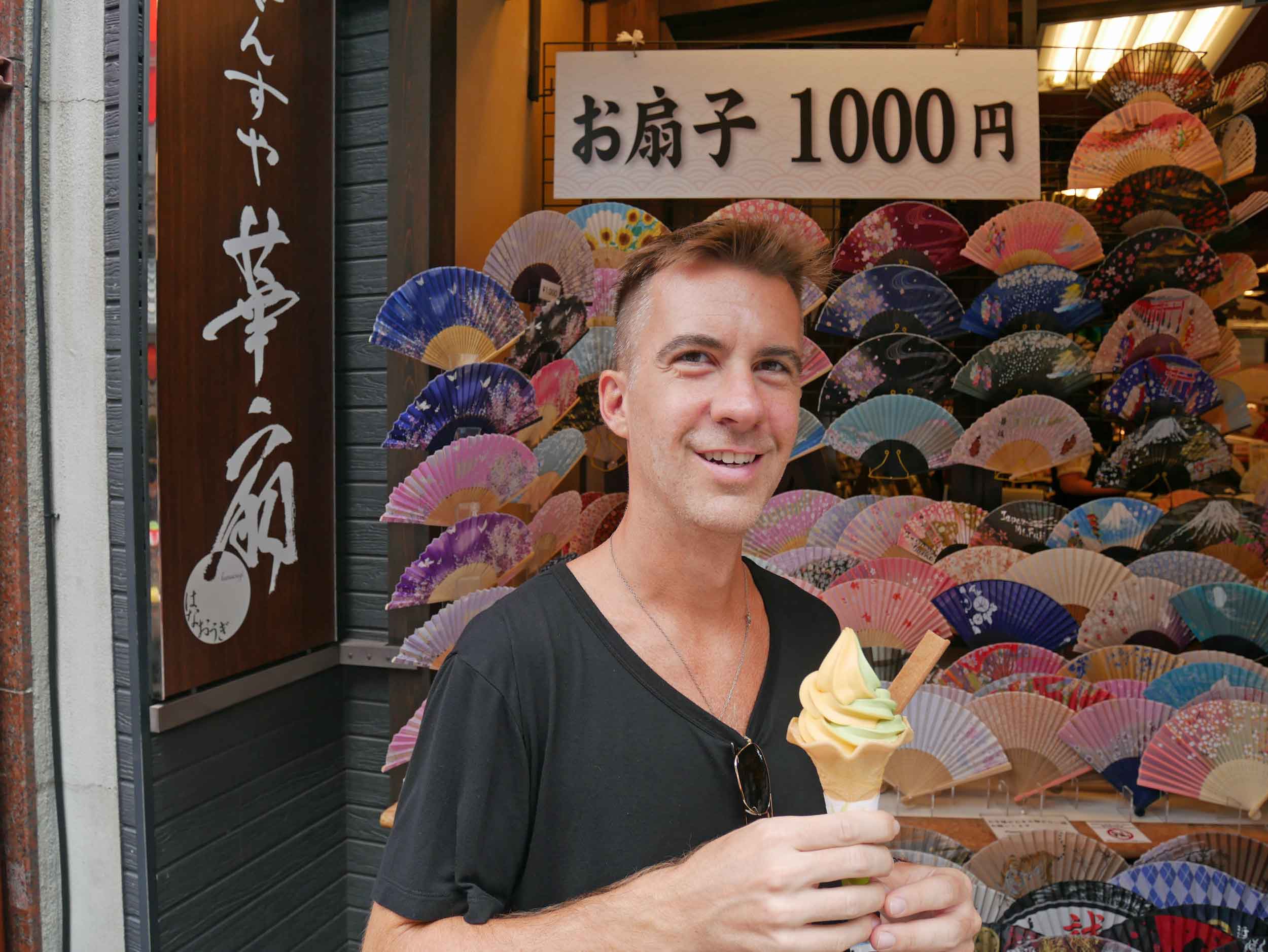

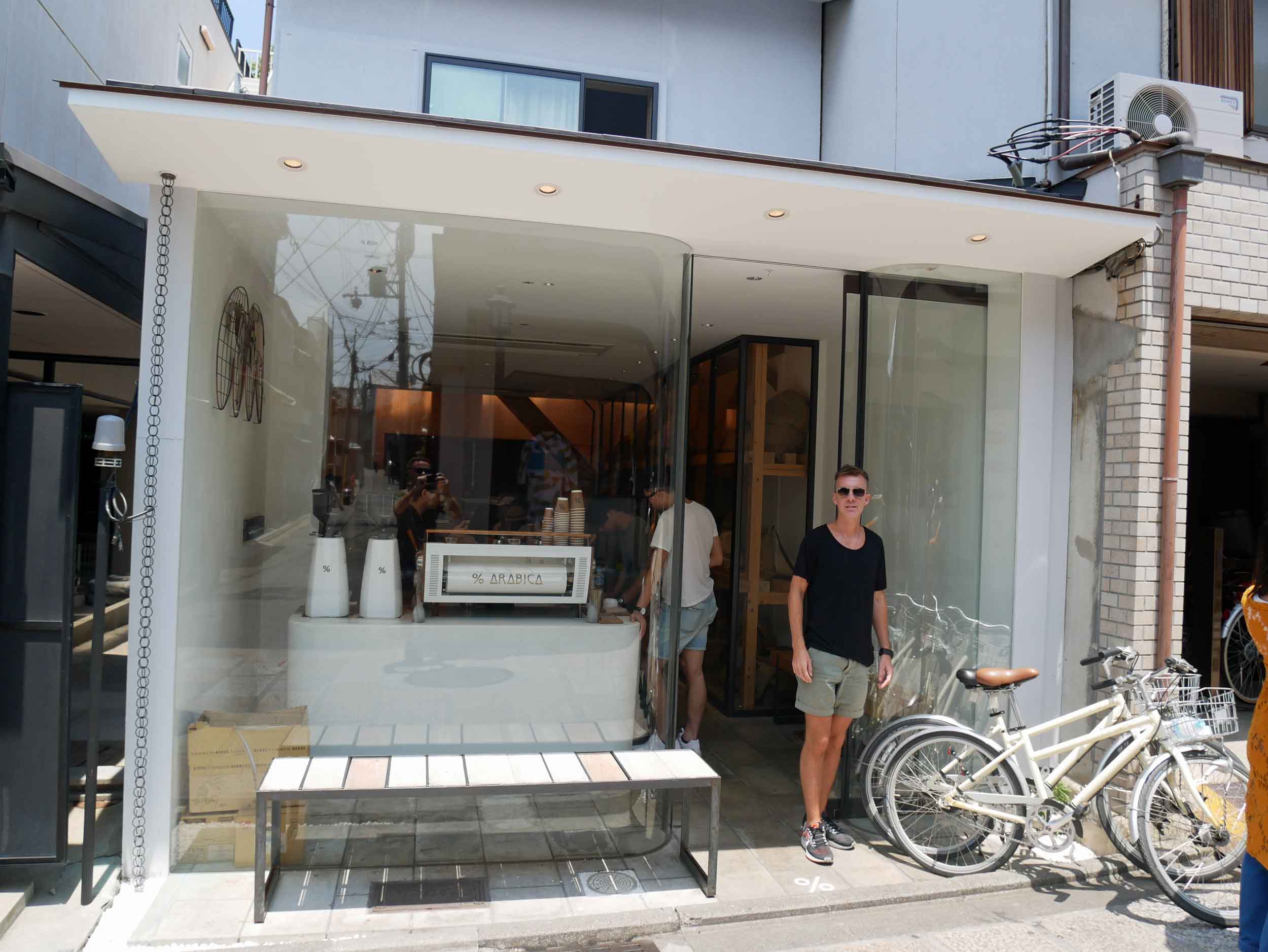
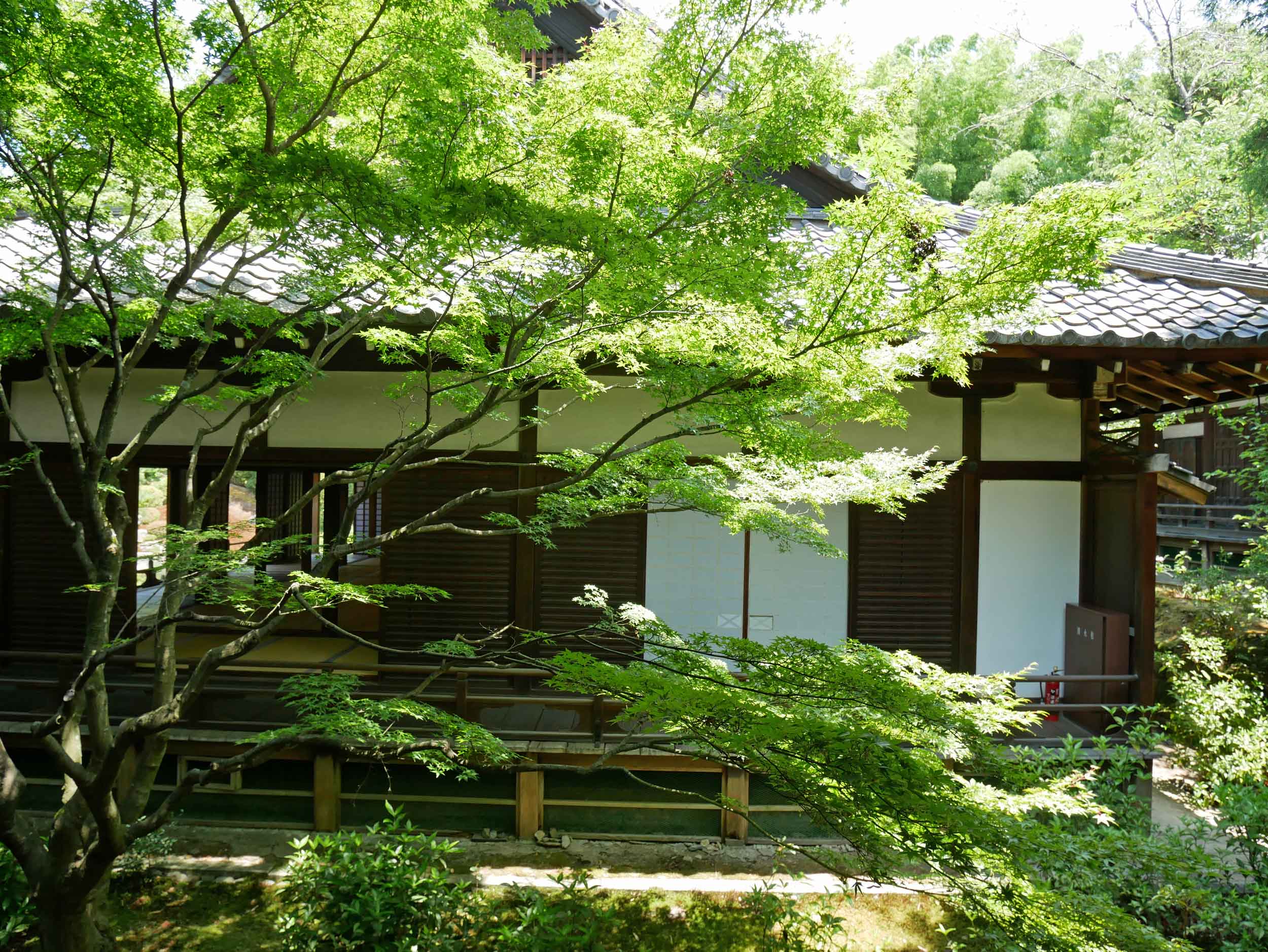
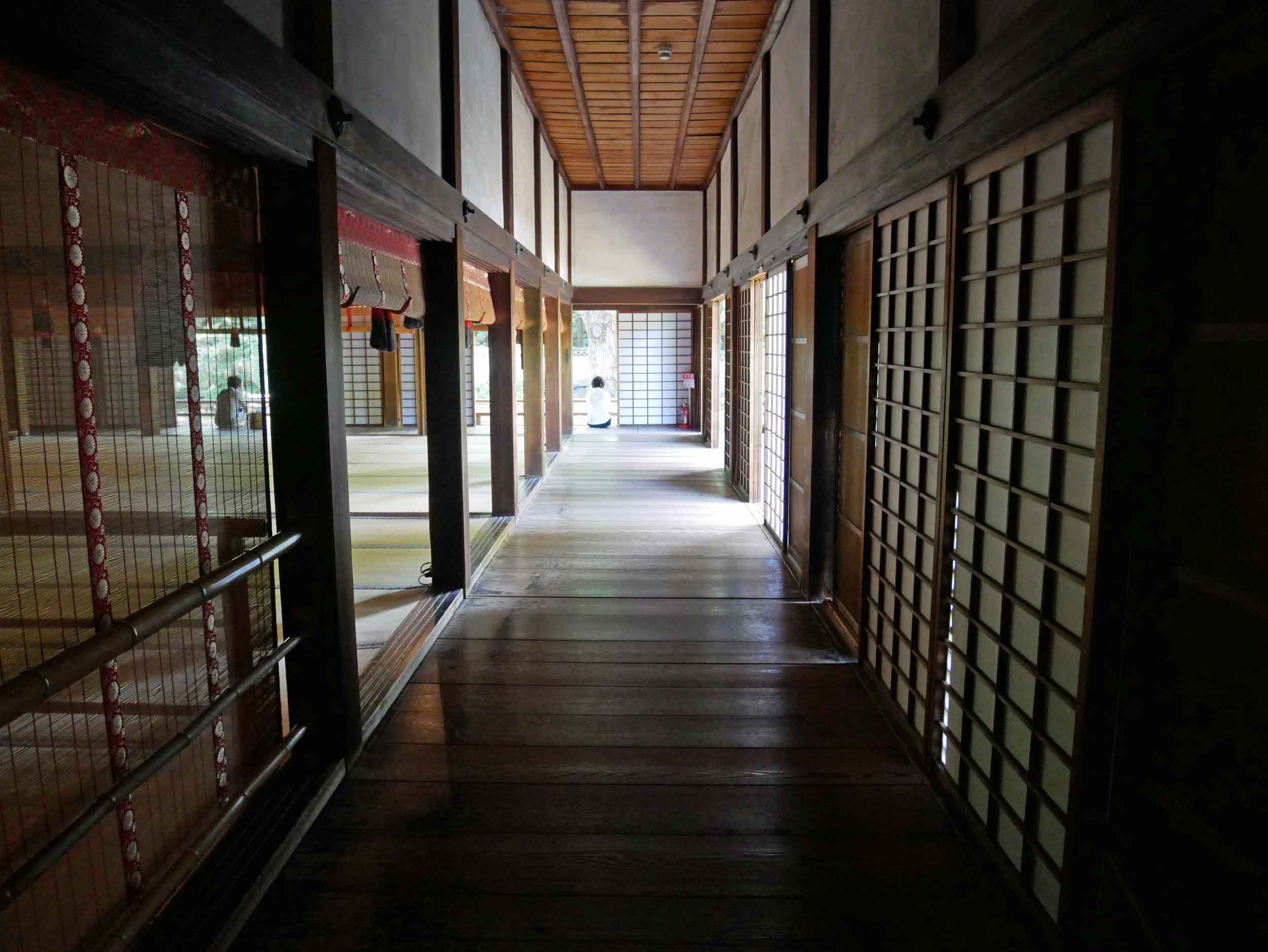


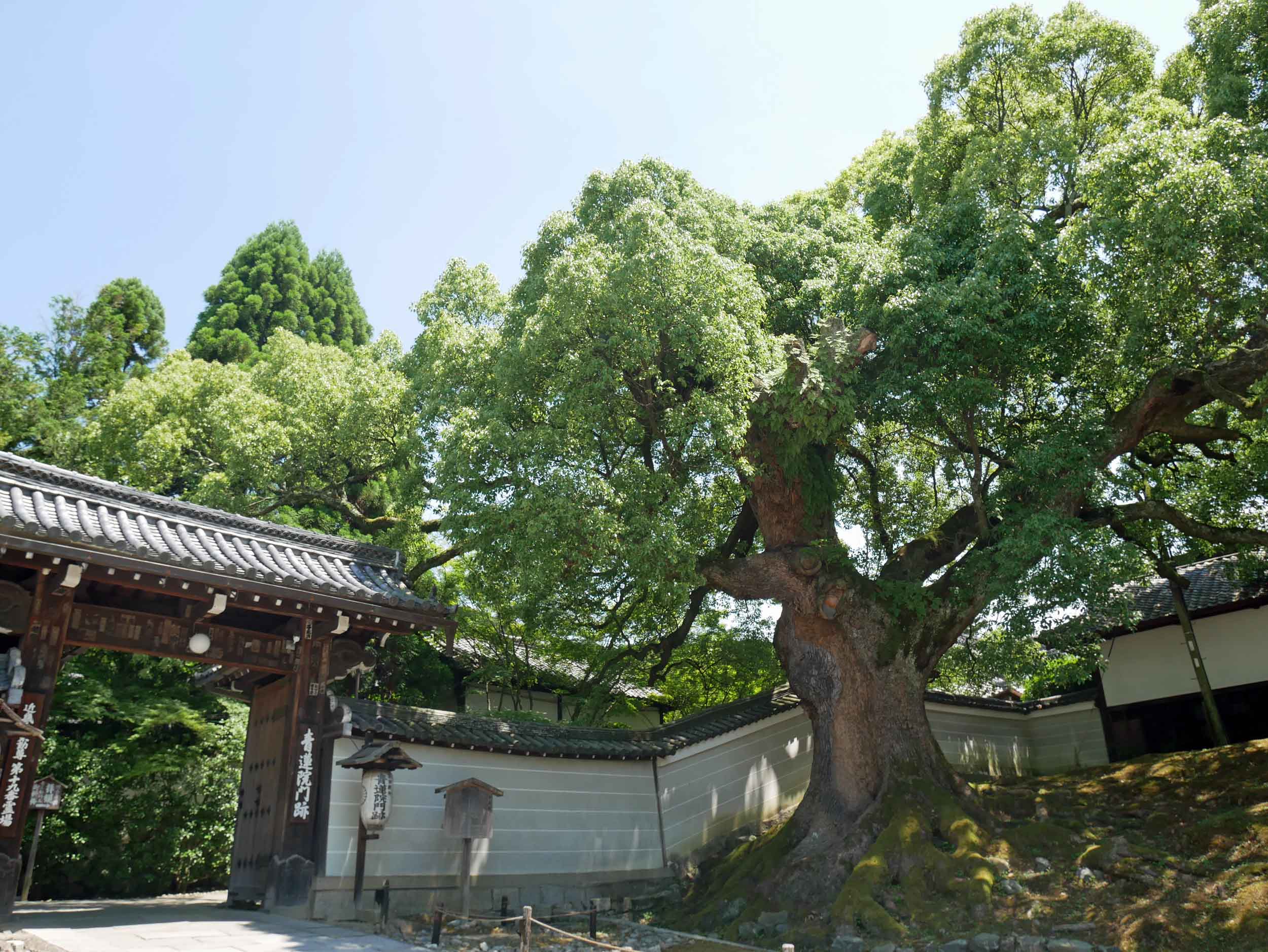
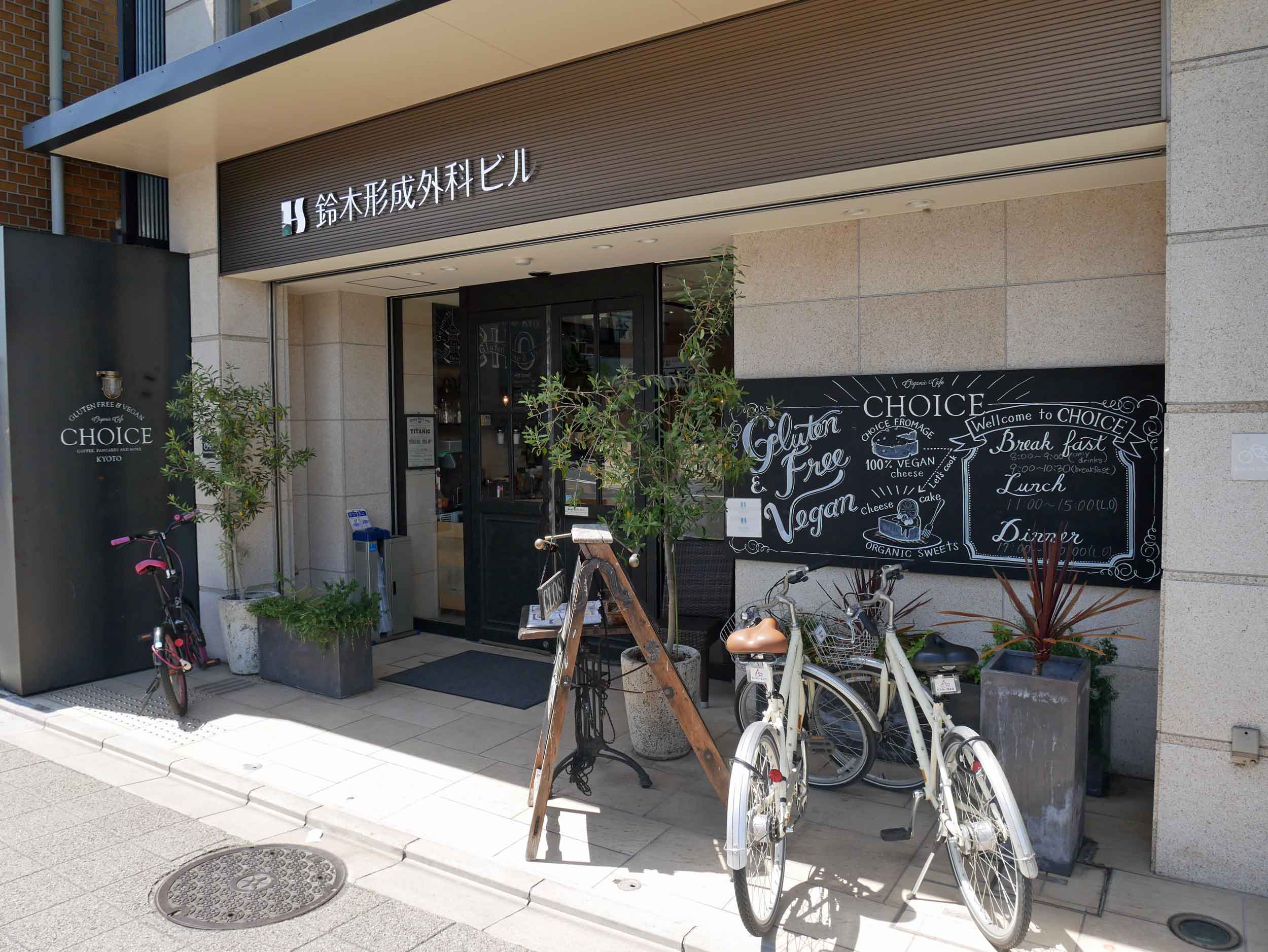
After lunch, we had two more temples on our must-see list. First up was Honen-in, a lovely and secluded temple set back in the woods with an otherworldly, almost eerie vibe of raked stone gardens. And then finally, we arrived to Ginkakuji, which had the most impressive raked stone gardens, made even more beautiful in the shadowy afternoon light. After a full-day immersion in temple culture, we were verging on temple fatigue (and actual fatigue, having biked to nearly every corner of Kyoto), so we made our way back to the hotel to rest and refresh.
Trey’s celebratory dinner was had at Itoh Dining Kyoto, an intimate restaurant with a view of the dreamy canal that runs alongside the charming Shinbashi Dori street. Our chef’s choice course menu was a delicious and sophisticated Japanese feast that included nobu style hors-d'oeuvres, hakone field green salad, grilled seafood sweet miso, A4 Wagyu steak, and grapefruit gelatin for dessert, and our post-dinner stroll confirmed for us that indeed Shinbashi Dori is one of the most beautiful streets in all of Asia.
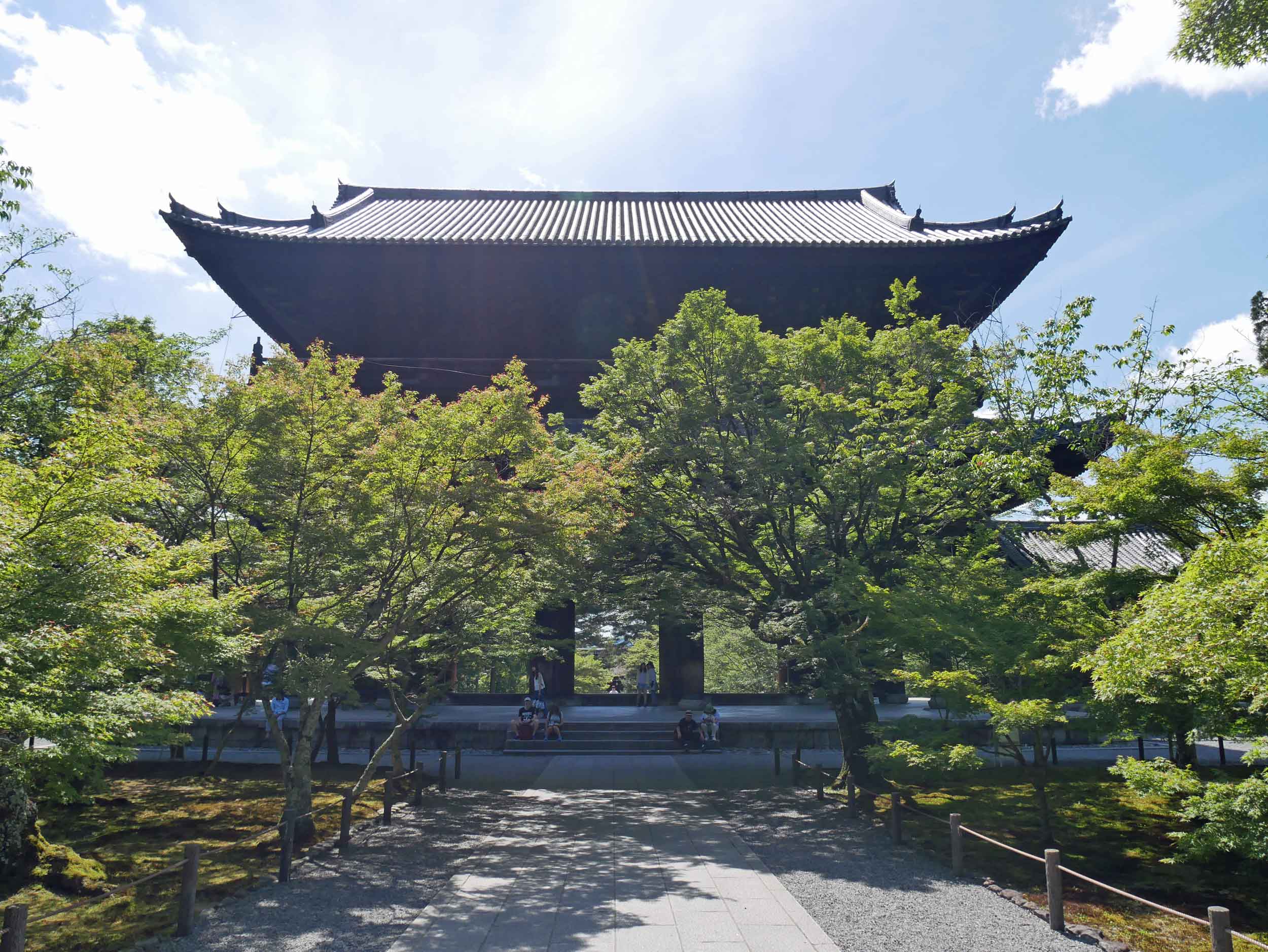
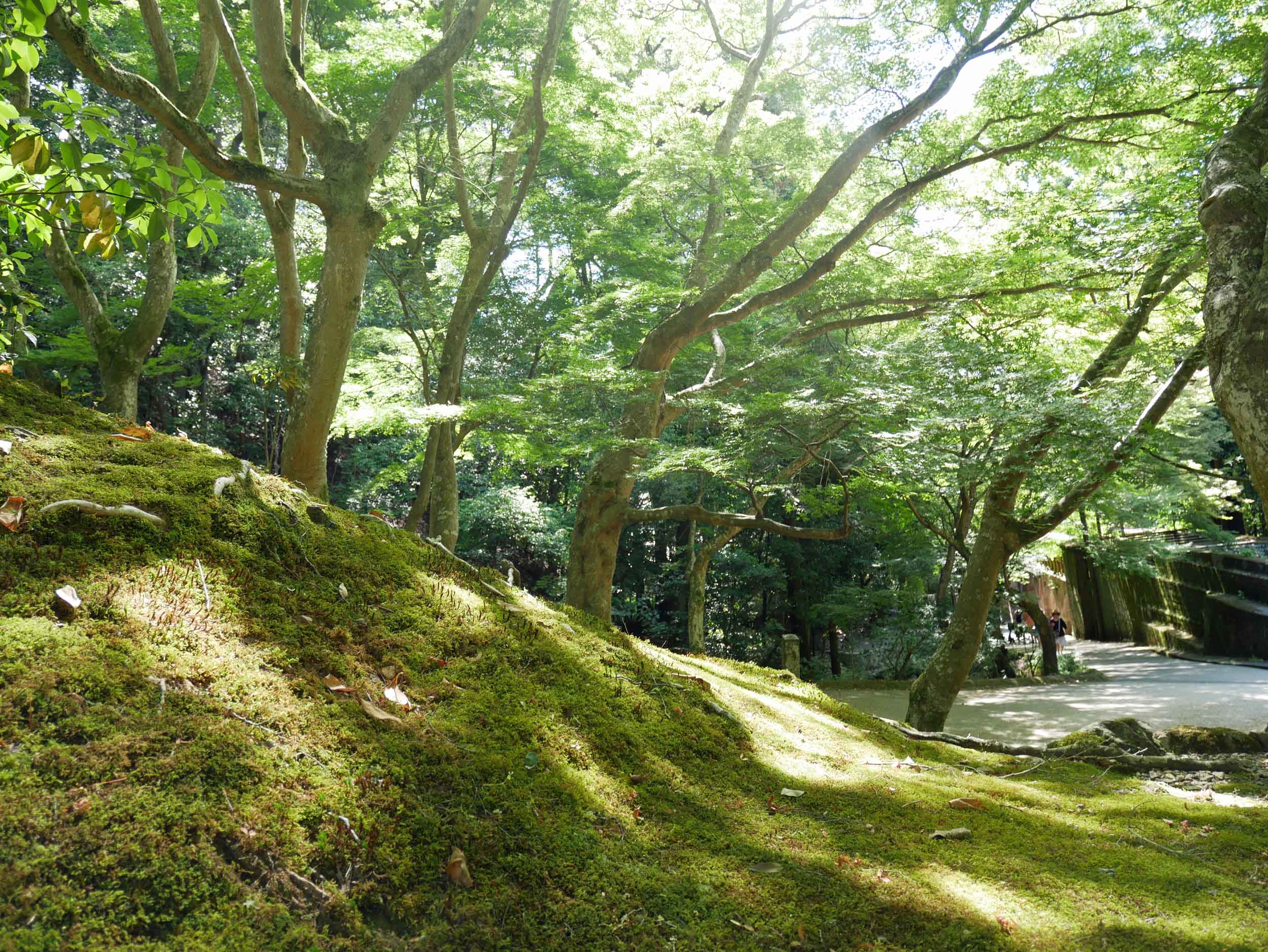
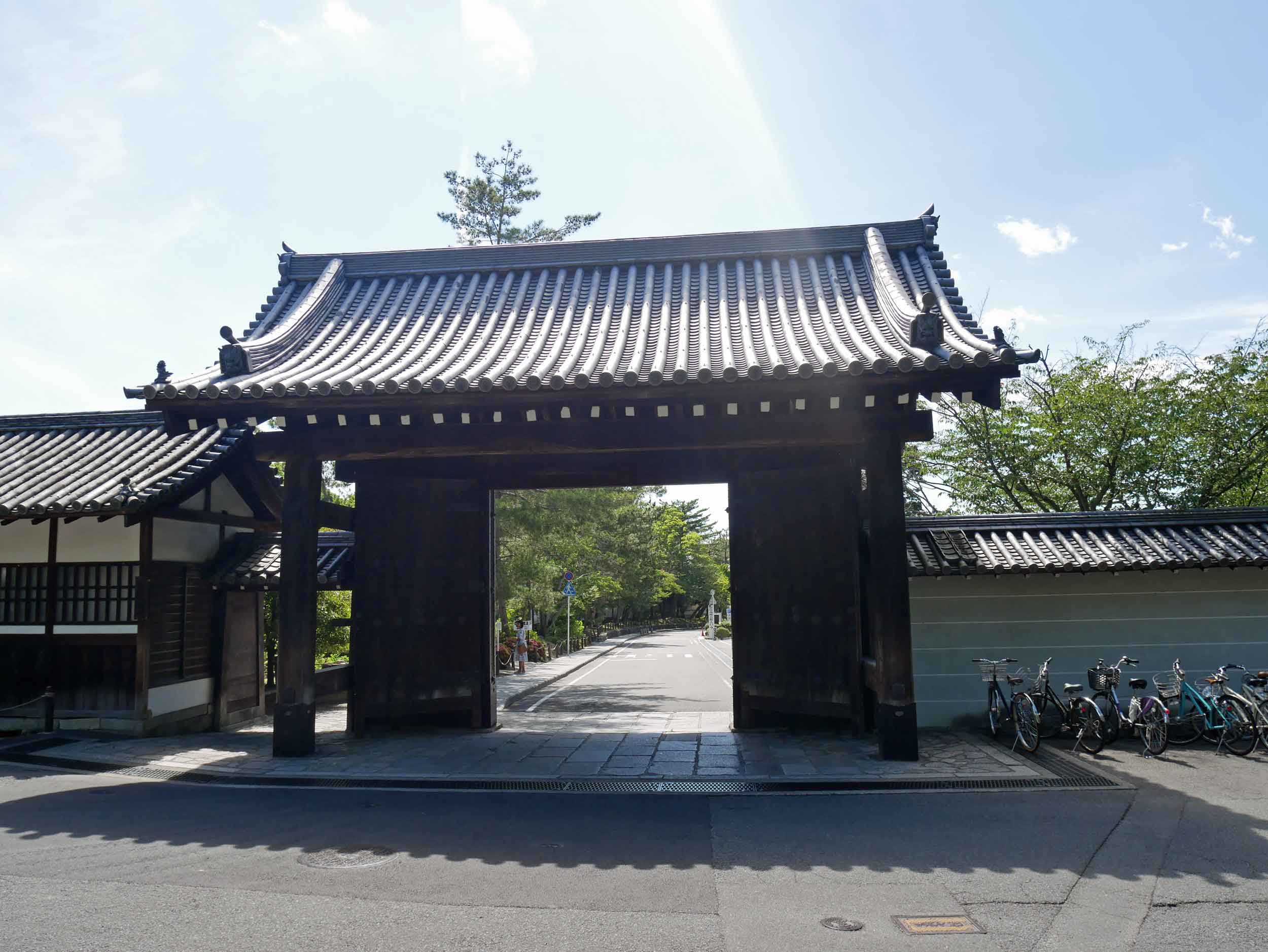
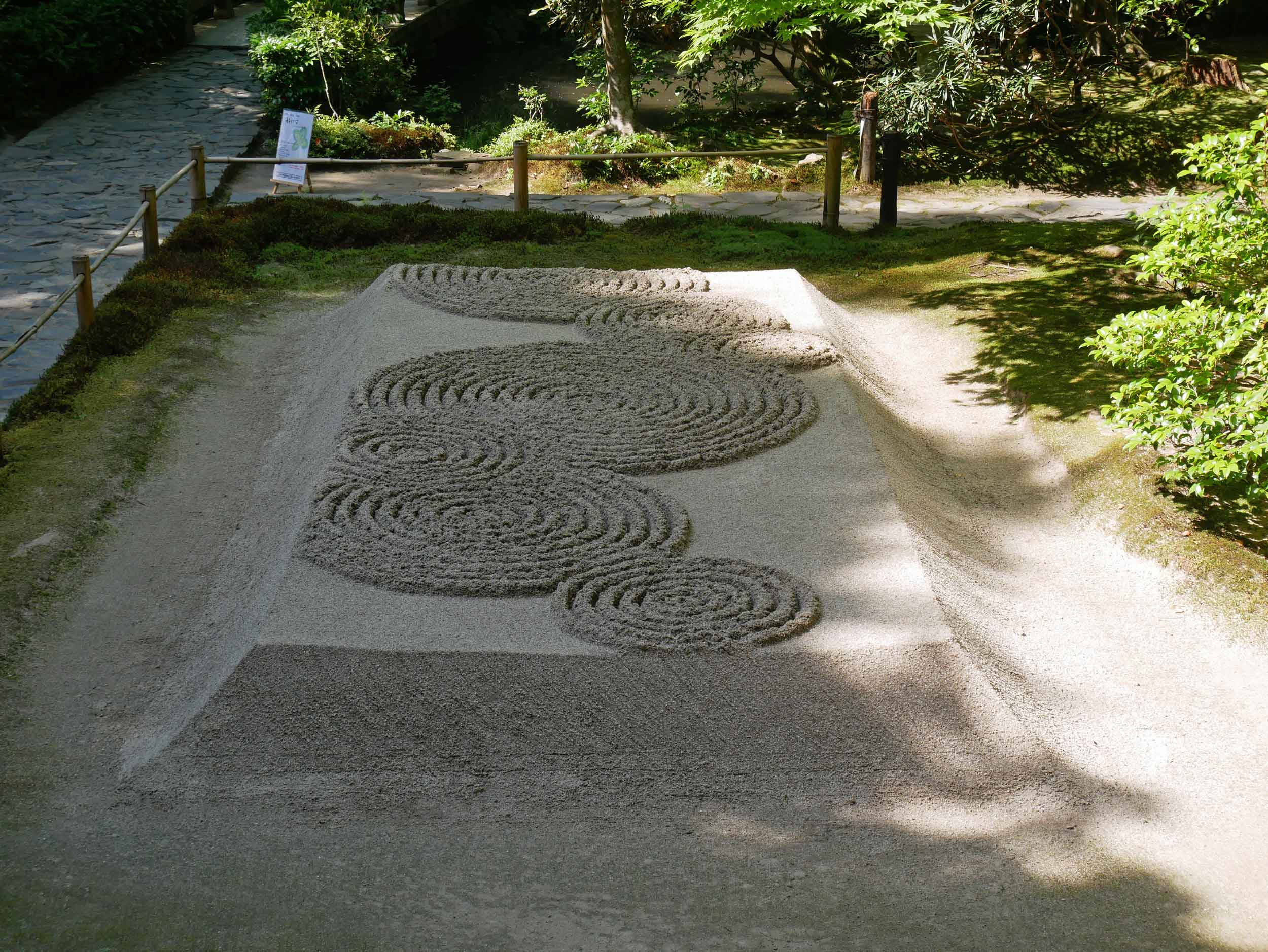
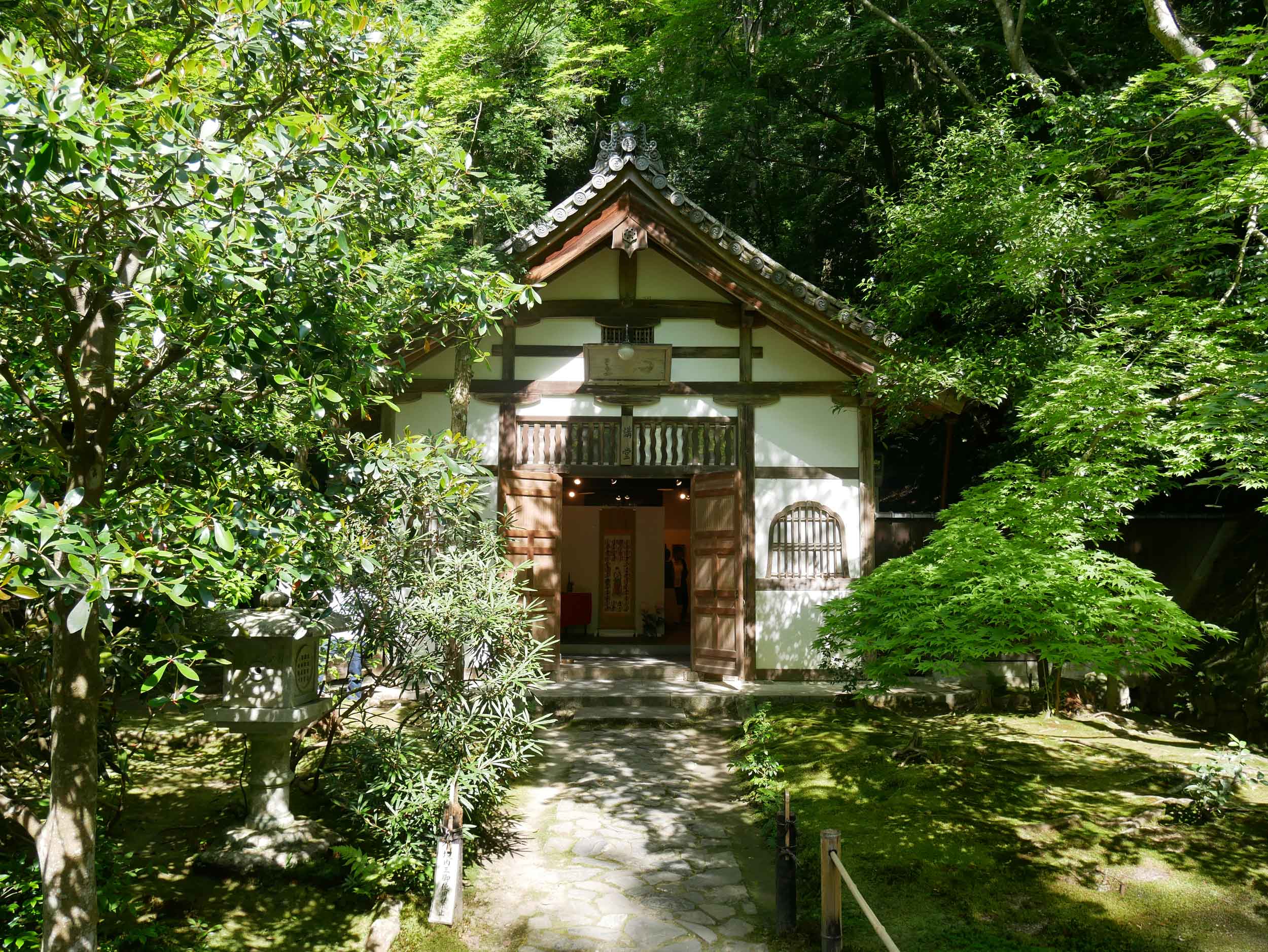
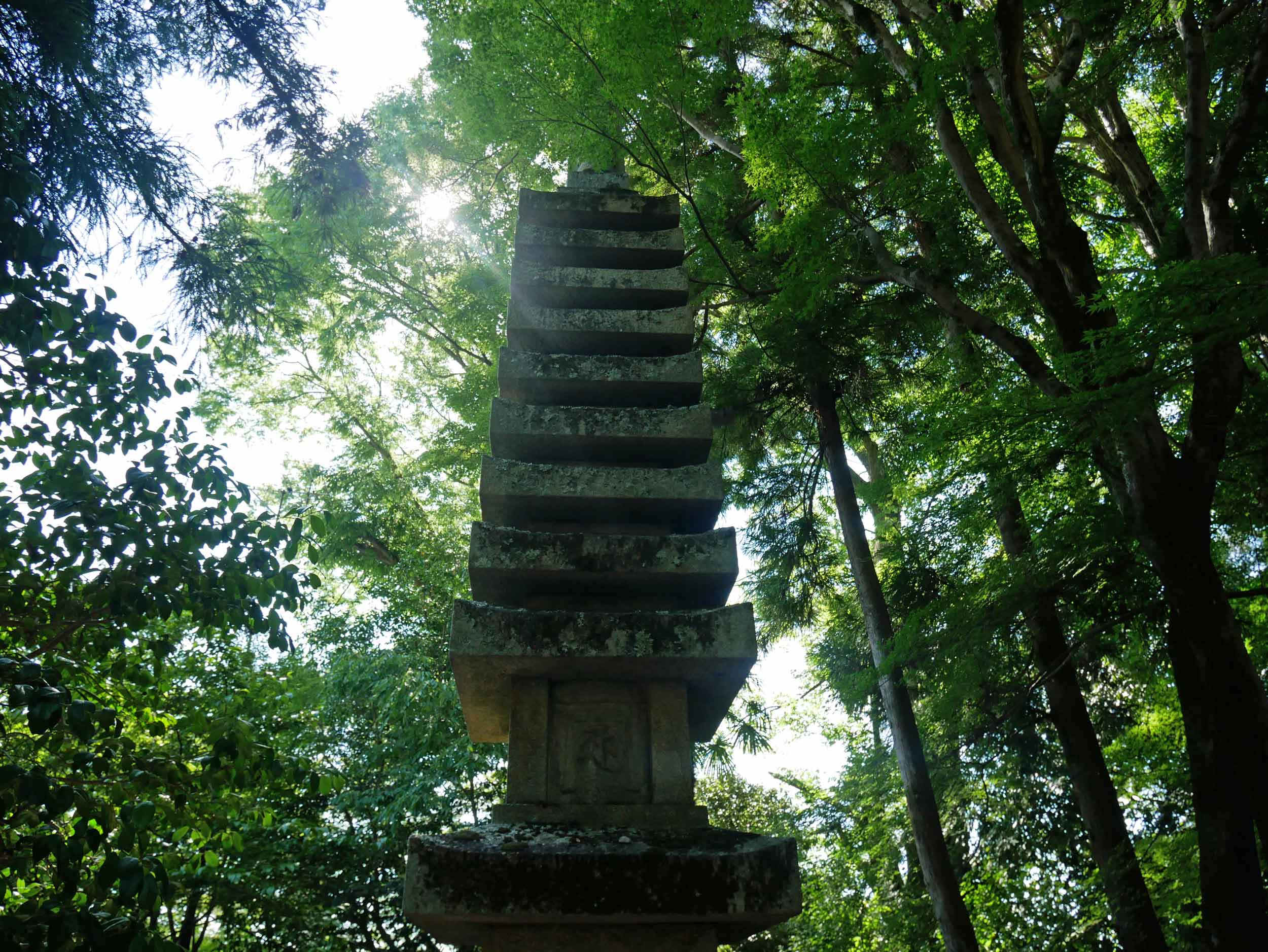
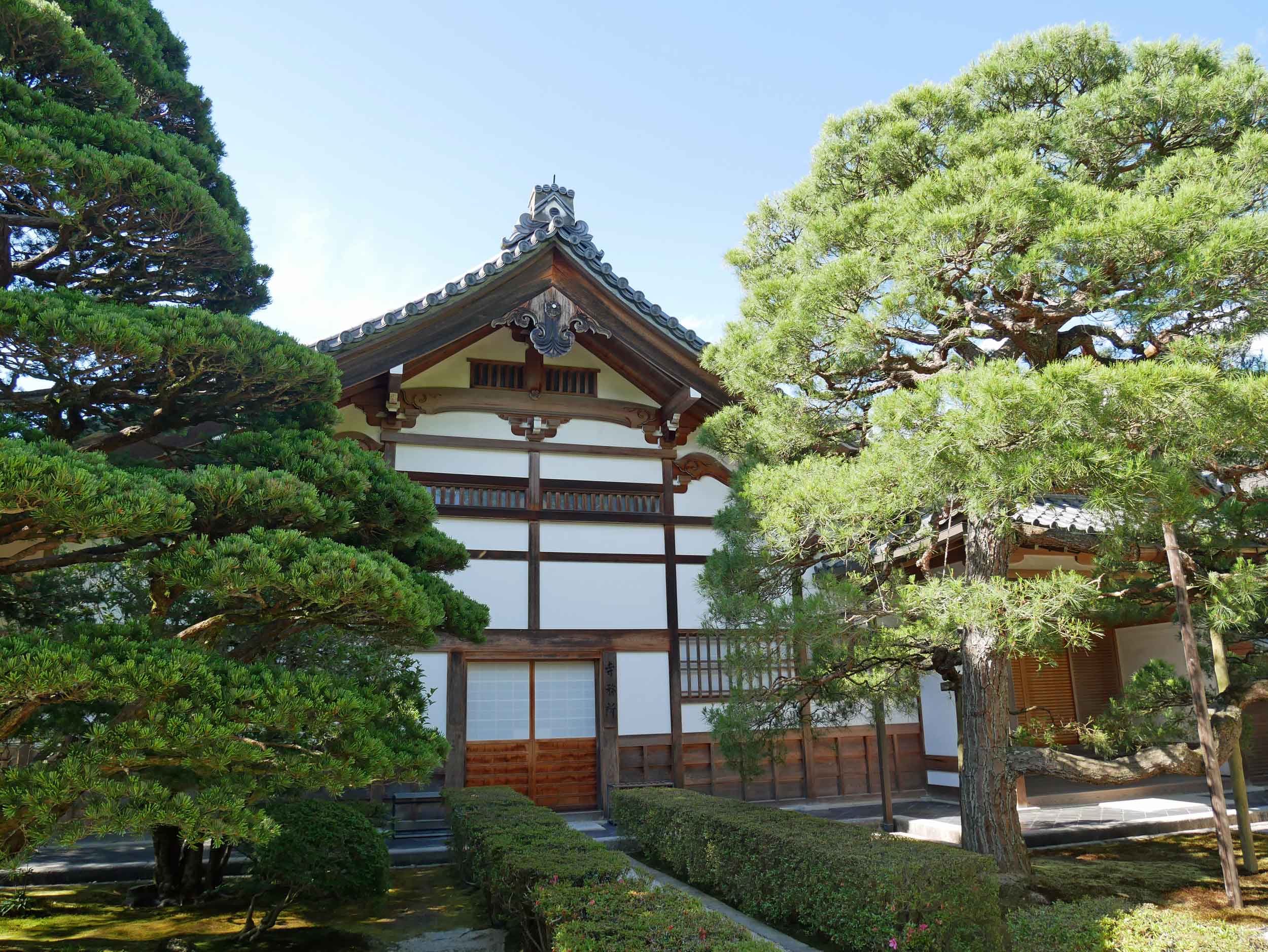


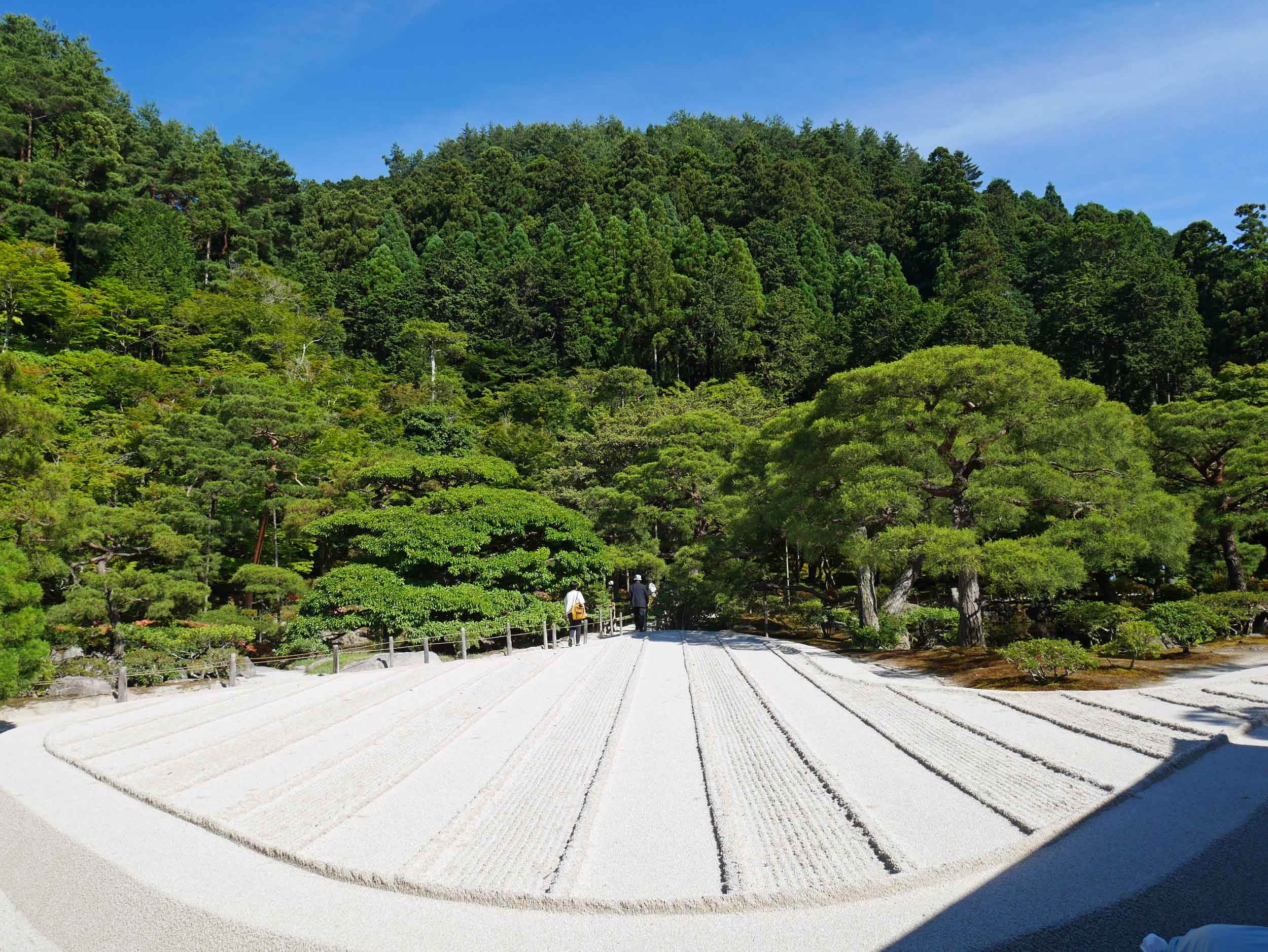
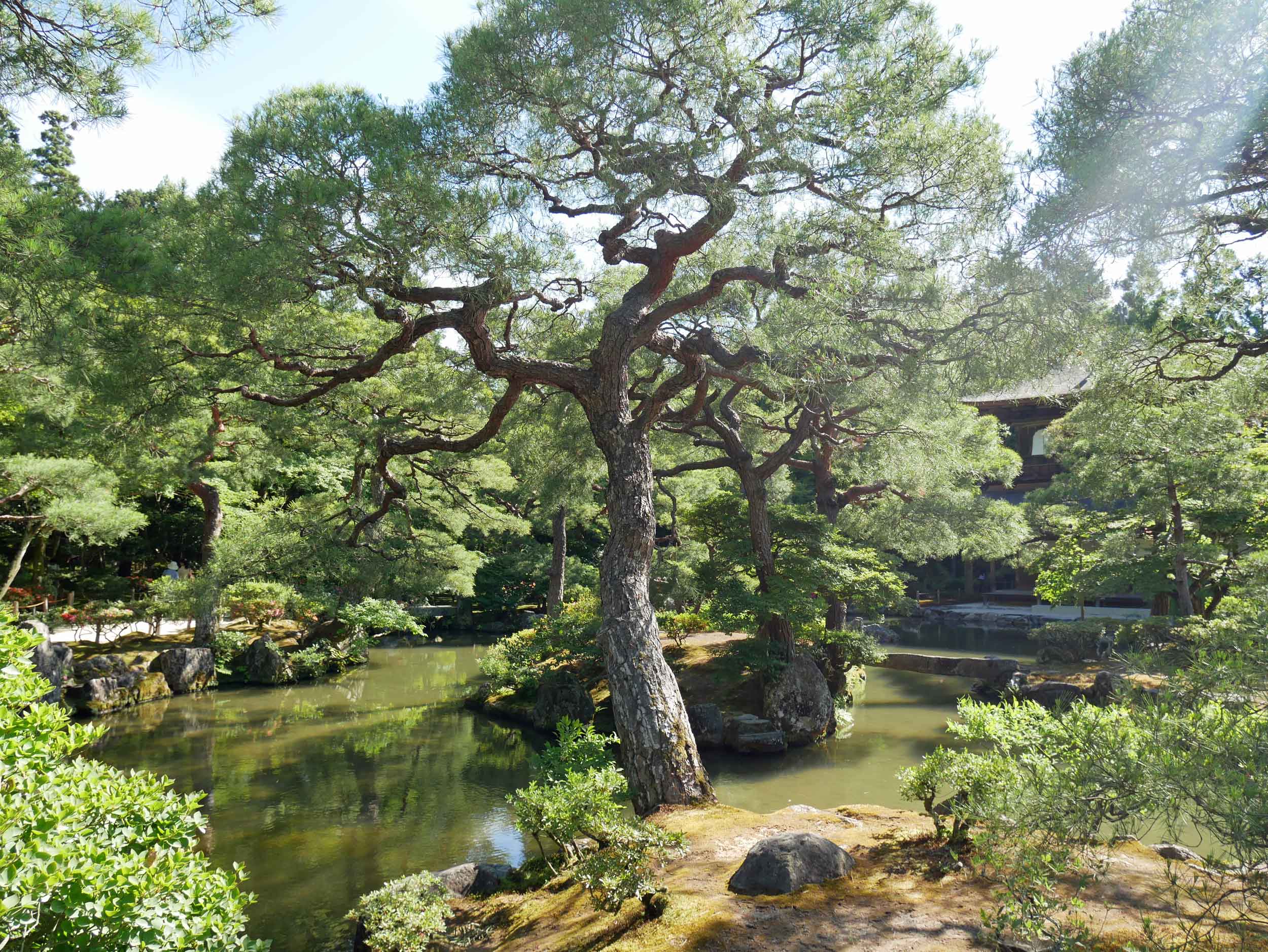
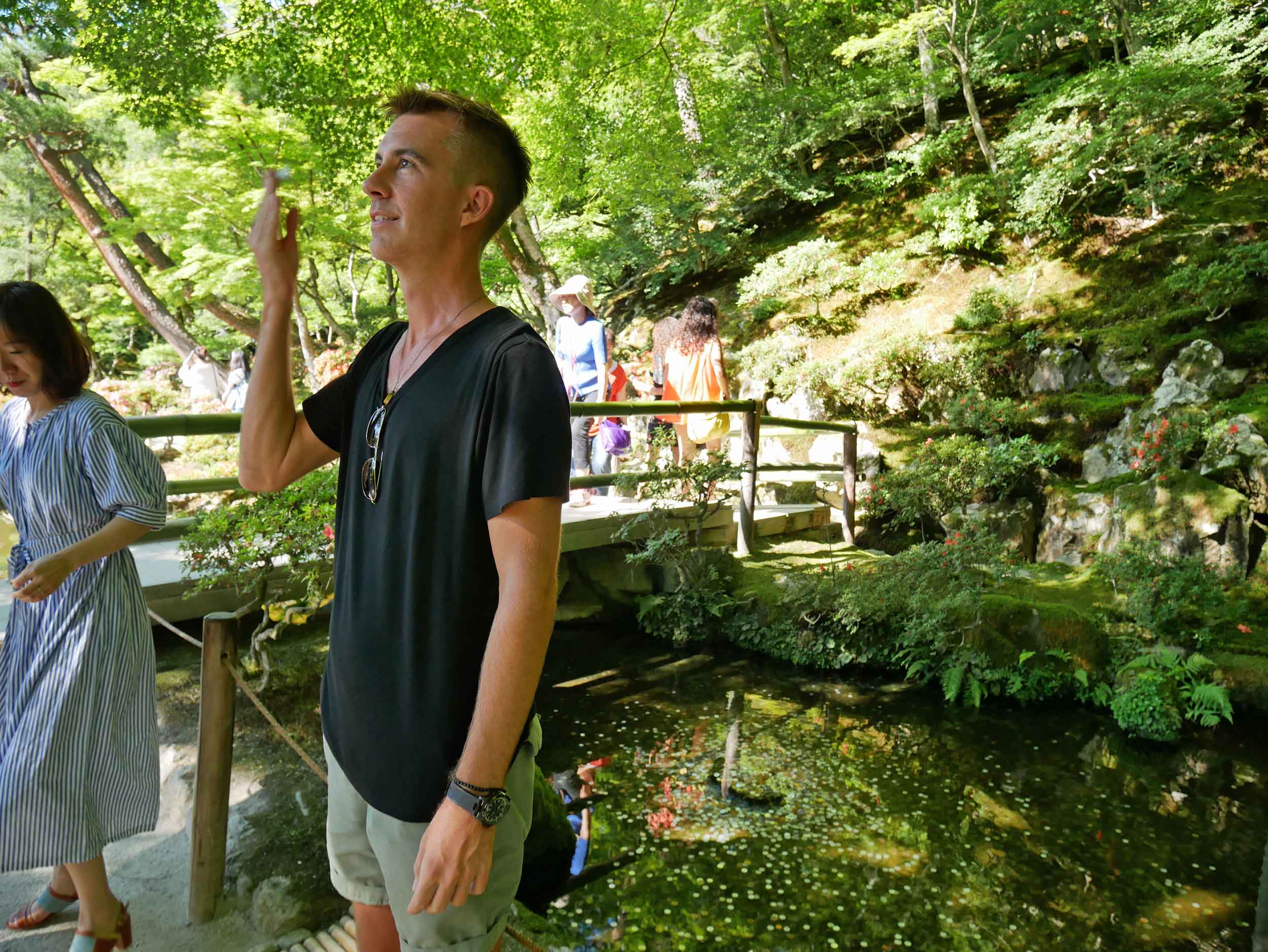
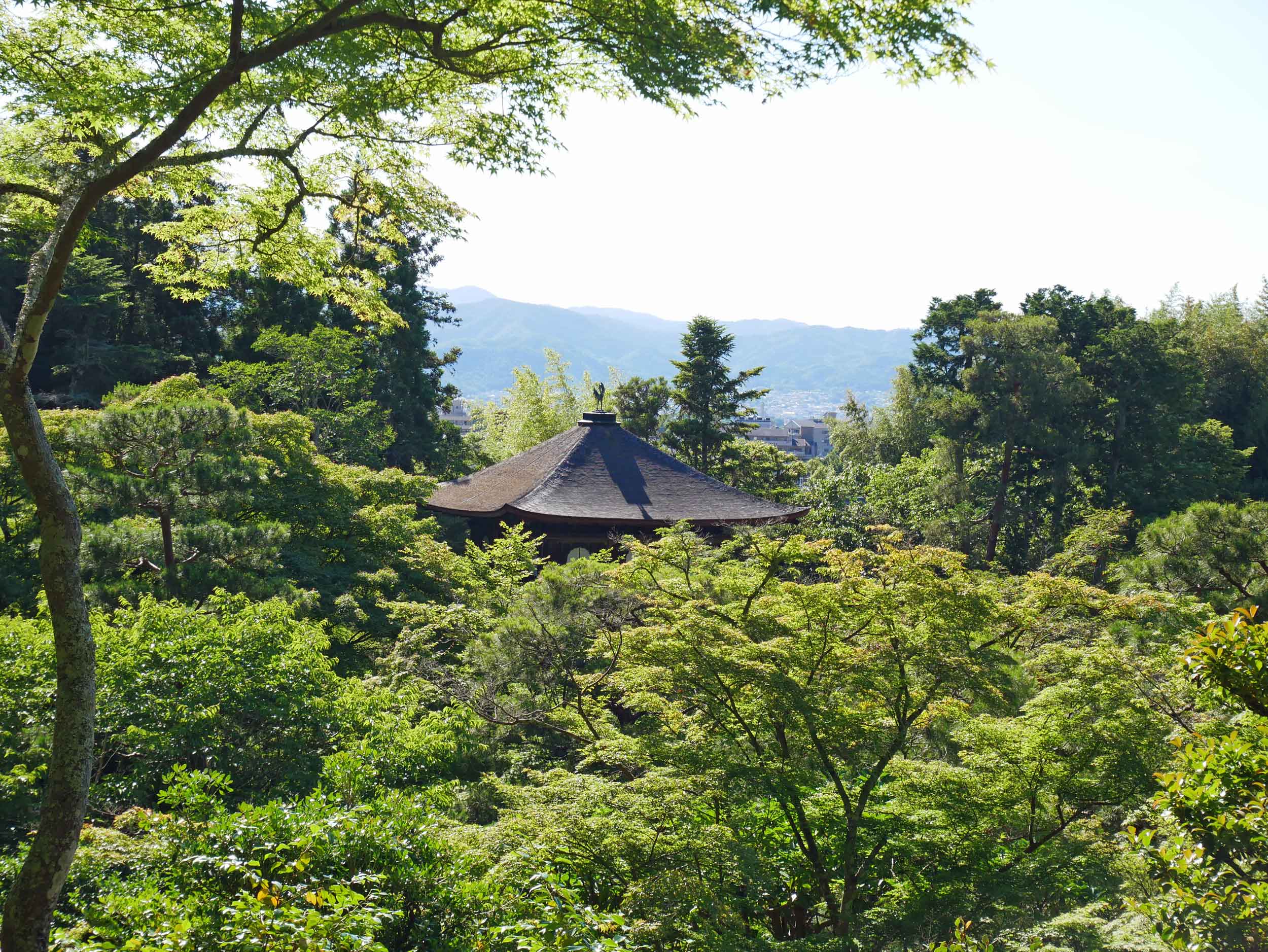
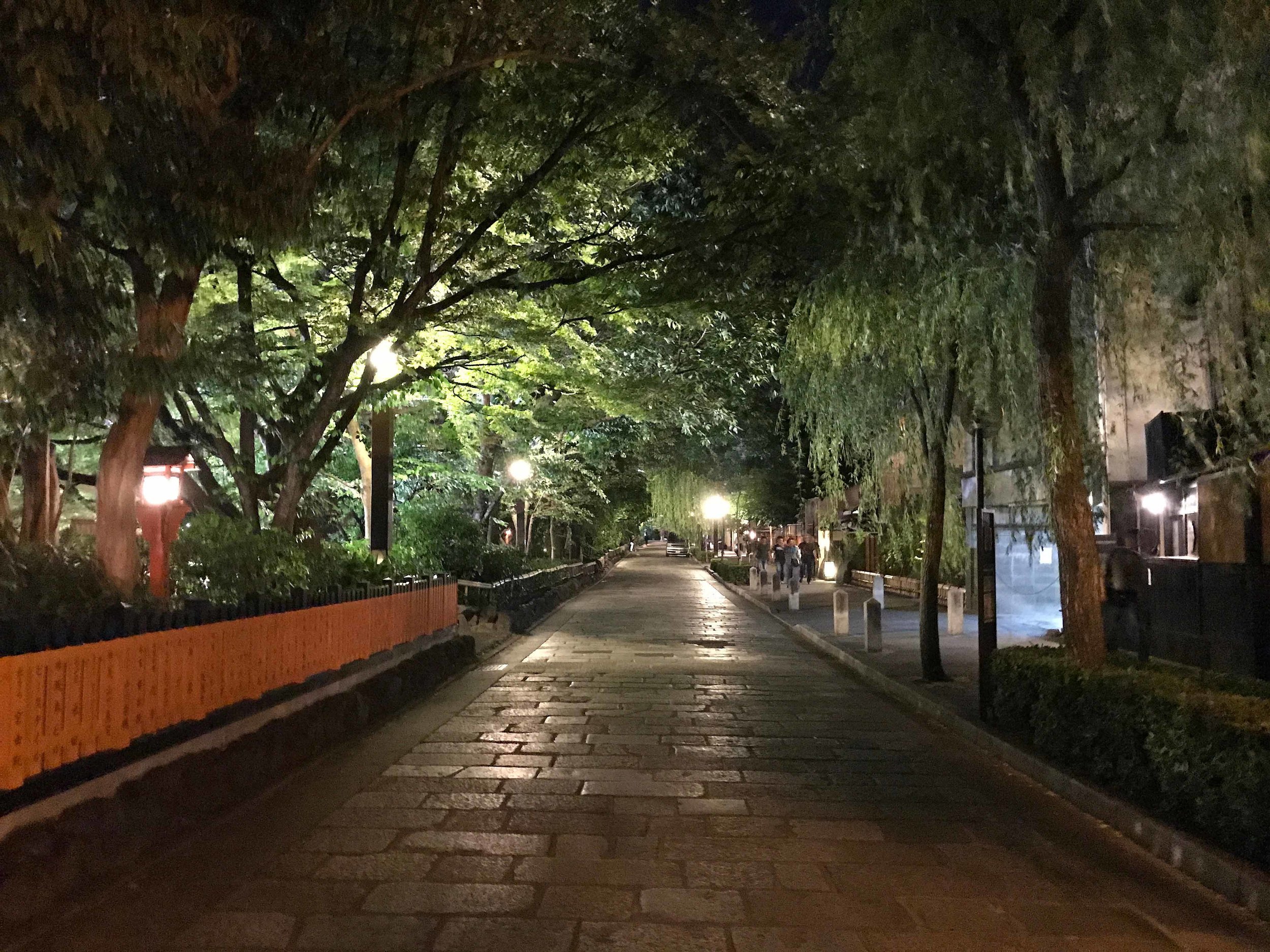
The next day we took an early local train to just outside of Kyoto to see the famed Arashiyama Bamboo Grove as well as in one of the best temples, in our opinion, of our entire visit—the tiny, moss garden temple of Gio-ji. For those who adore the color green as much as we do, this tiny, fertile wonderland sucked us in.
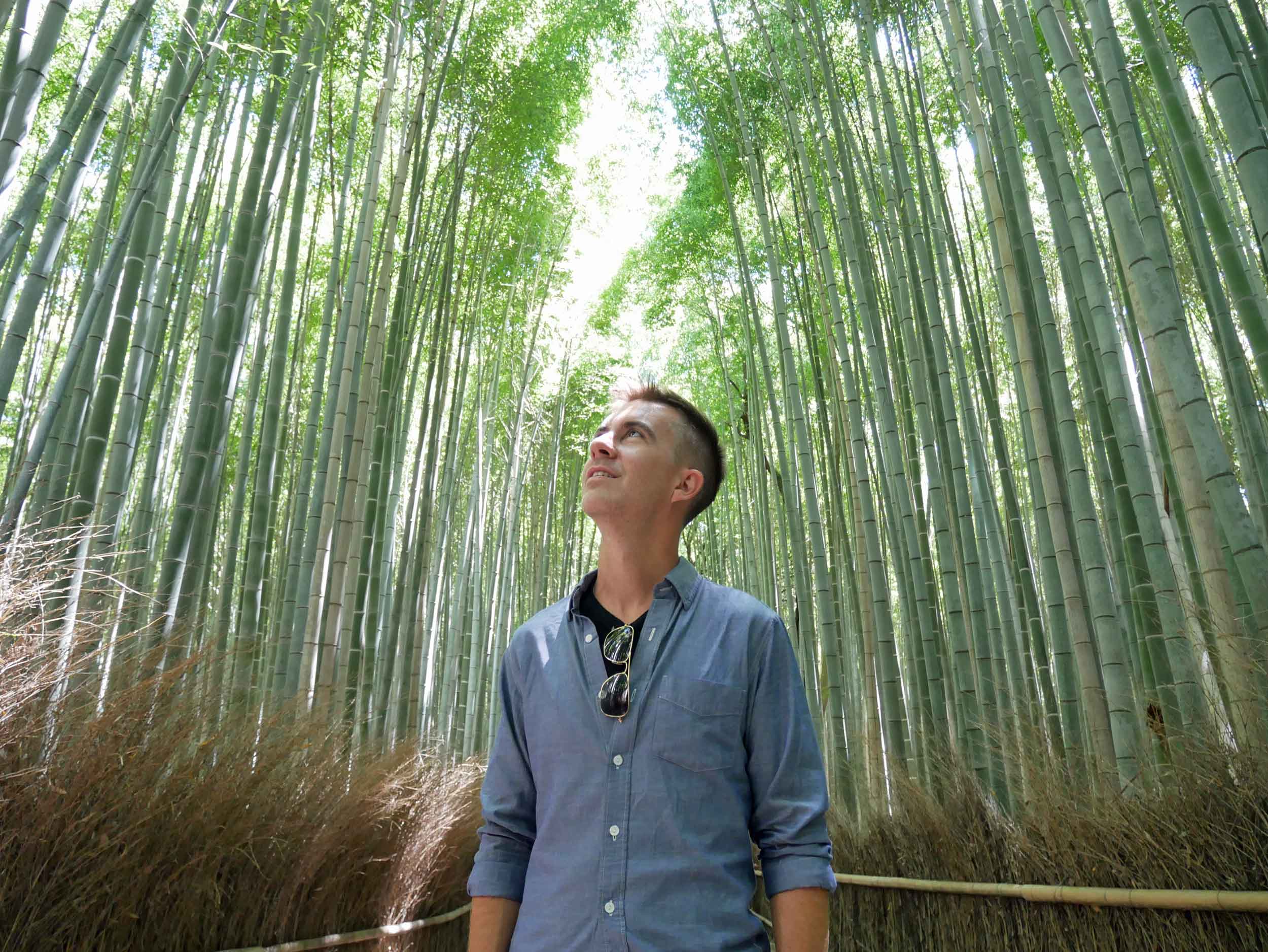

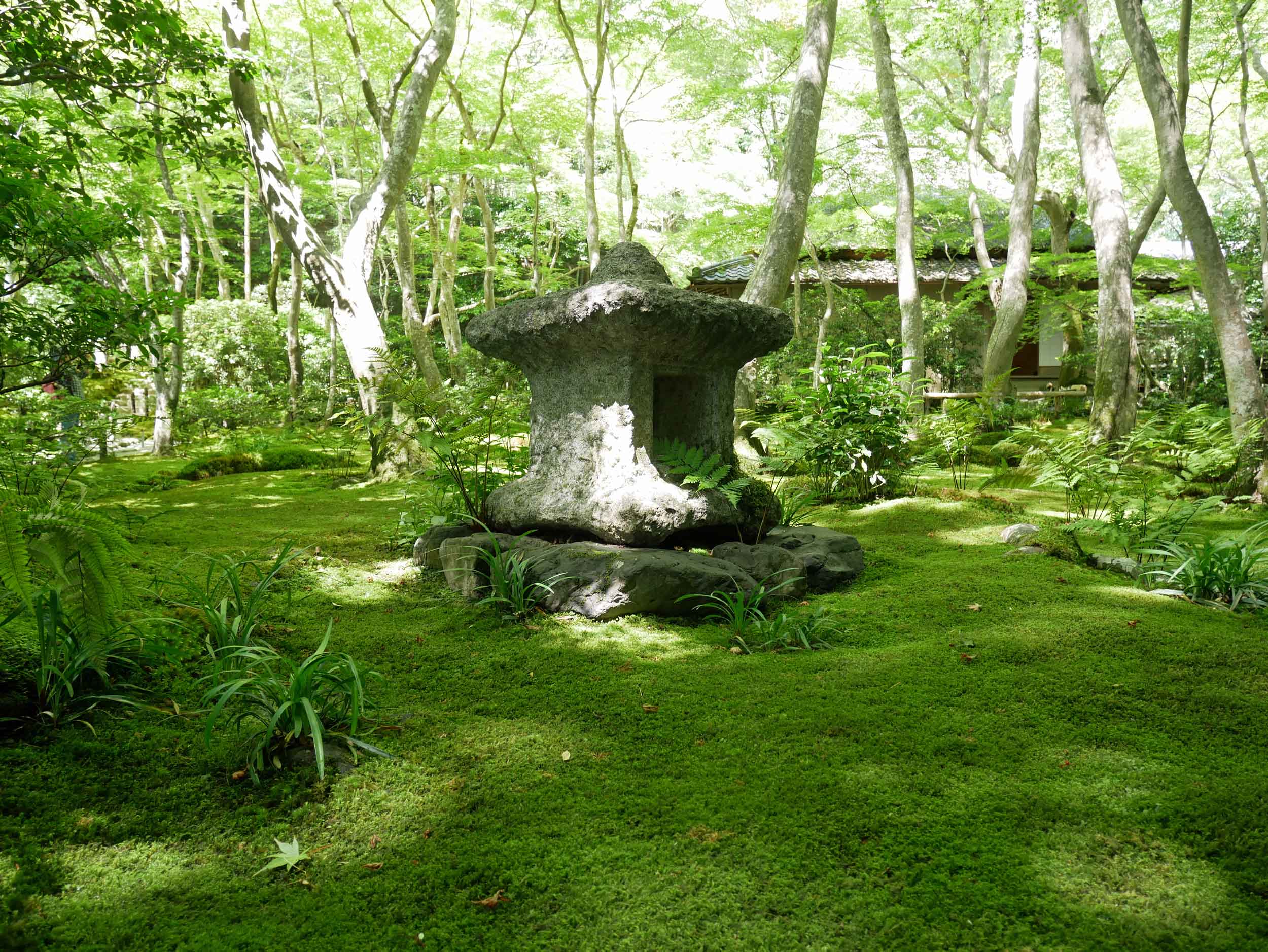

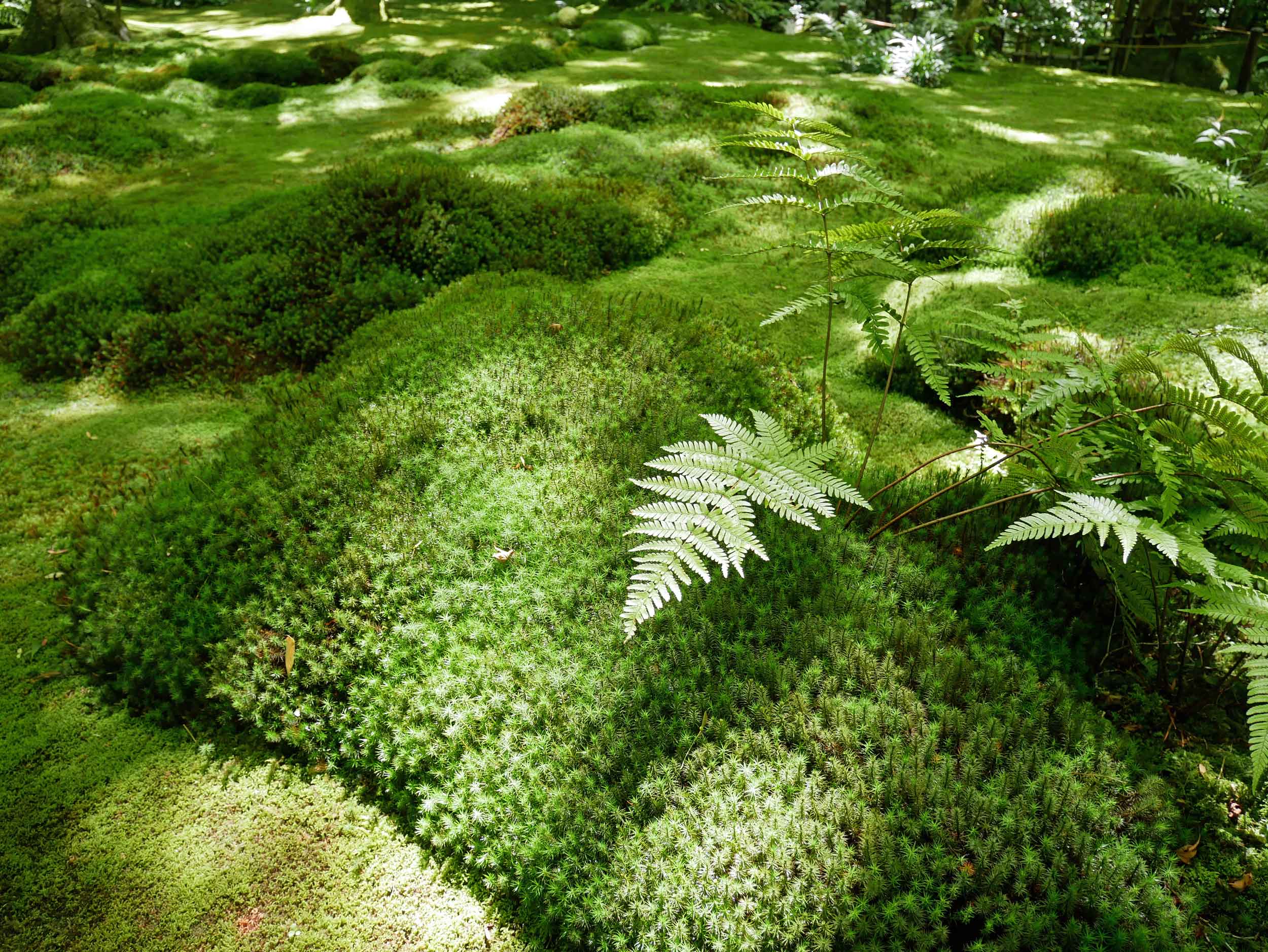
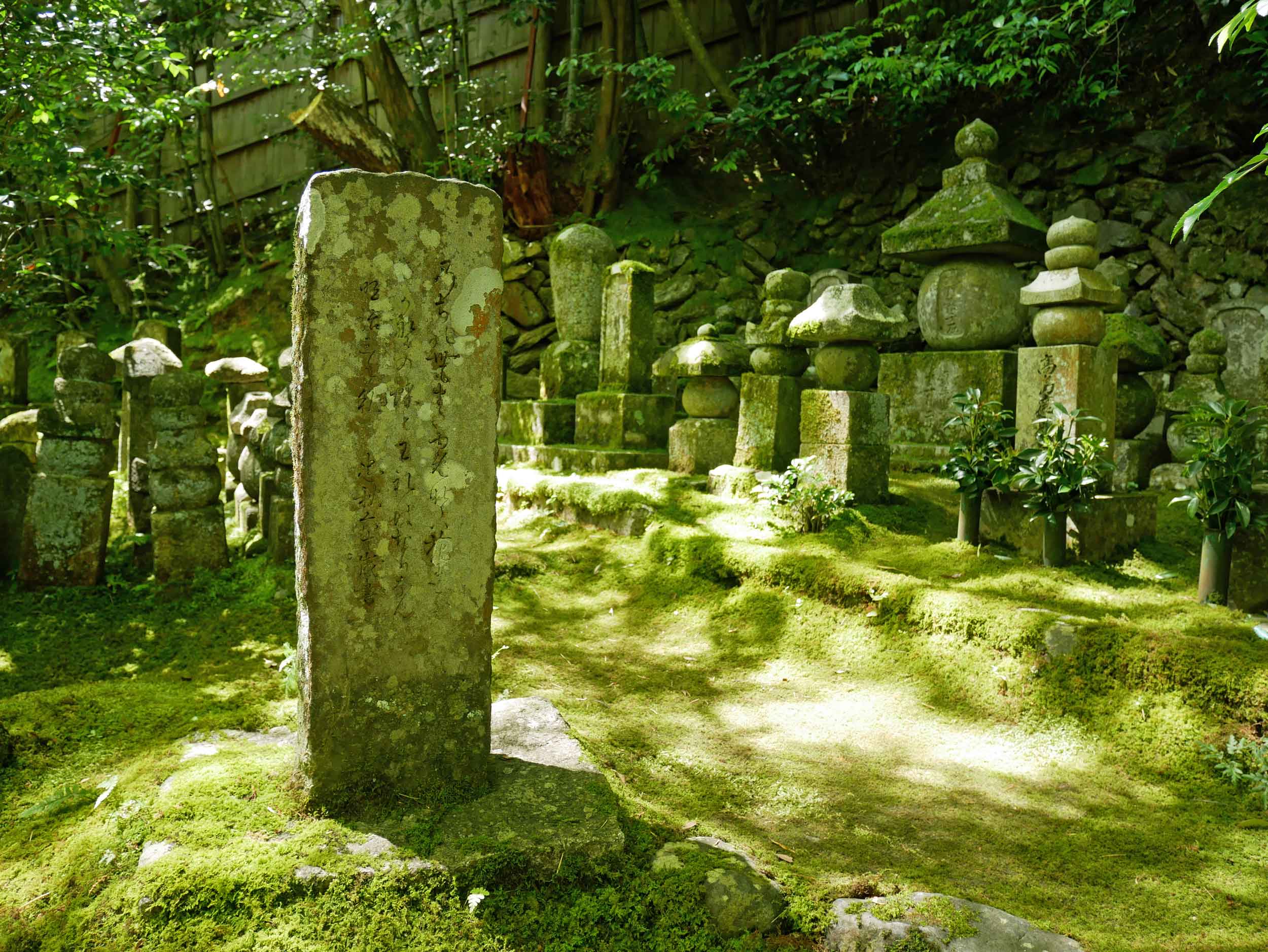
Kanazawa and the Japanese Alps
With that beautiful note to cap an eventful and thoughtful birthday weekend in Kyoto, we once again hopped on the bullet train toward the striking university town of Kanazawa. Renowned for its sumptuous Kanazawa Castle gardens, arriving late in the day, we immediately headed to the park for a short visit. The impressive mown lawns surrounding the old castle were the perfect place to people watch—we were entertained for quite a while watching groups of friends dressed in traditional costume take photos of one another—, and the trails of lush vegetation and unique forest that also make up the gardens were ideal for stretching our legs after the journey.
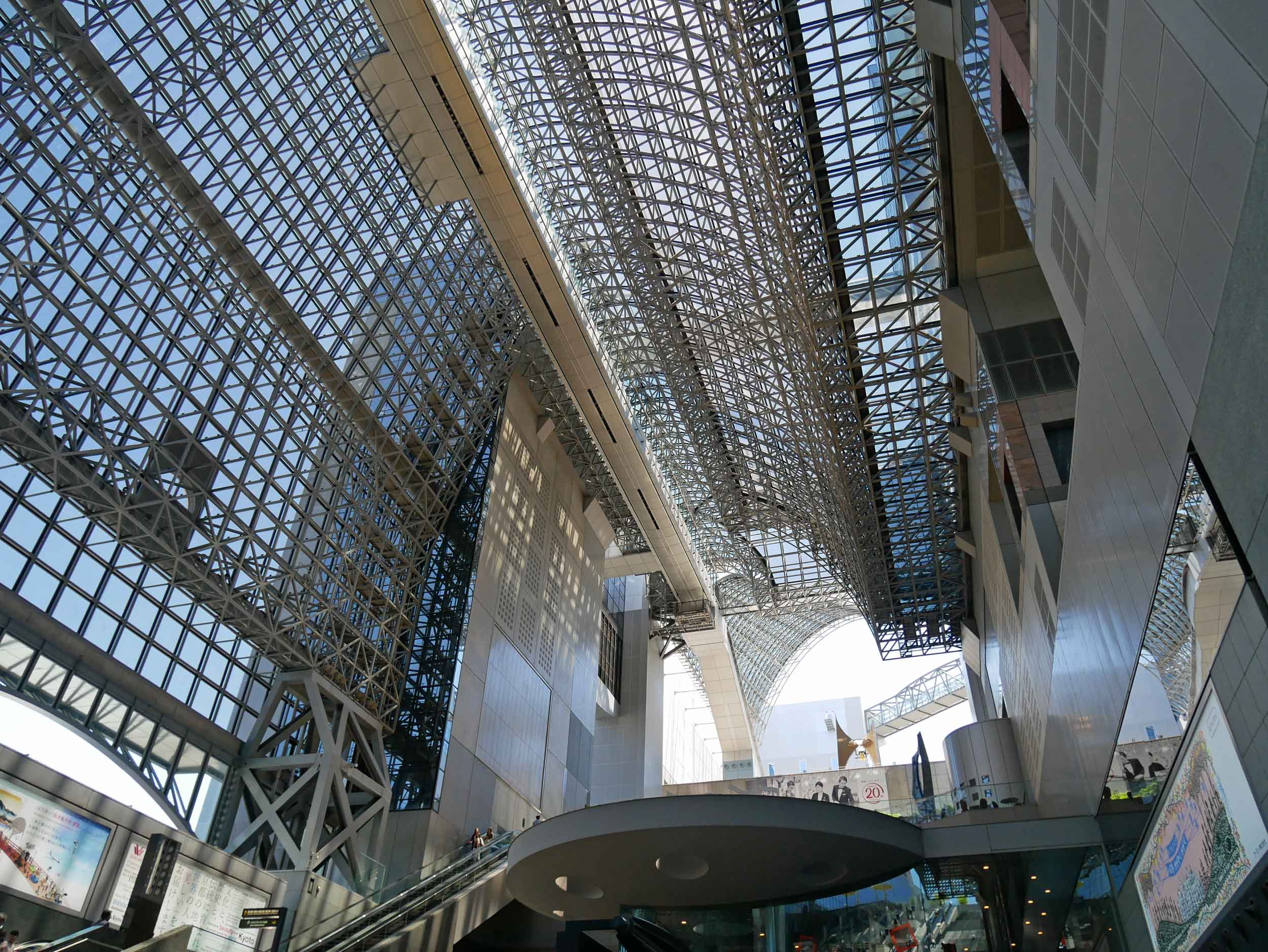
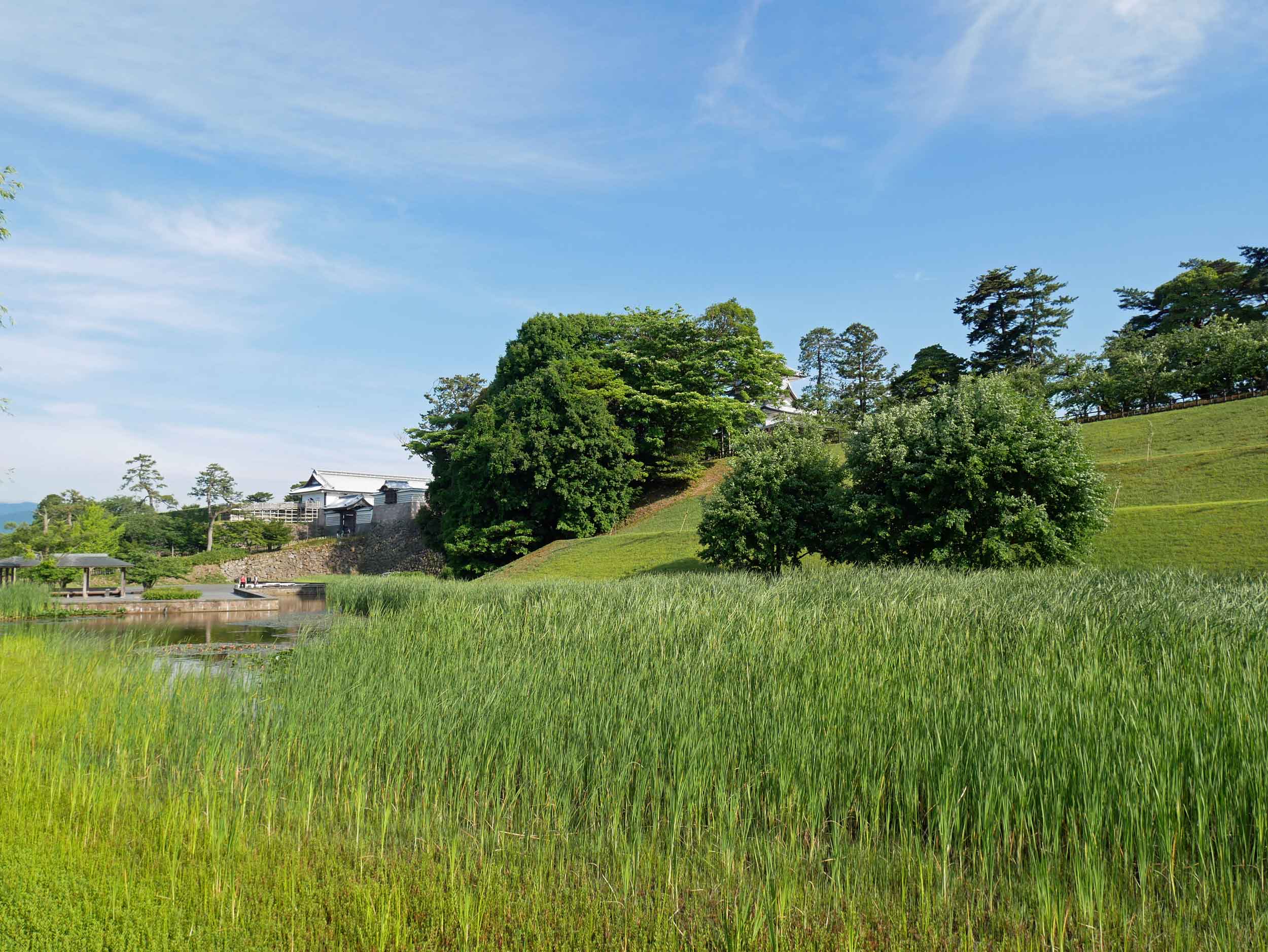

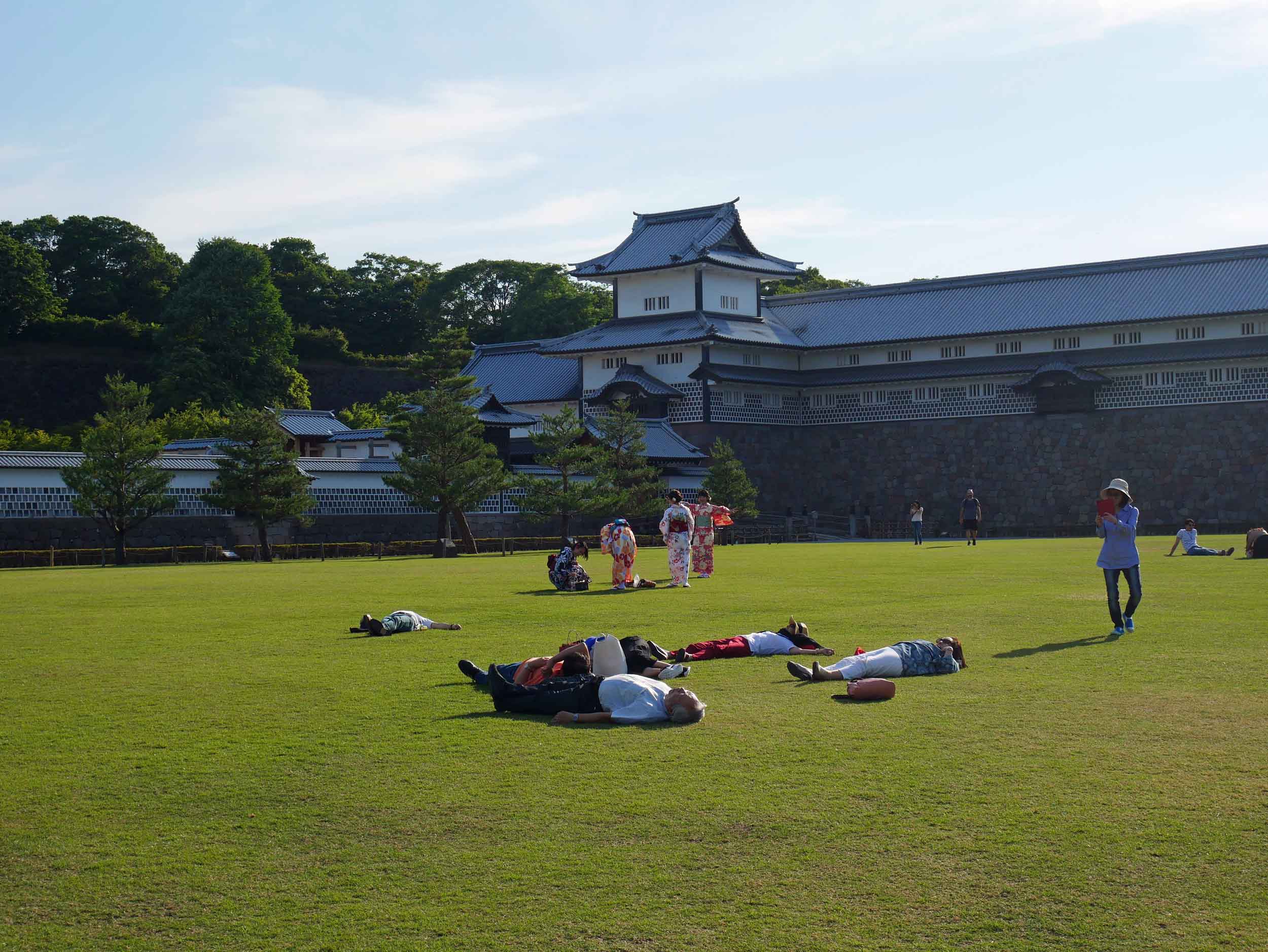
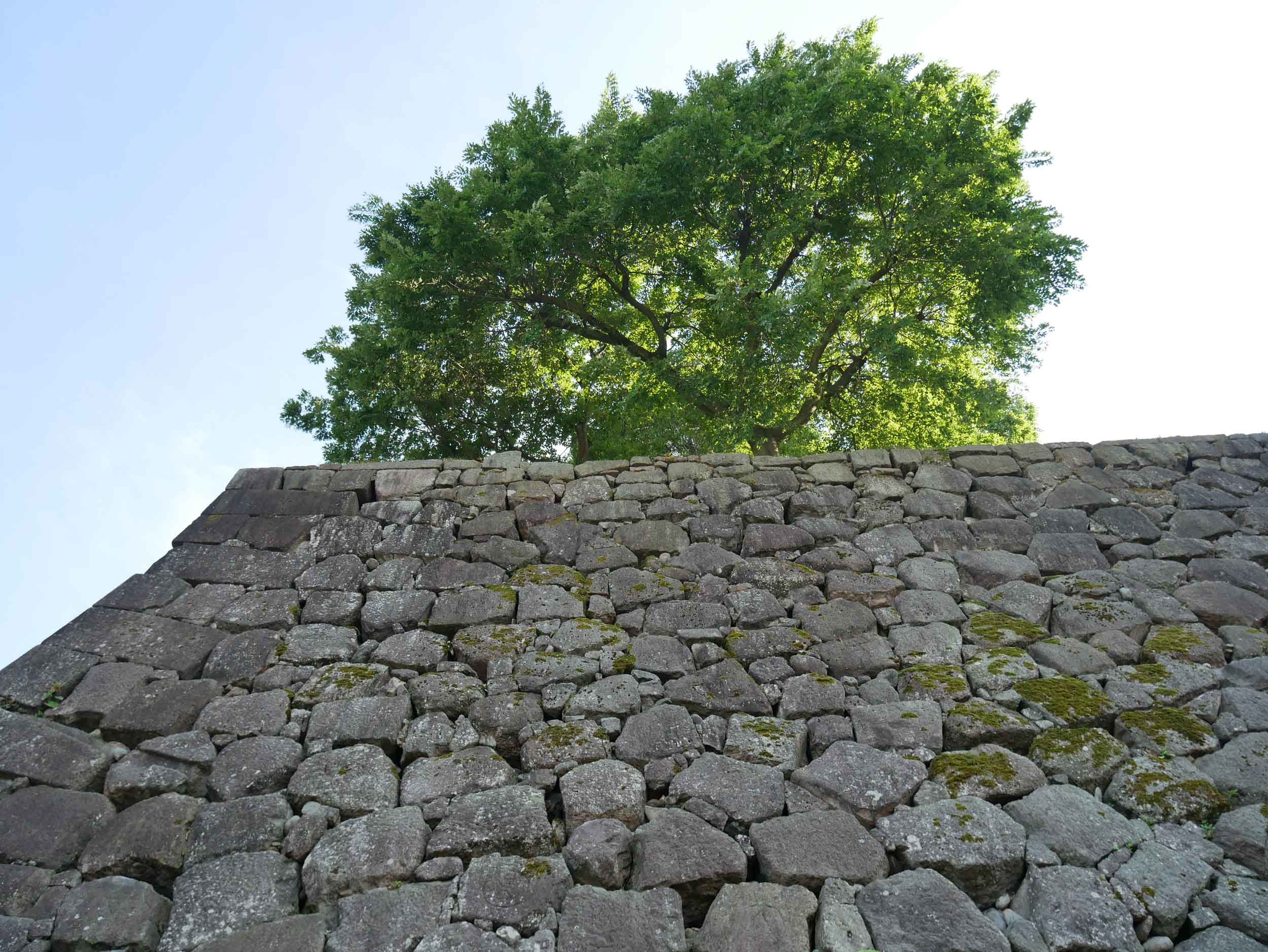
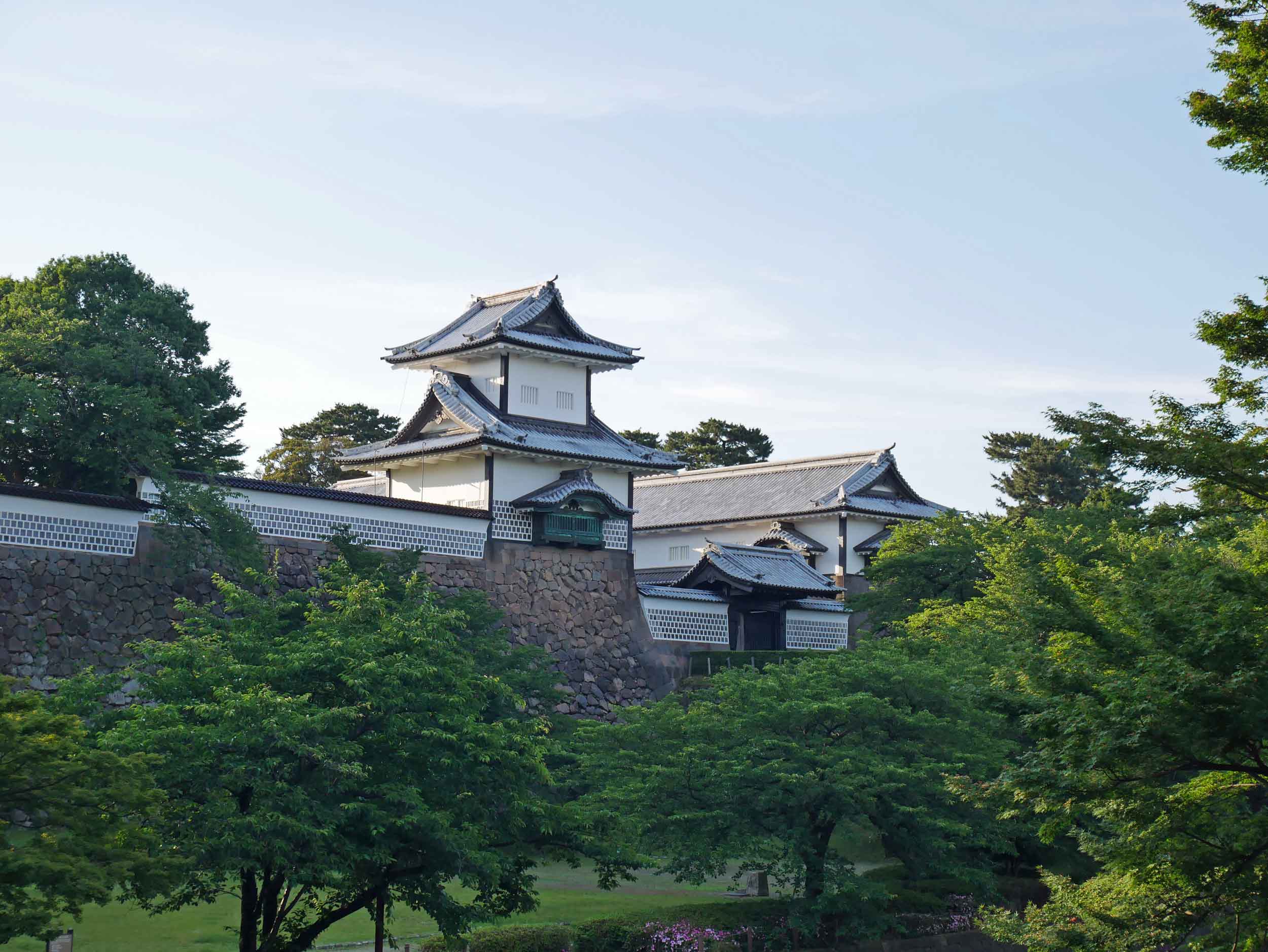

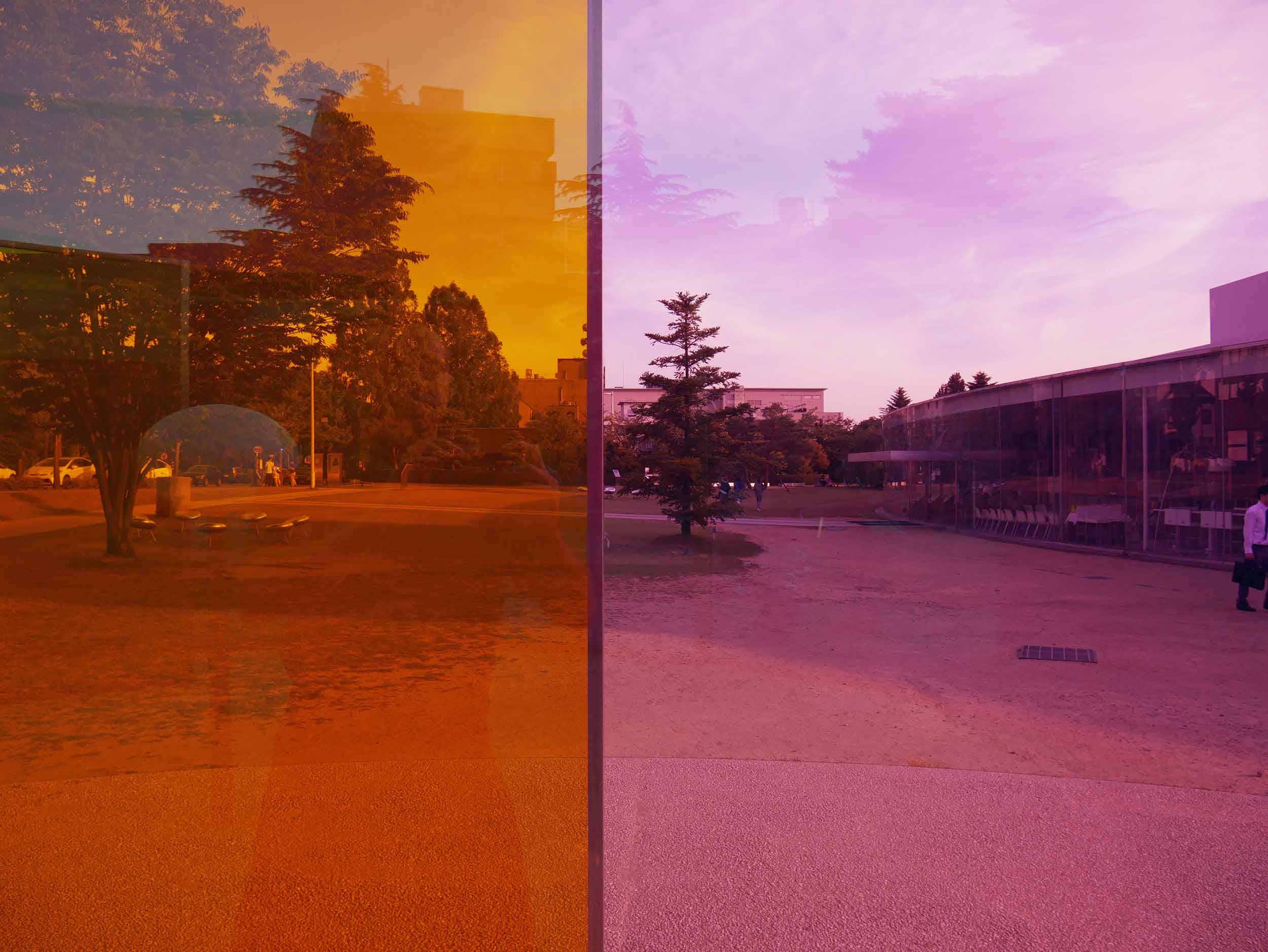
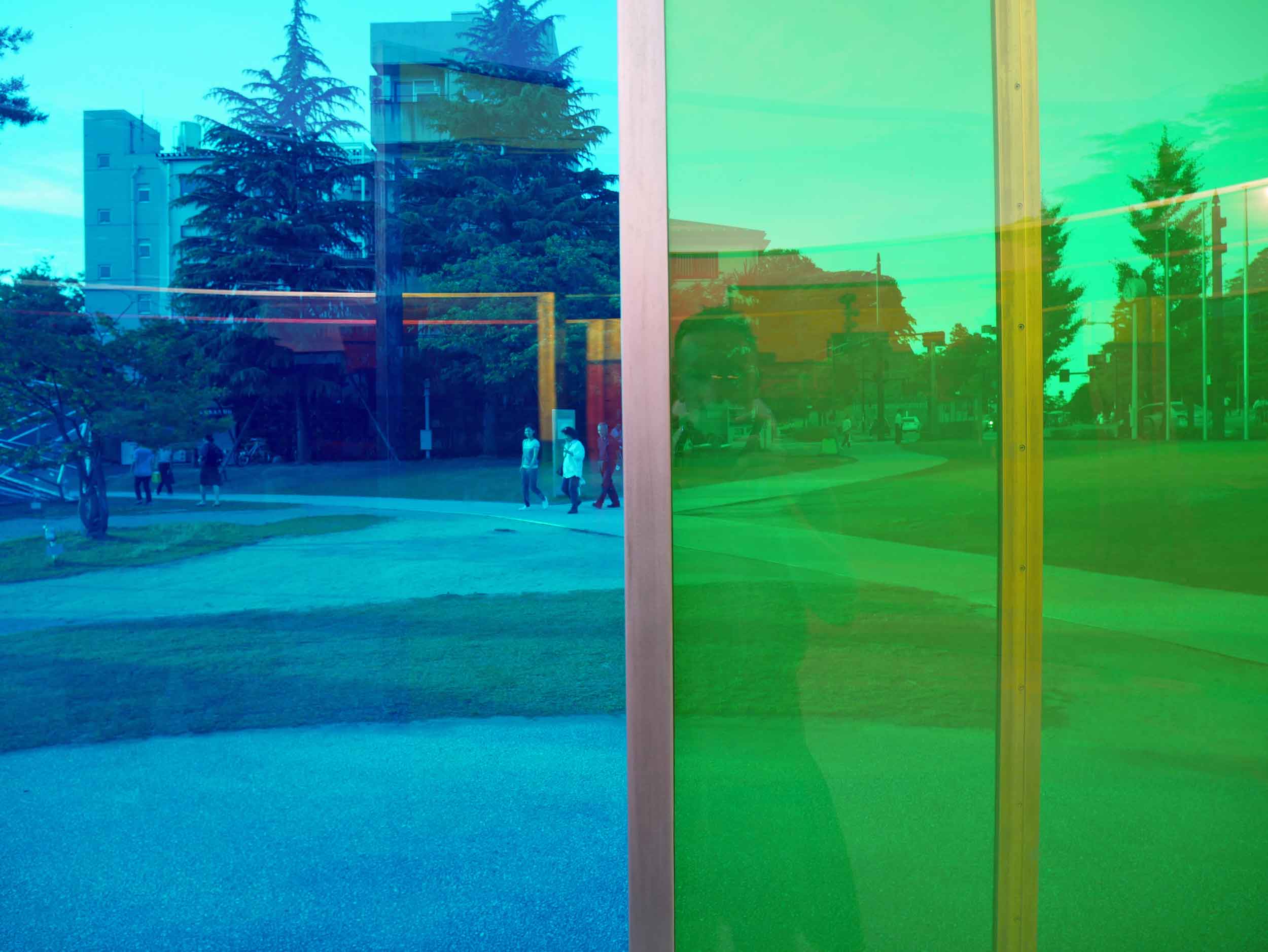
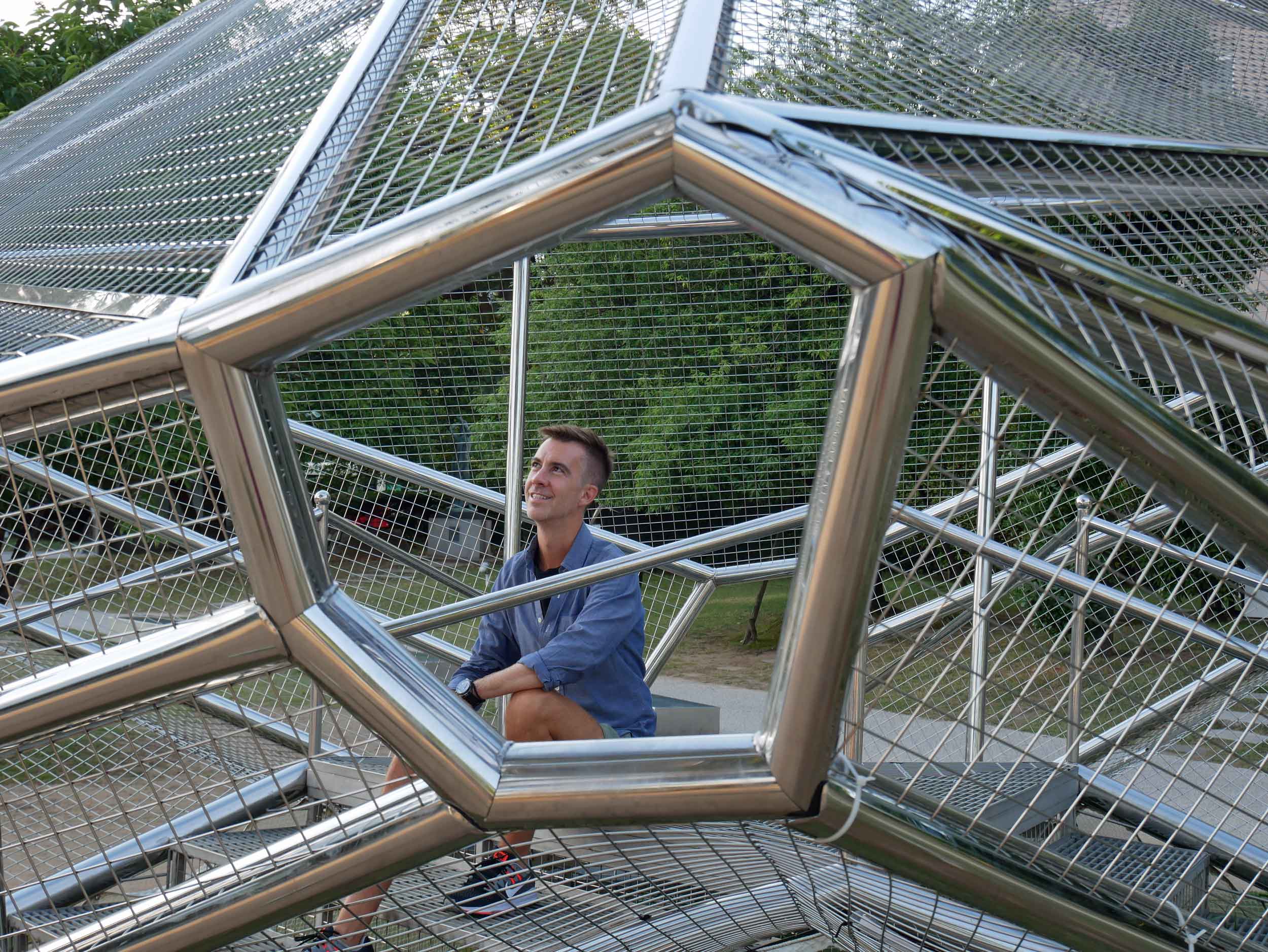
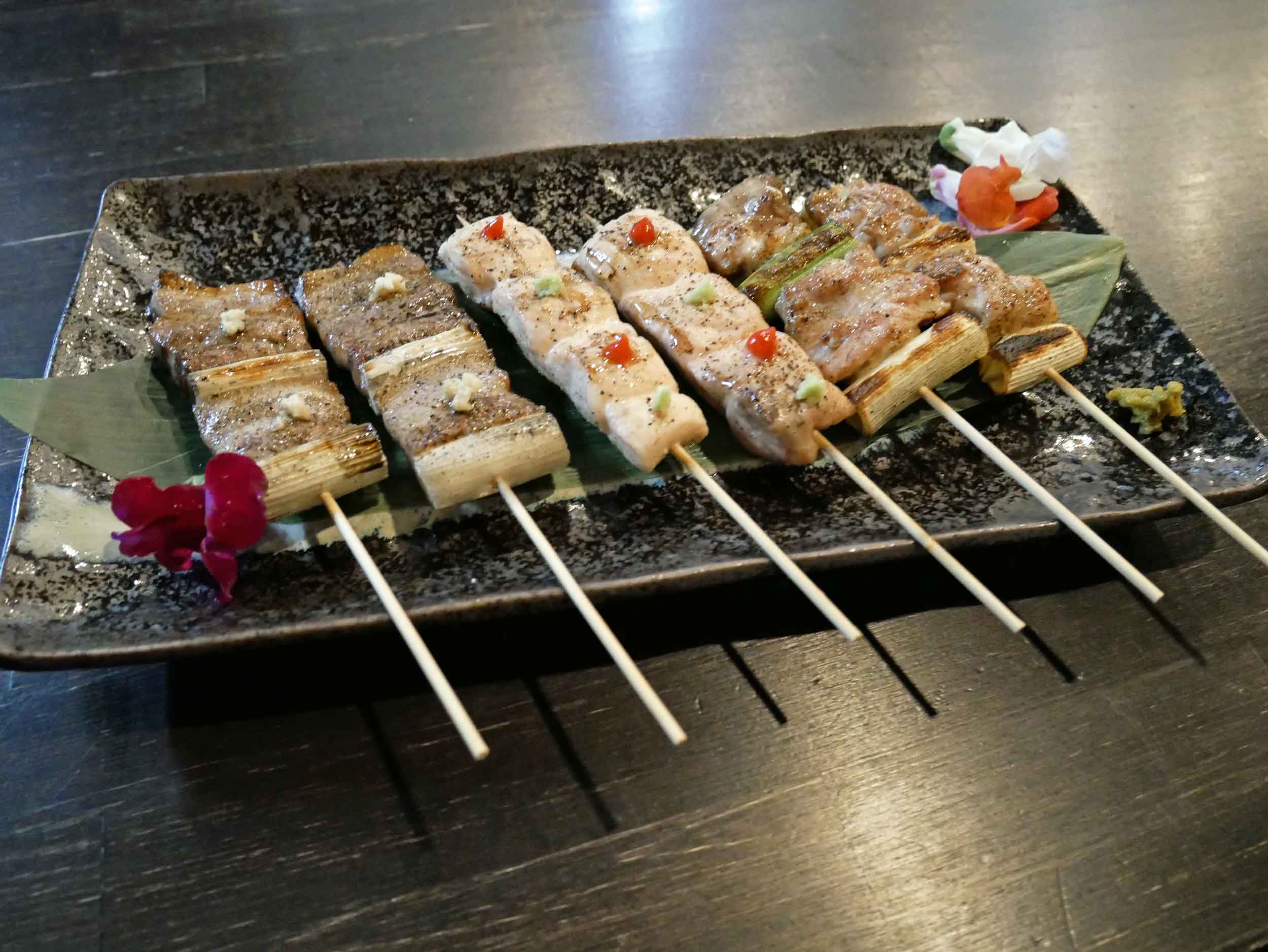

The next day, we took a beautiful, scenic train journey through the Japanese Alps to our next stop, Takayama, a handsome mountain town that has quite the street-eats scene, which we dove right into upon arrival (with the exception of horse meat… no, thanks). Continue to eat we did, and for any gluten free folks out there, we rejoiced to learn that the top-notch local spot, Ebisu-Honten restaurant, served some seriously delicious handmade teuchi-soba noodles—made entirely from pure buckwheat—and served in a gorgeous broth, topped with boiled mushrooms and grated mountain potato. A post-lunch stroll through the old part of town brought us to Shiroyama park, which offered stunning views of the valley below and that most perfect filtered forest light.
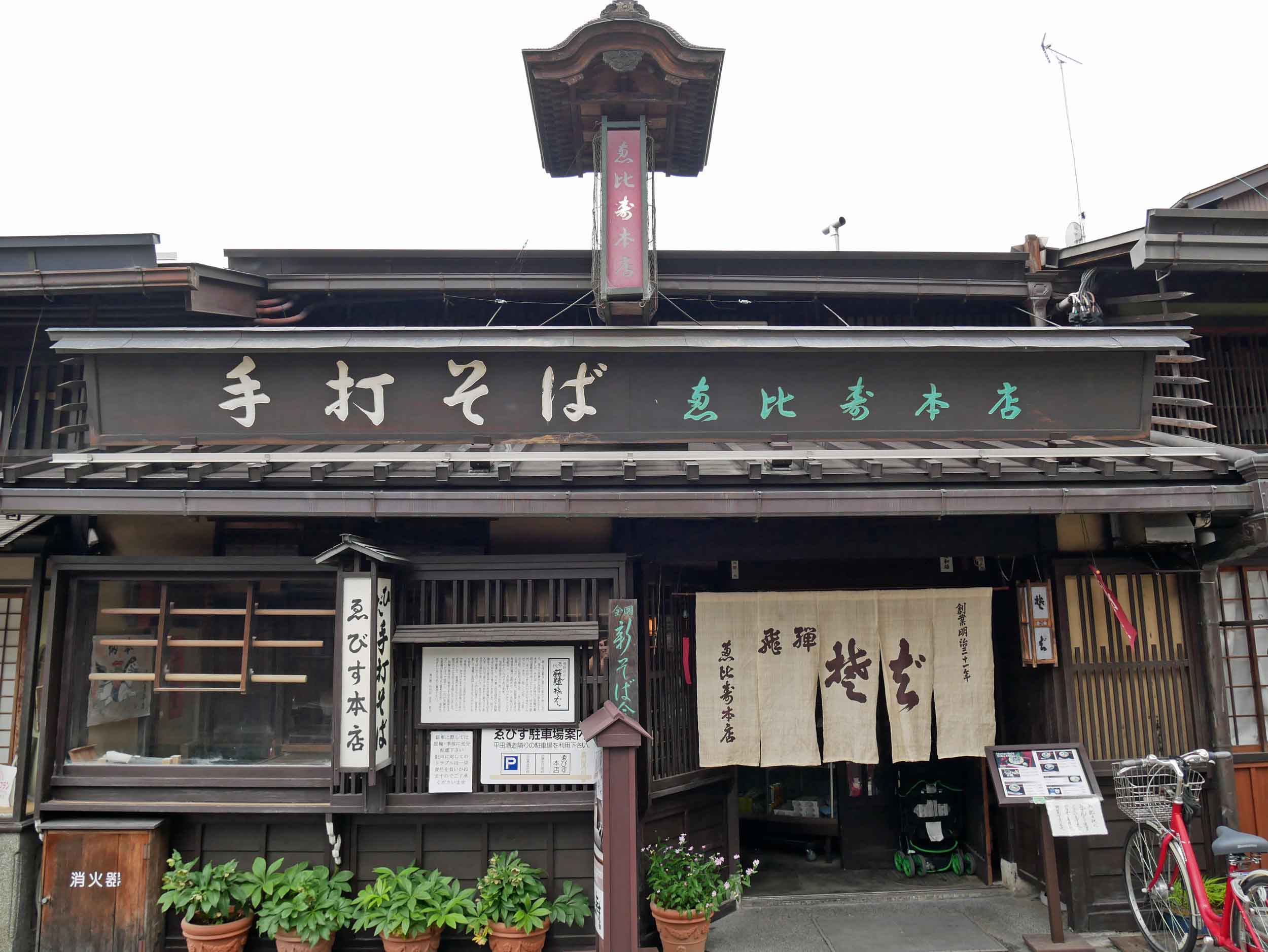
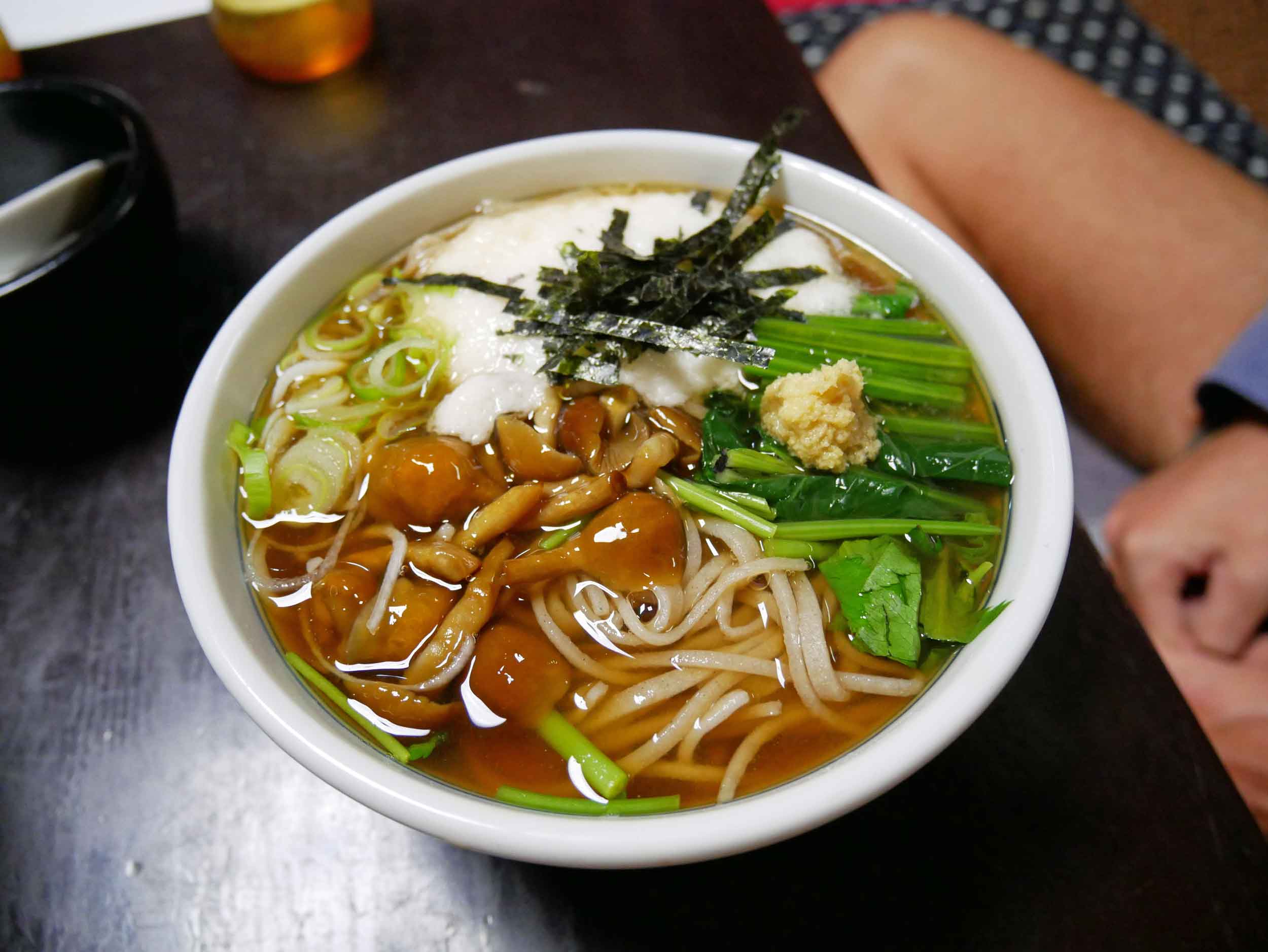
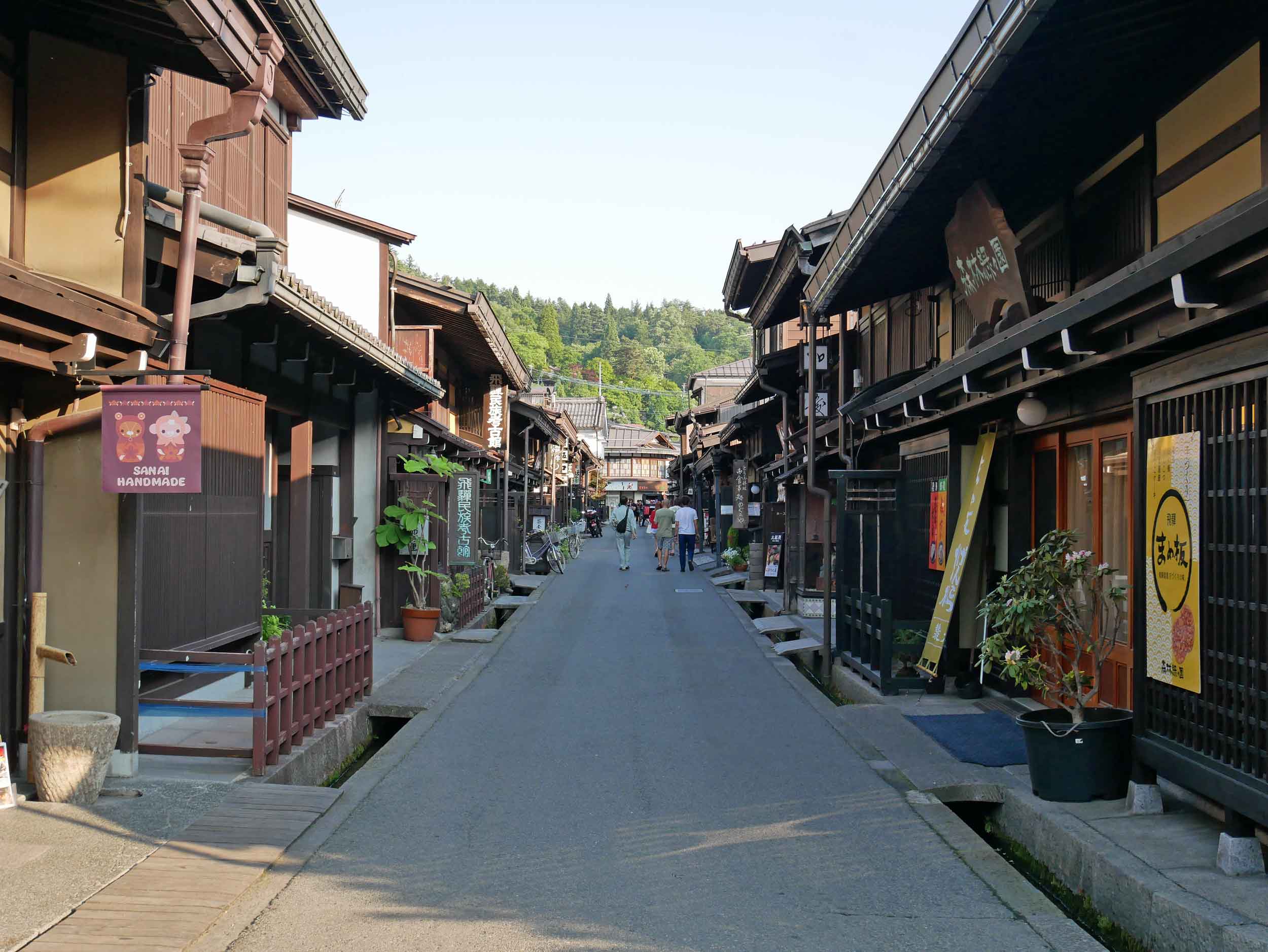
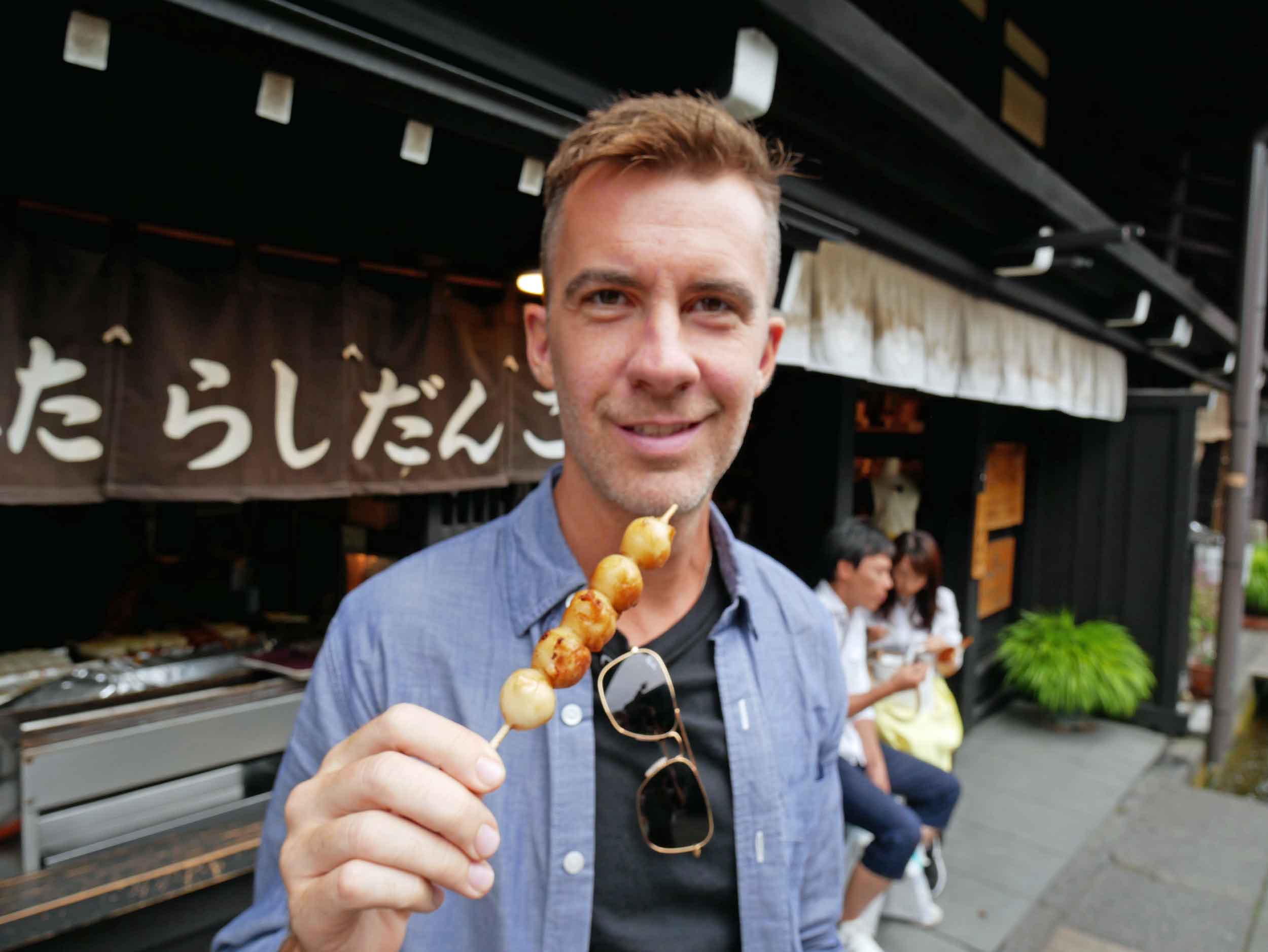
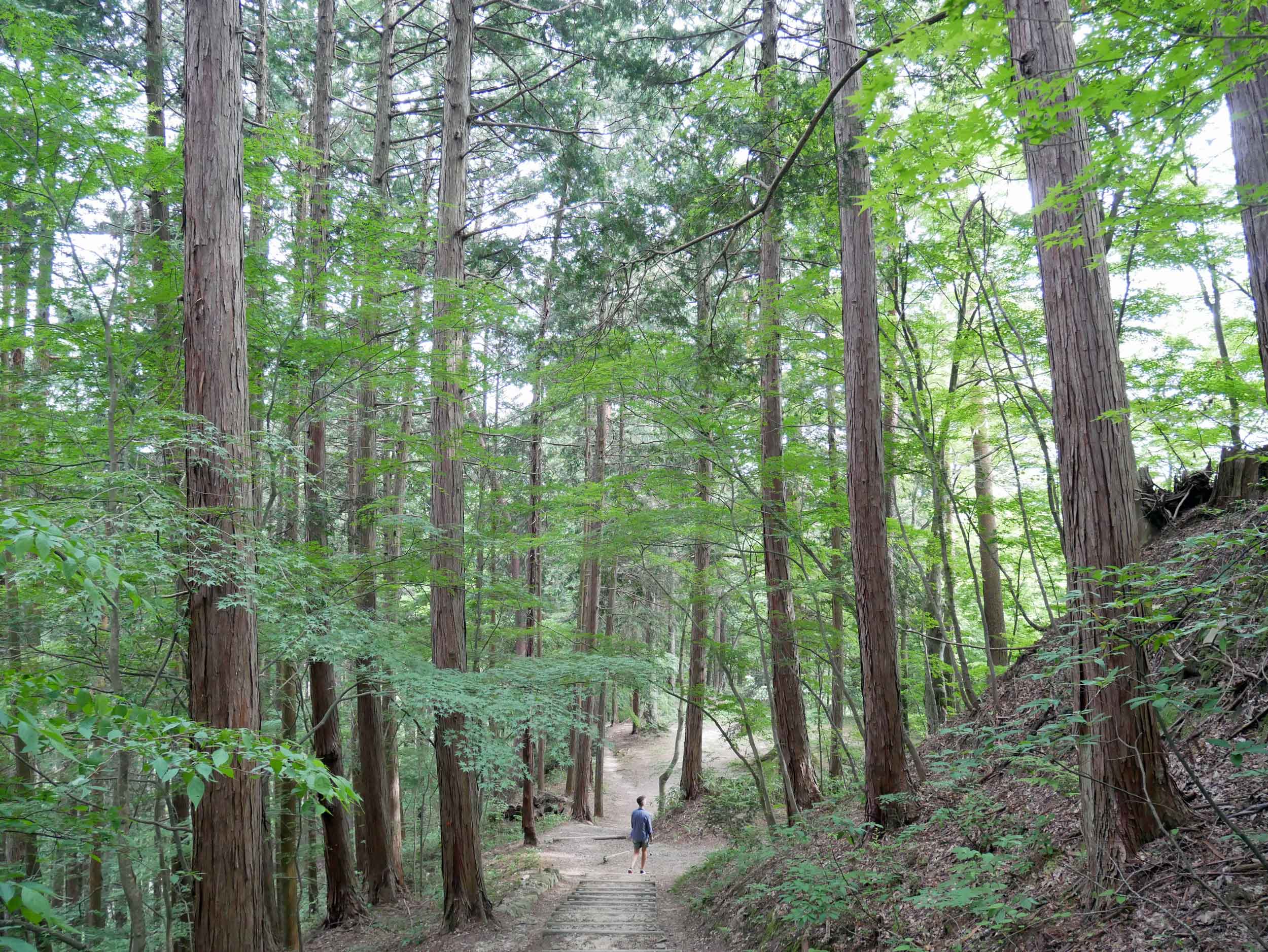
The next morning, we made an early departure for Kamikochi, a delightful little seasonal outpost that serves as the jumping off point for many of the increasingly popular treks in the region. The Hida mountain range, which envelops you upon arriving in the Kamikochi valley, is one of the most striking mountainscapes we had ever seen as the icy, iridescent, glass blue water of the Azusa River slices the valley in front of the lumbering snowcapped mountains (even in mid-June). Our dreamy meander along the valley trails had us stumbling along as we gazed in every direction but down (mind the monkey poo!), only to be brought to attention from time to time by the sound of oncoming bear bells that the fully kitted-out Japanese trekkers donned on their day packs (hiking has recently gained significant popularity by locals). The crisp, sunny morning stroll gave new life to our travel-weary bones, and reaffirmed for us the restorative benefits of forest bathing.
To further relax, we decided that to take a dip in the ubiquitous and essential bathing experience that is Japanese onsen. On our return to Kamikochi, we took a detour to the Hirayu No Yu Onsen on the grounds of the local Folk Museum. Quite the experience—it was very hot!—, we were at first alone, which was convenient for not embarrassing ourselves by committing, we’re sure, many a cultural faux pas. However, we were soon joined by a young Japanese man, who after clumsily entering the near boiling water, came over to us with phone in hand to take selfies. Keep in mind, onsen baths are traditionally taken fully nude, and when we had read up on the unwritten rules of the most courteous onsen behavior, photography was obviously considered taboo. But we live in the age of selfie, so who are we to judge? Ensuring that this was in fact one of the best (if not most unique) days ever, we capped the evening off with a delicious second meal of piping hot soba at Ebisu-Honten. Perfection.
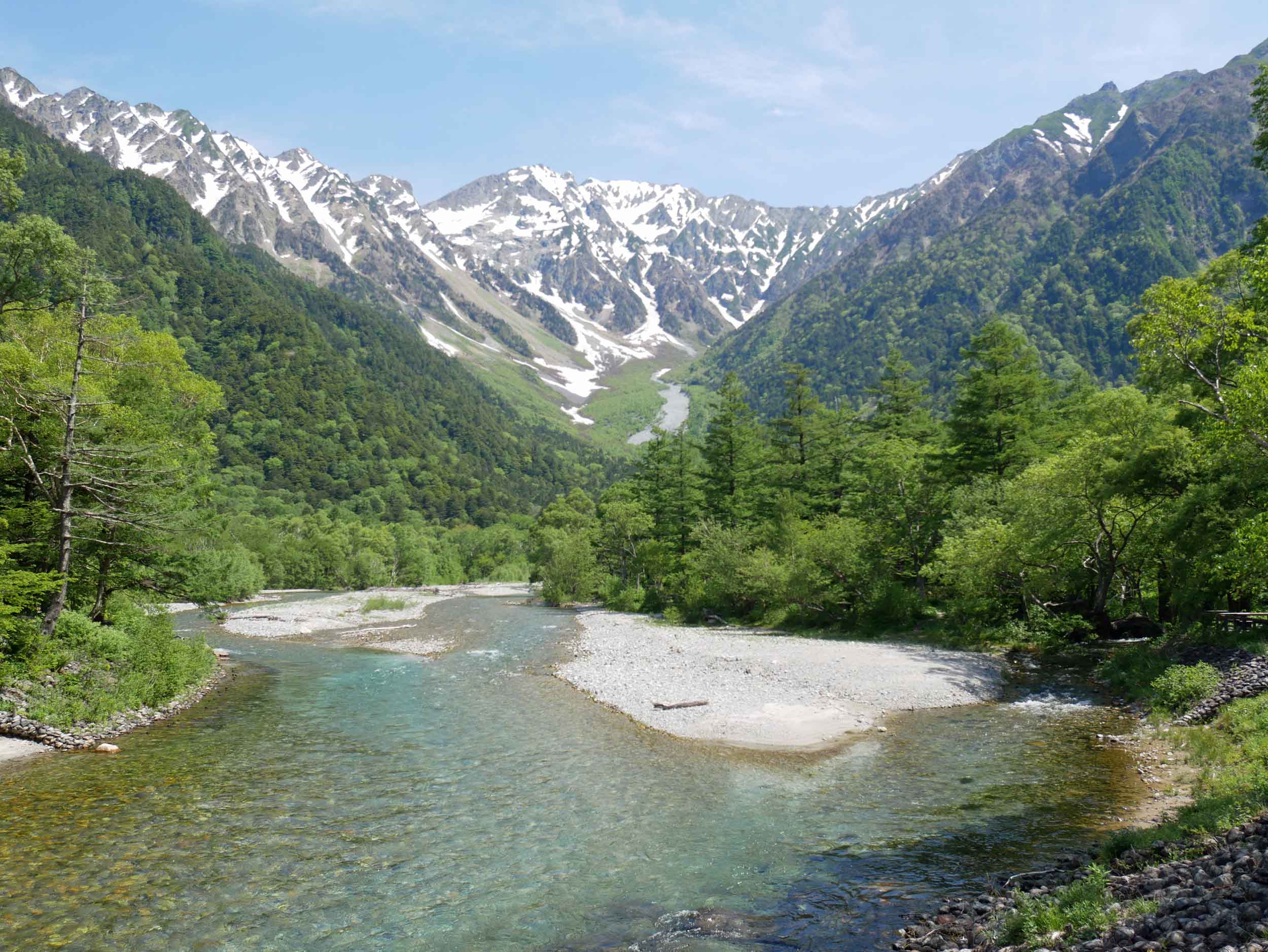
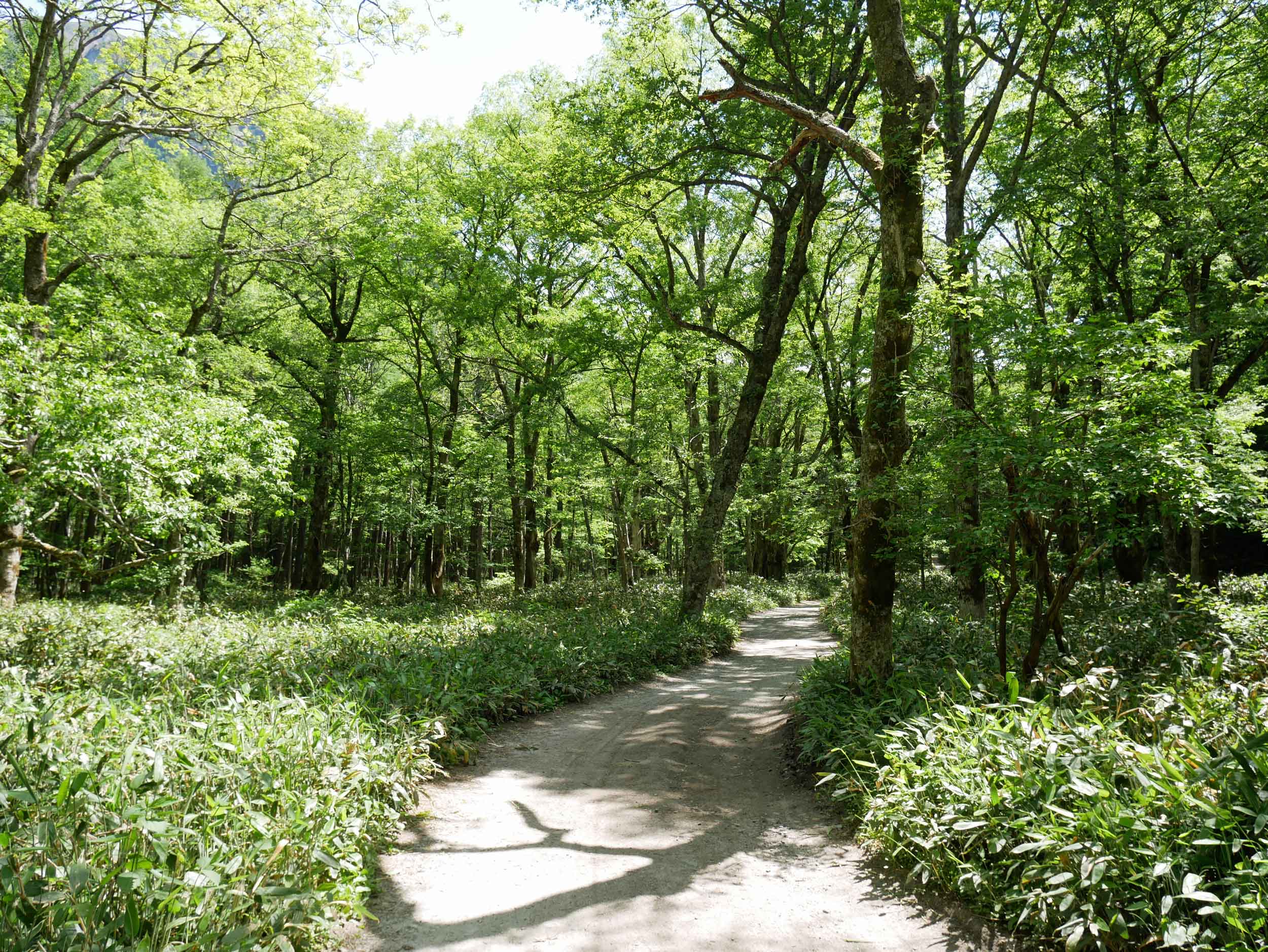
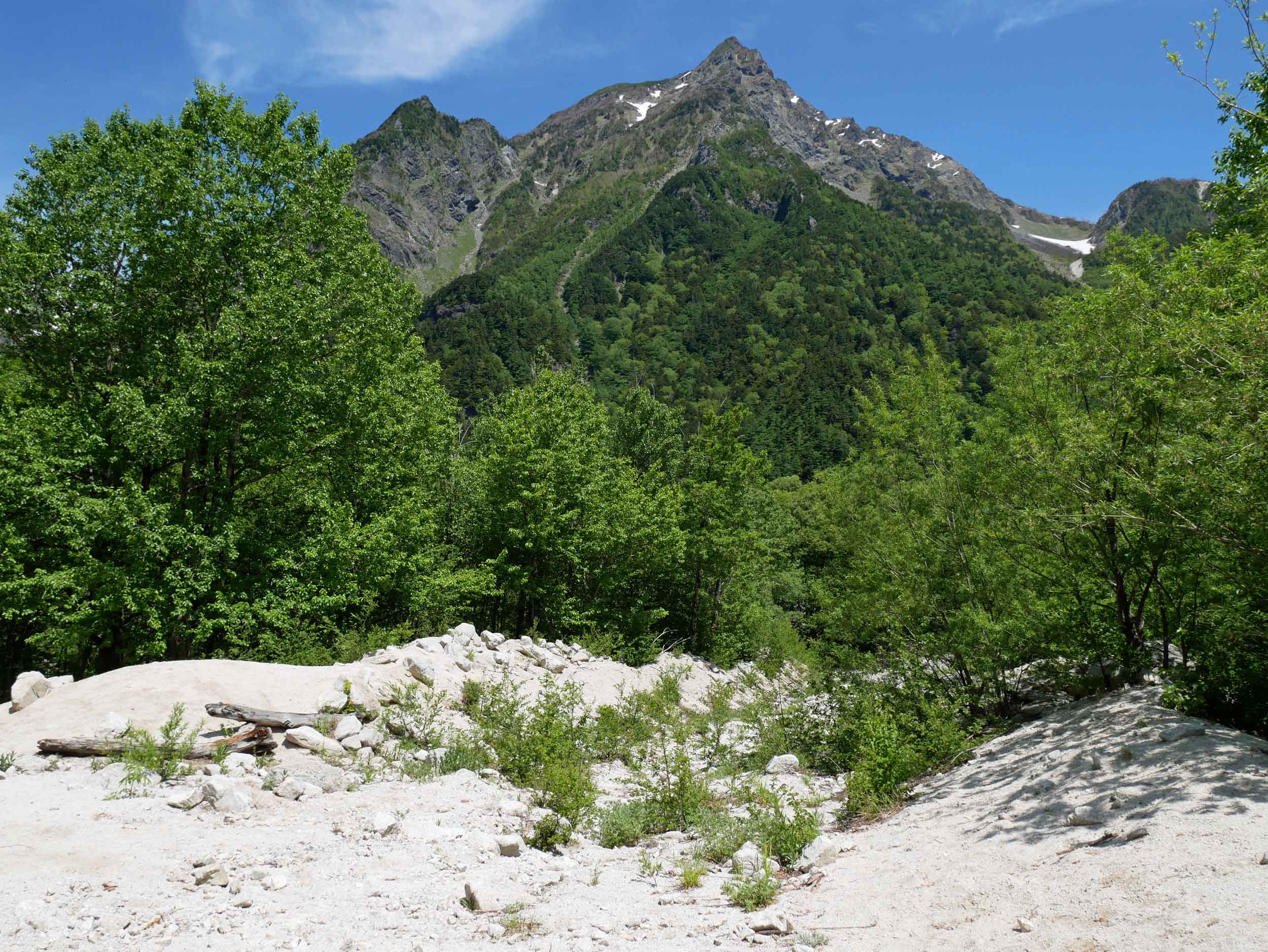

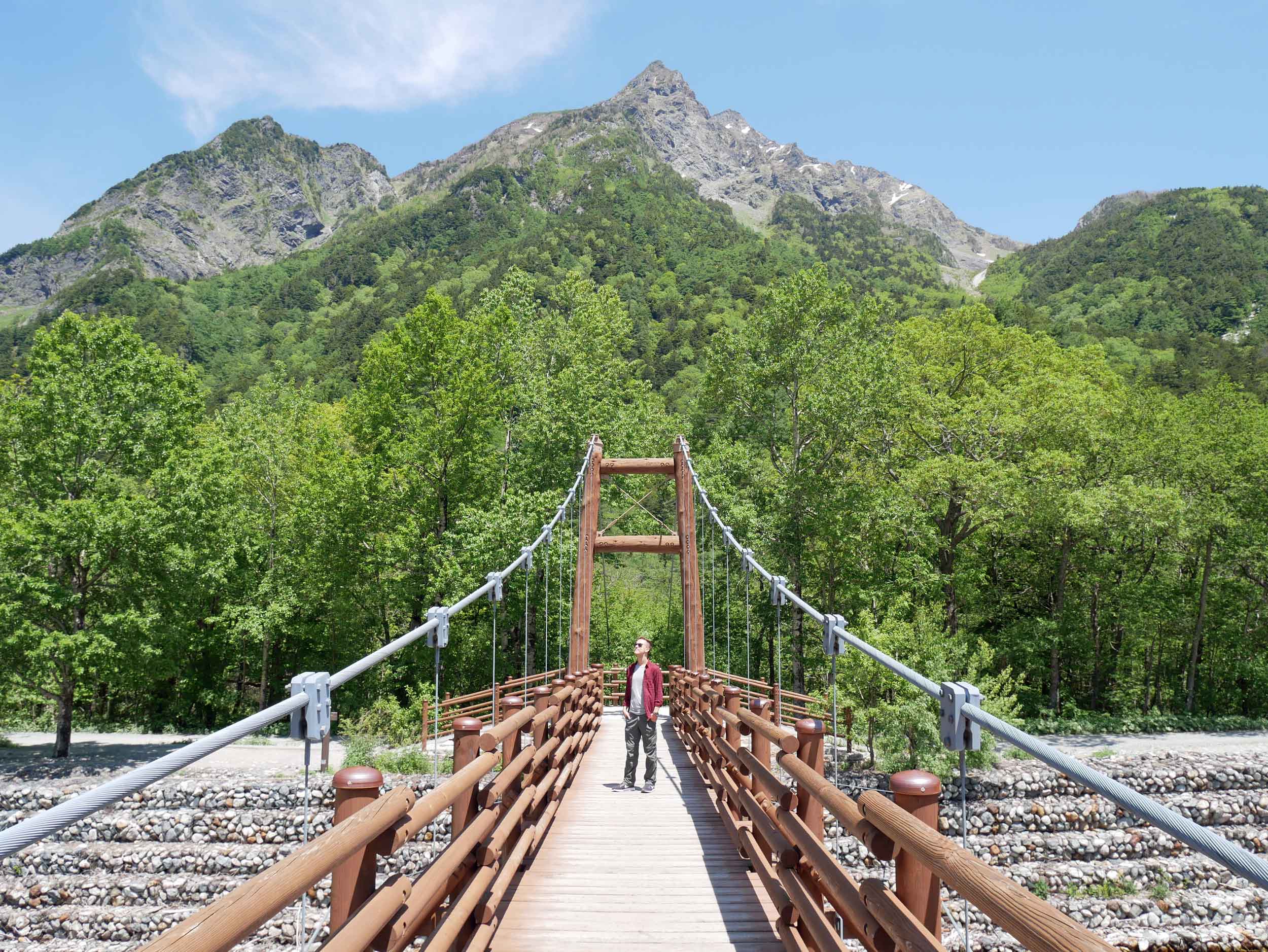

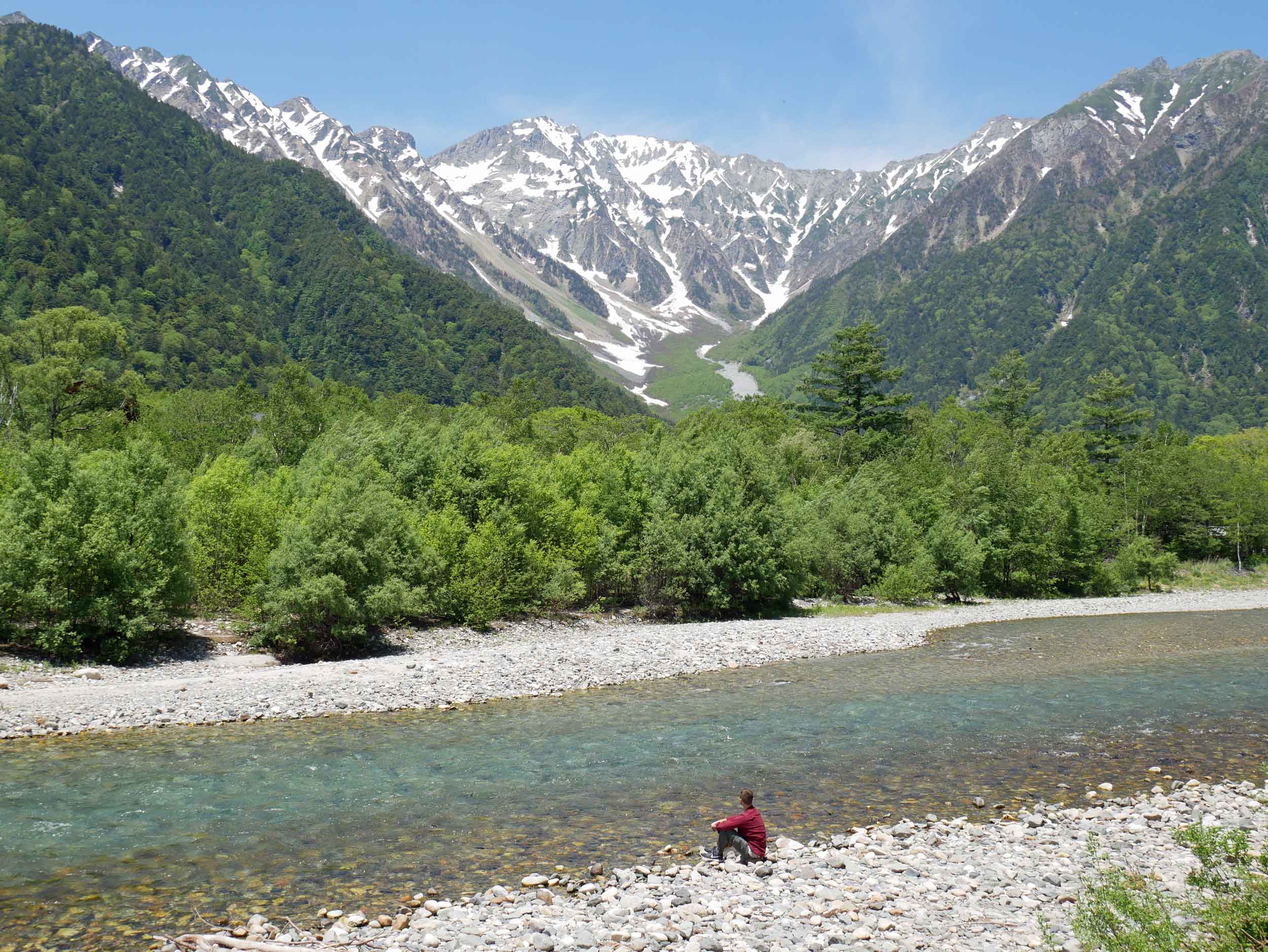

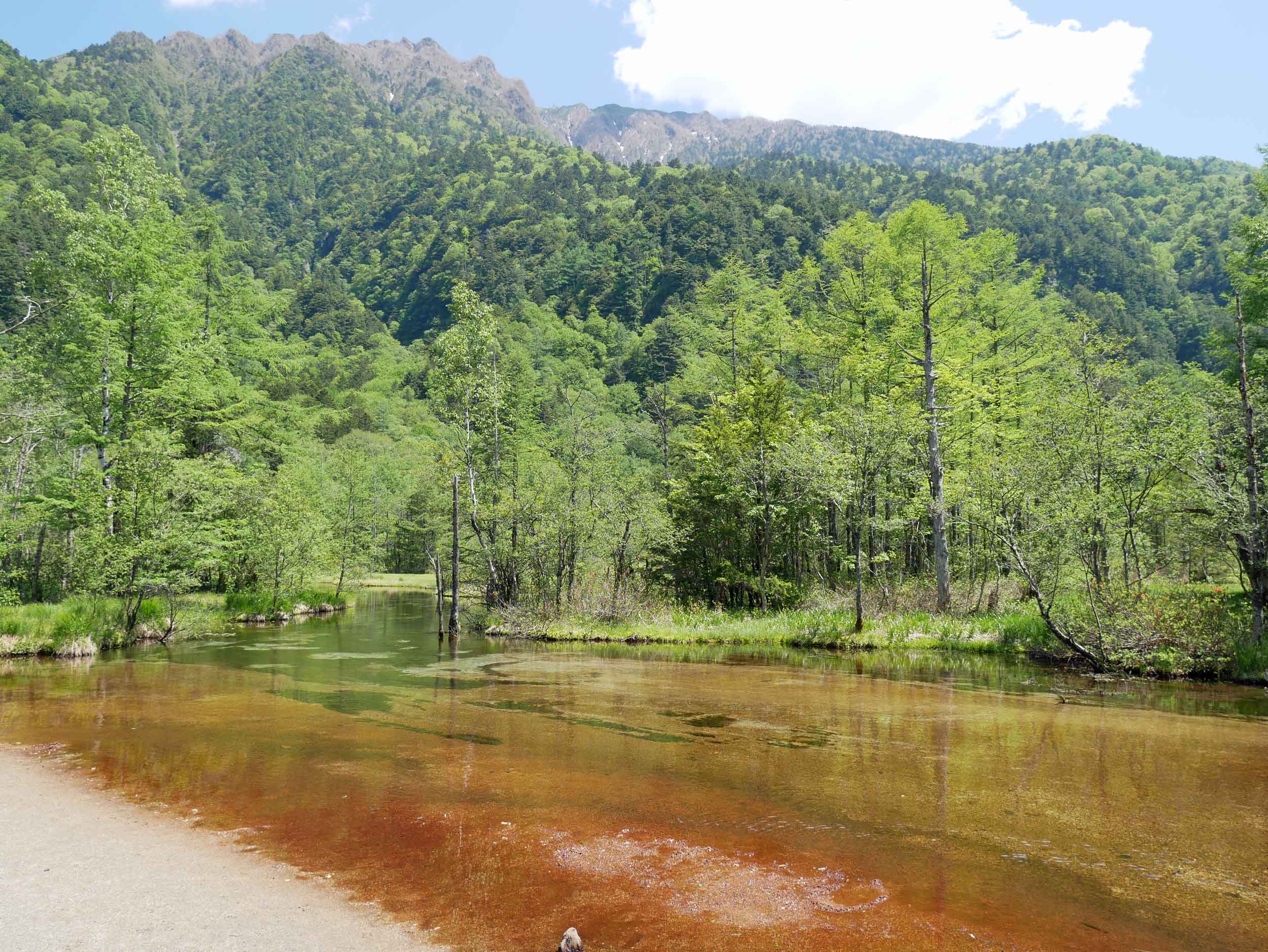
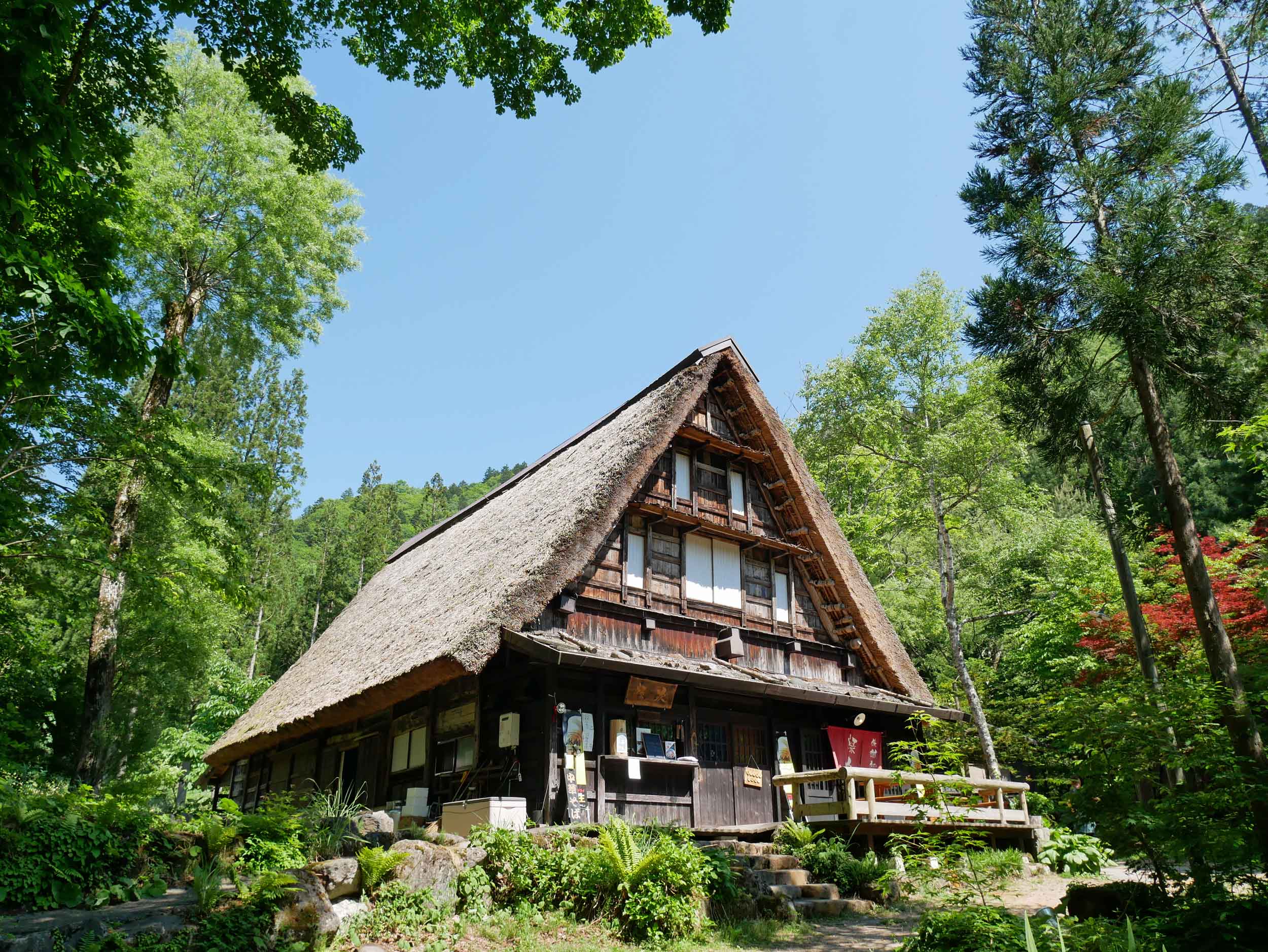
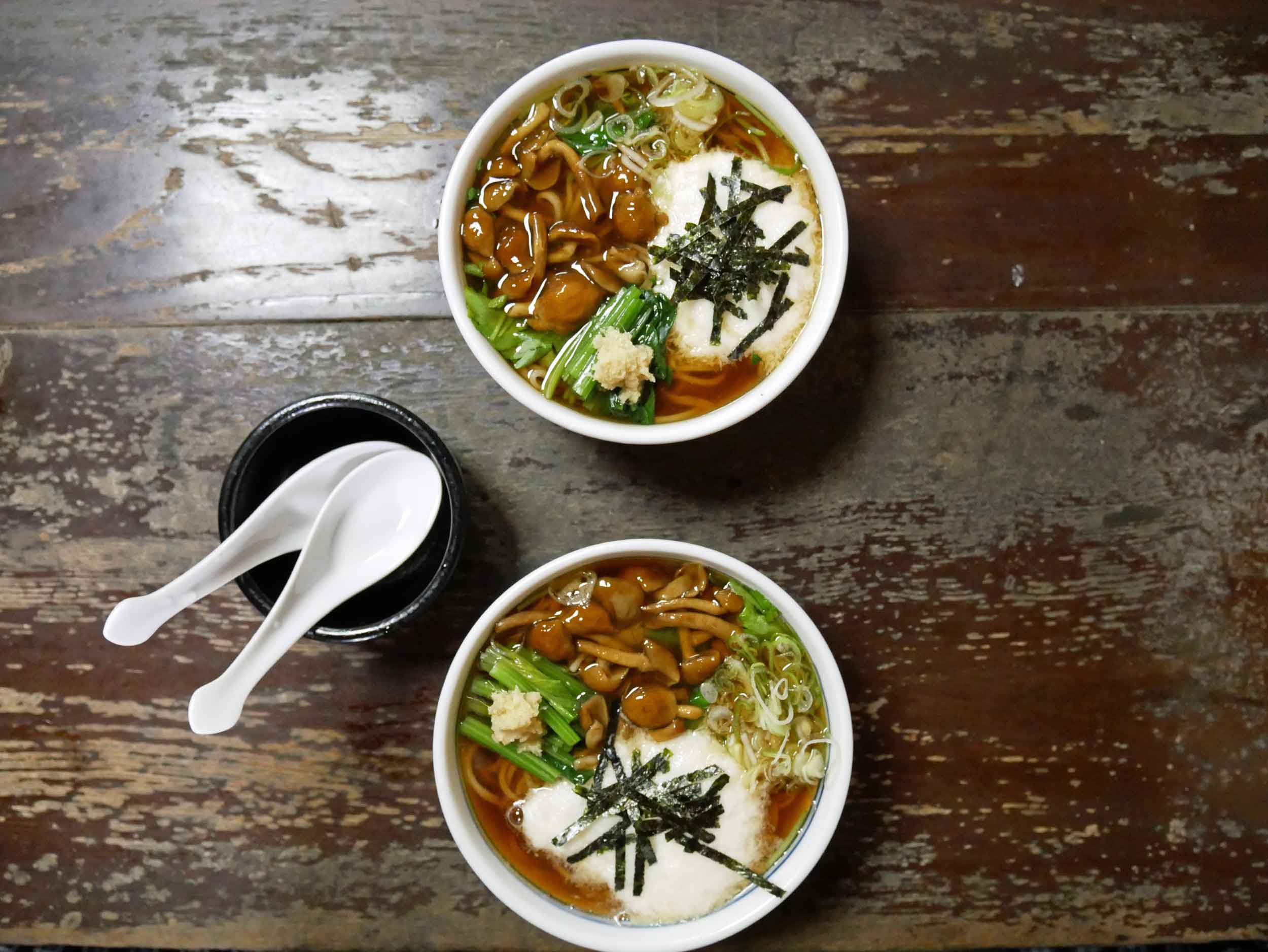
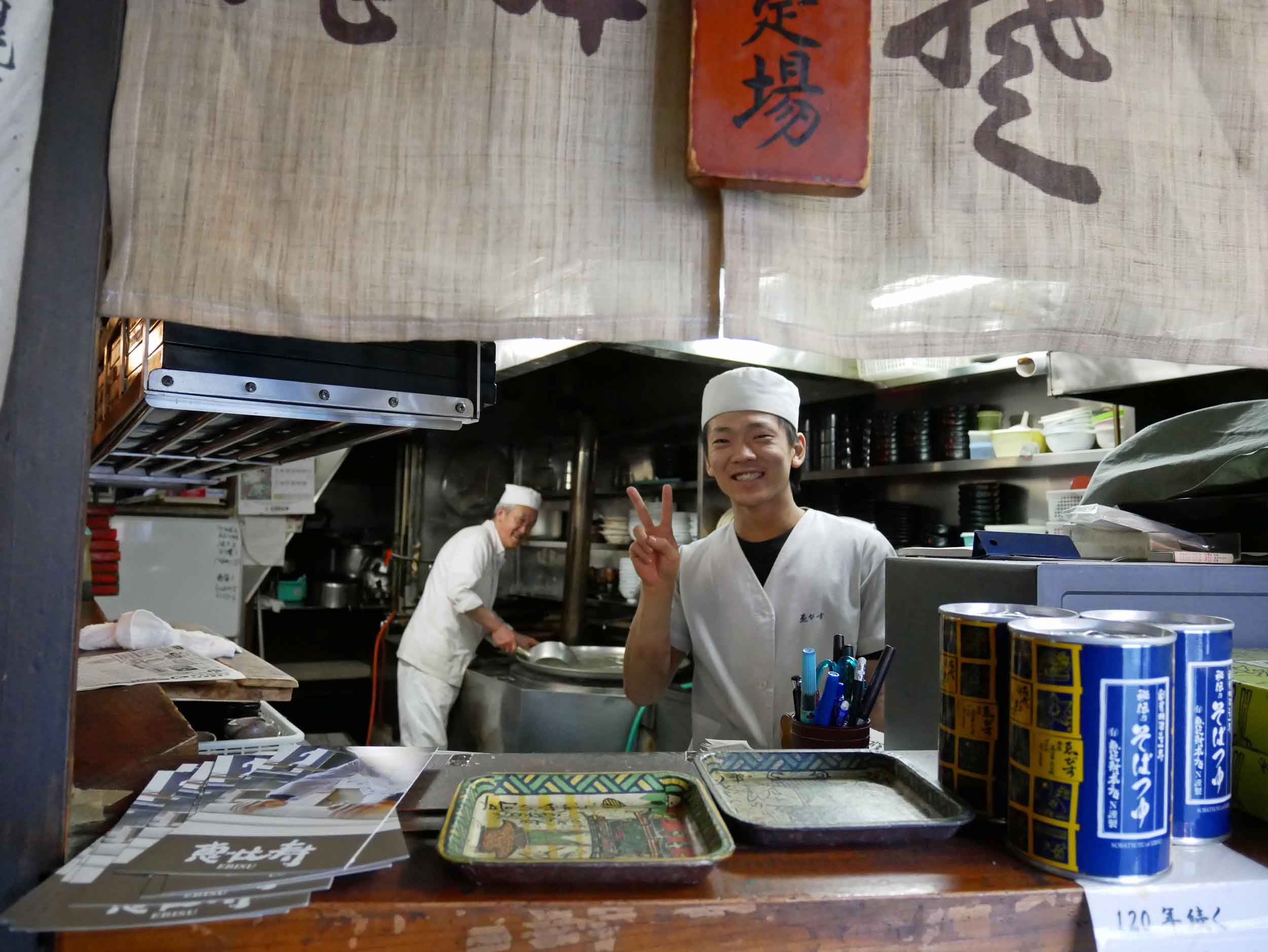
During our short time tracing the popular tourist triangle between Tokyo, Kyoto and Kanazawa/Takayama, we received a tiny taste of the immense and rich culture of Japan. After this breakneck but enlightening tour, we were ready to go even further in our understanding of the daily life and customs of the country, so we set out on the long train journey north where we would spend the next week living with a Japanese family and volunteering on their organic farm.
